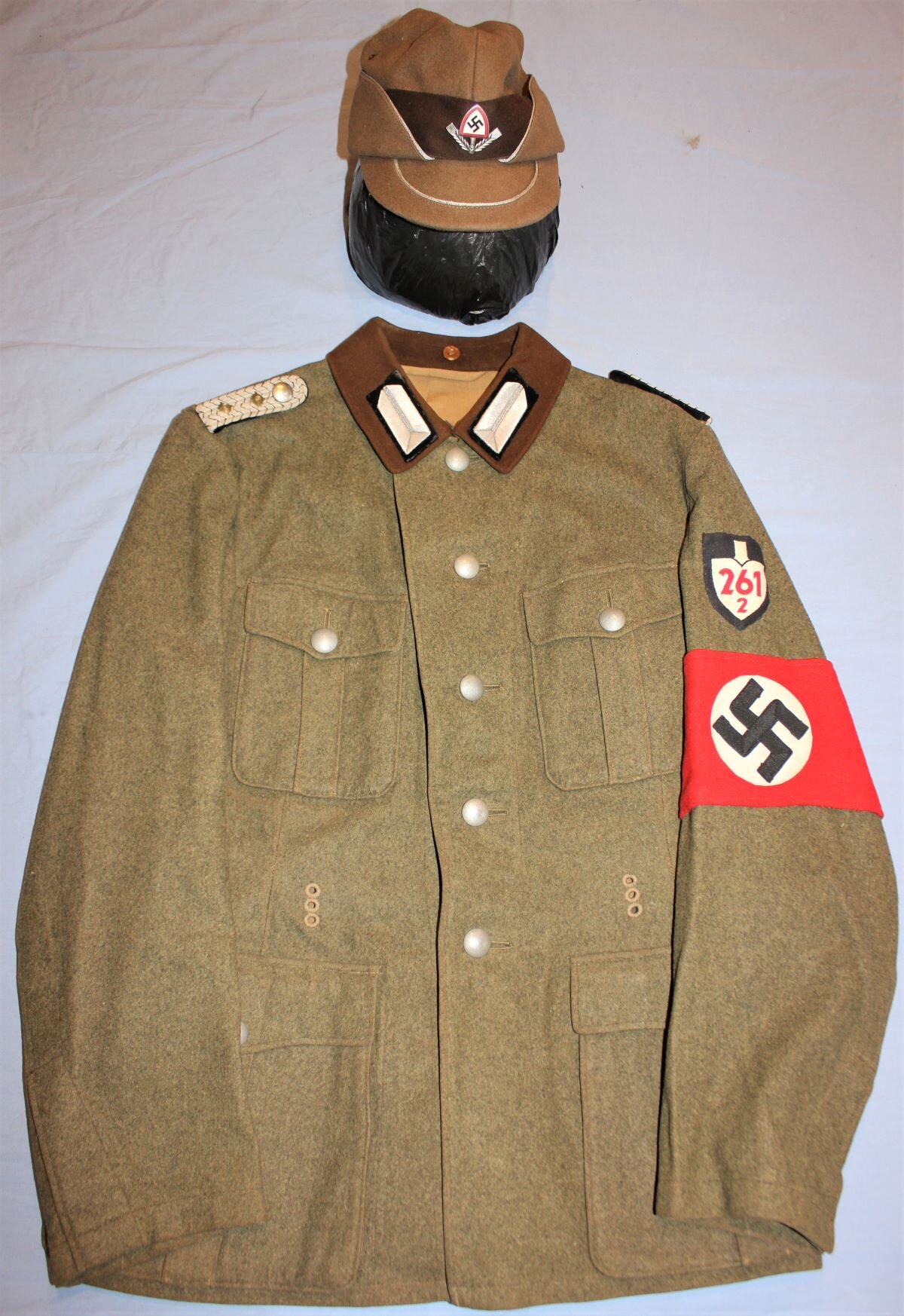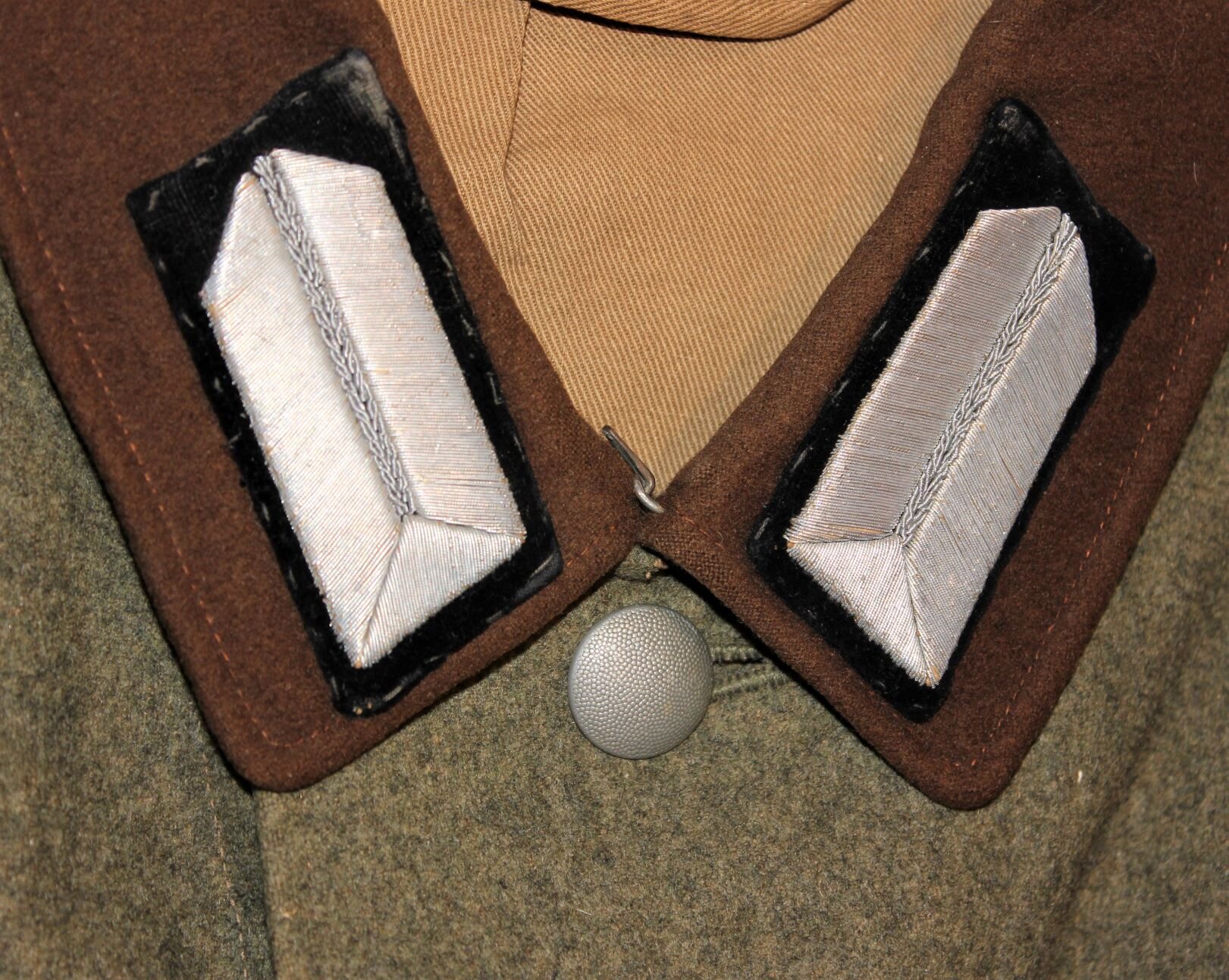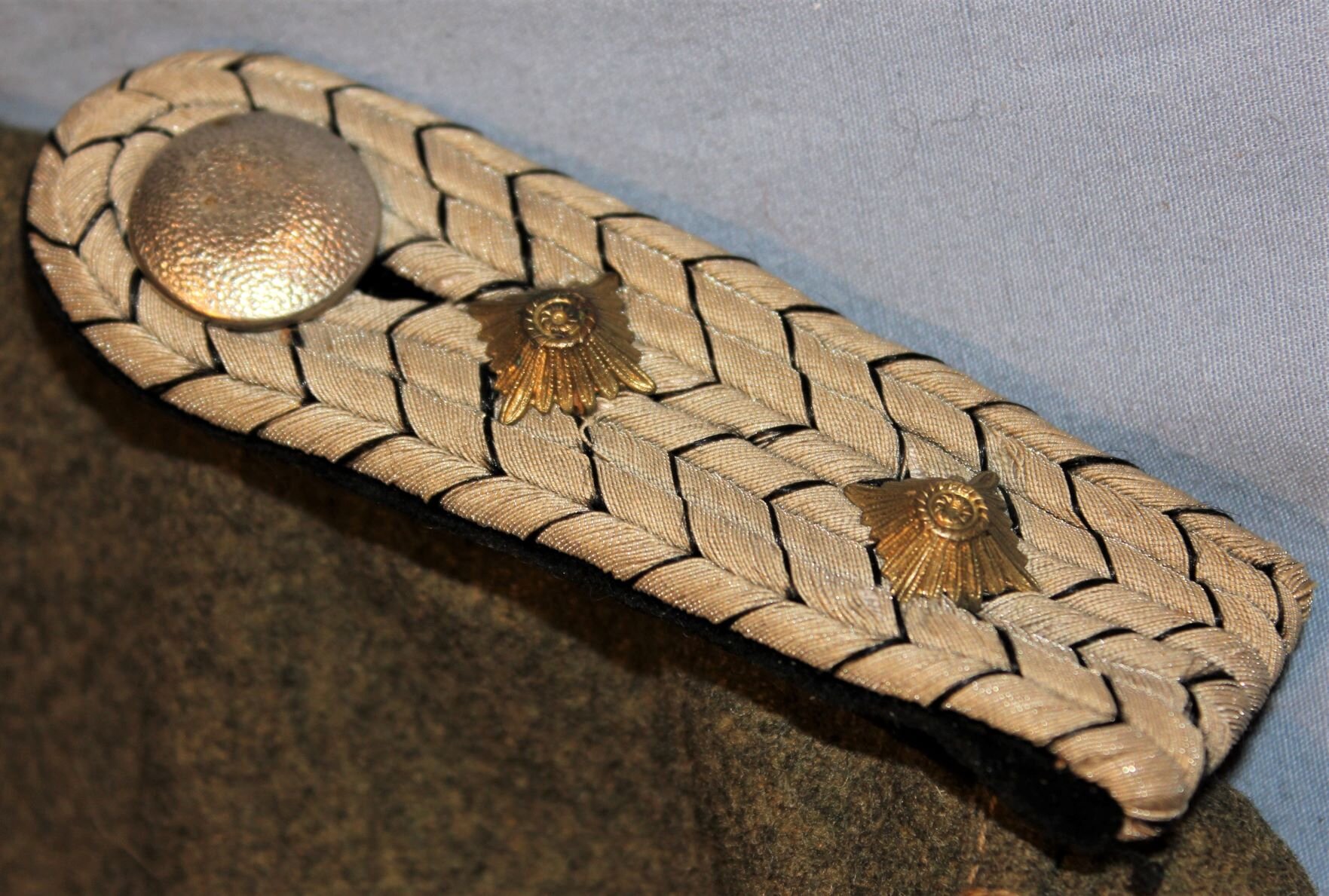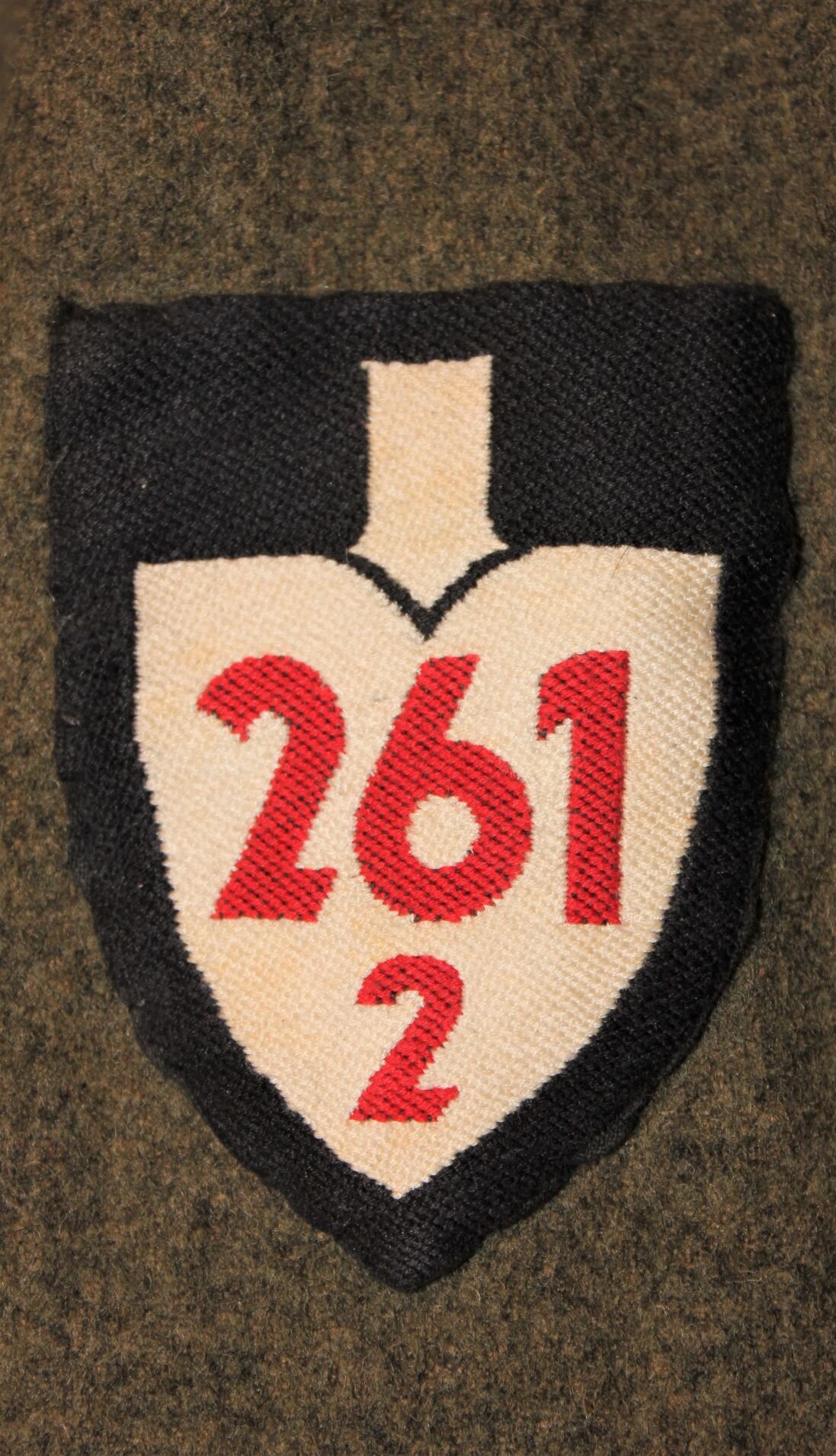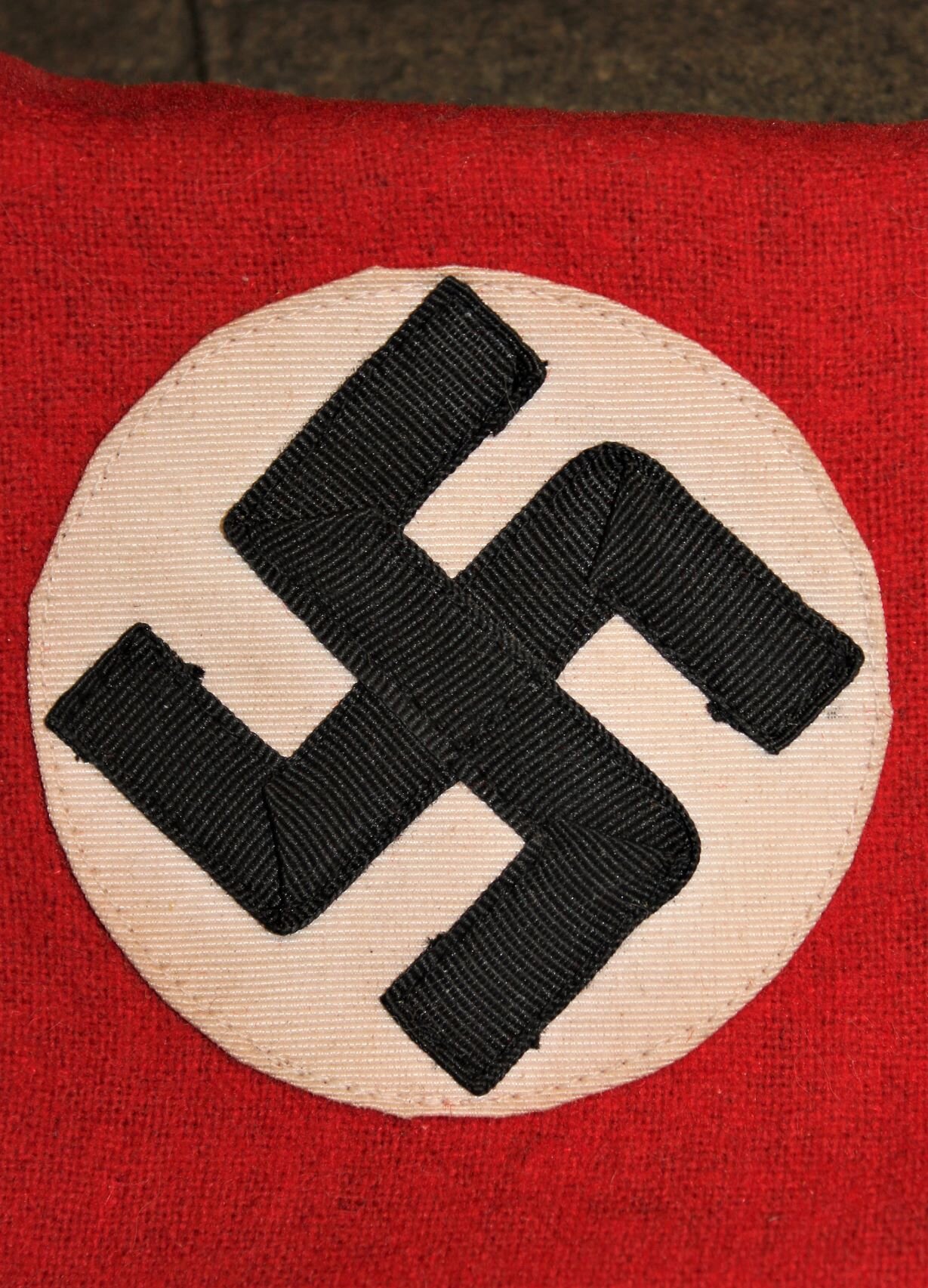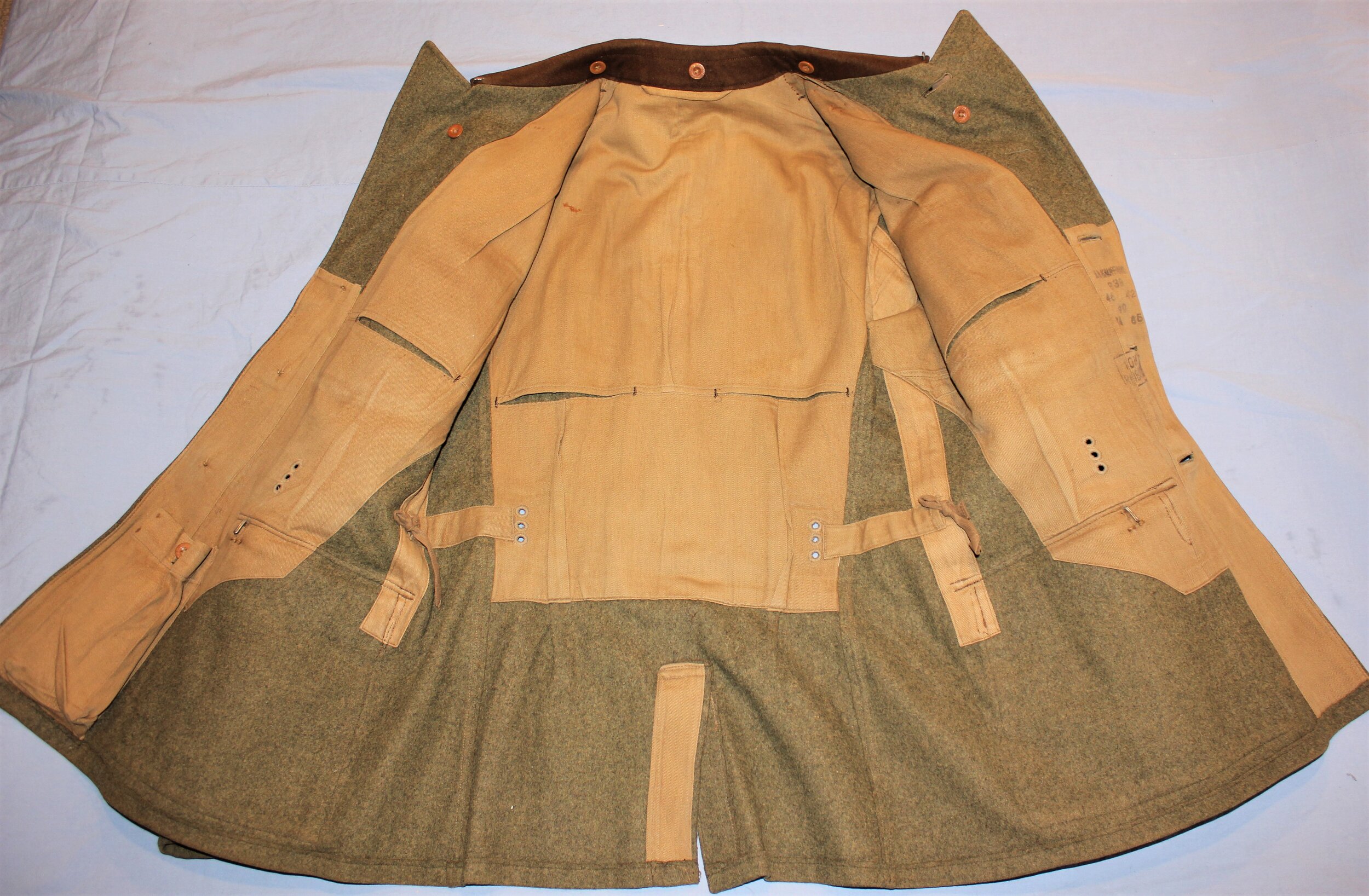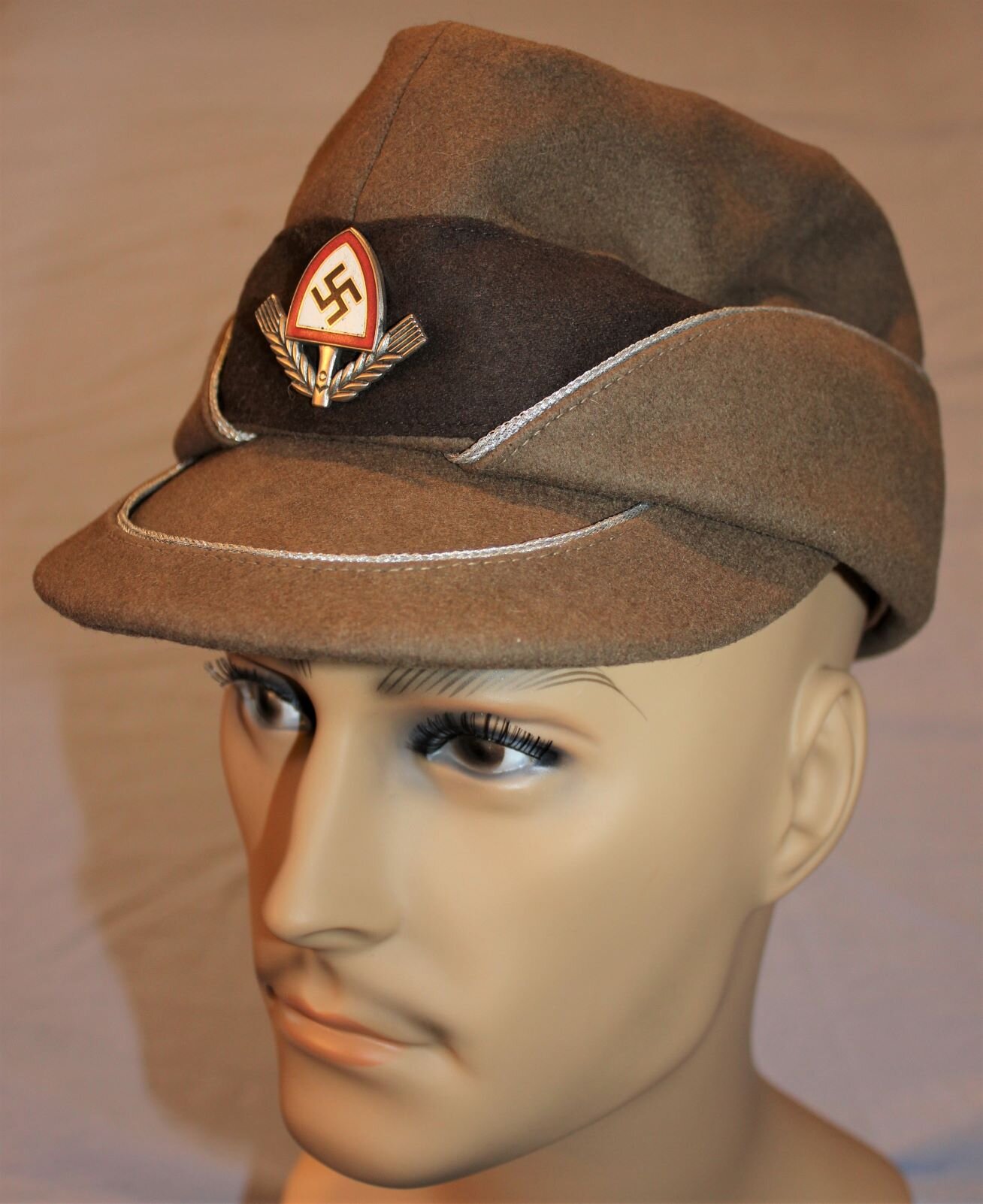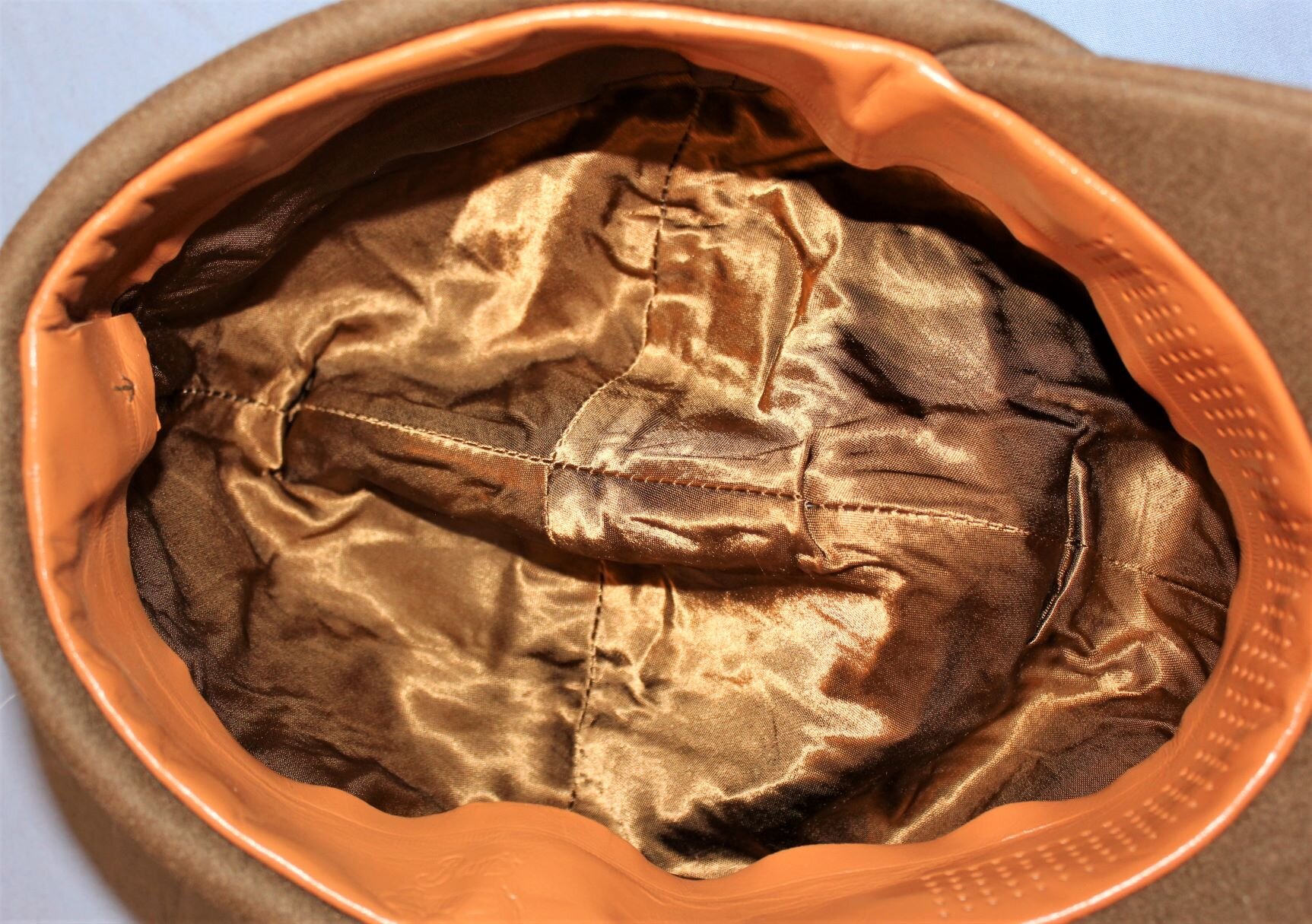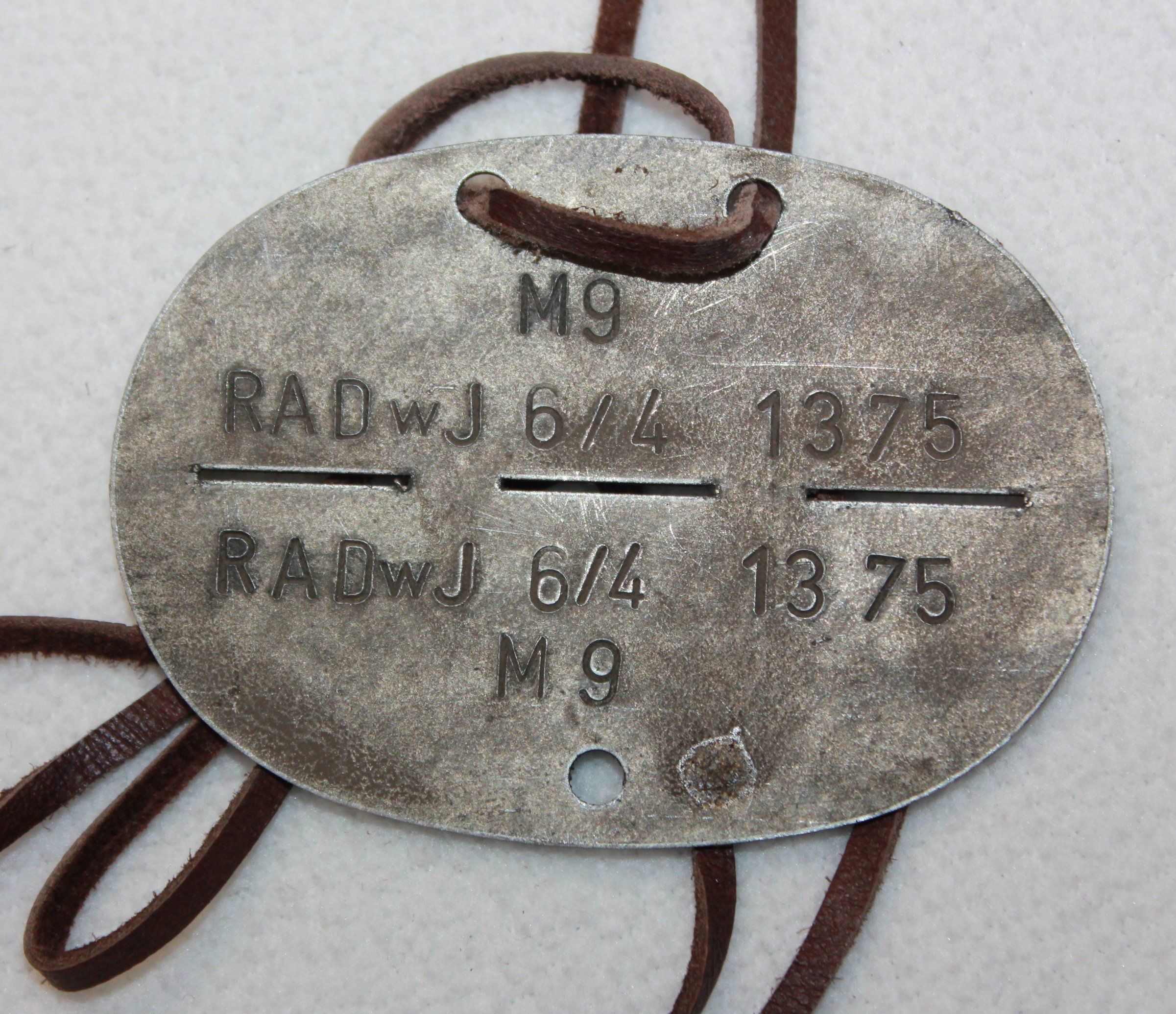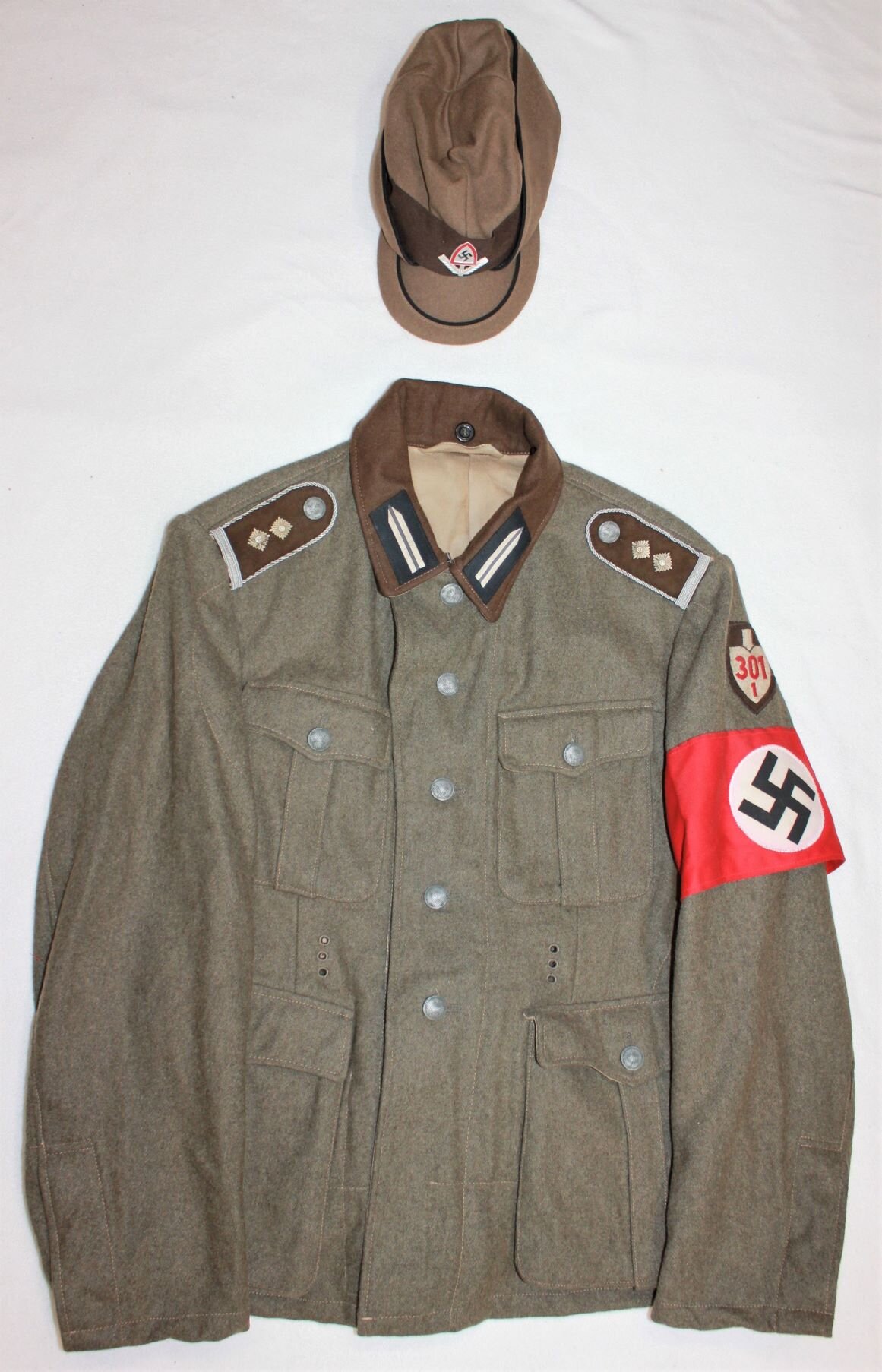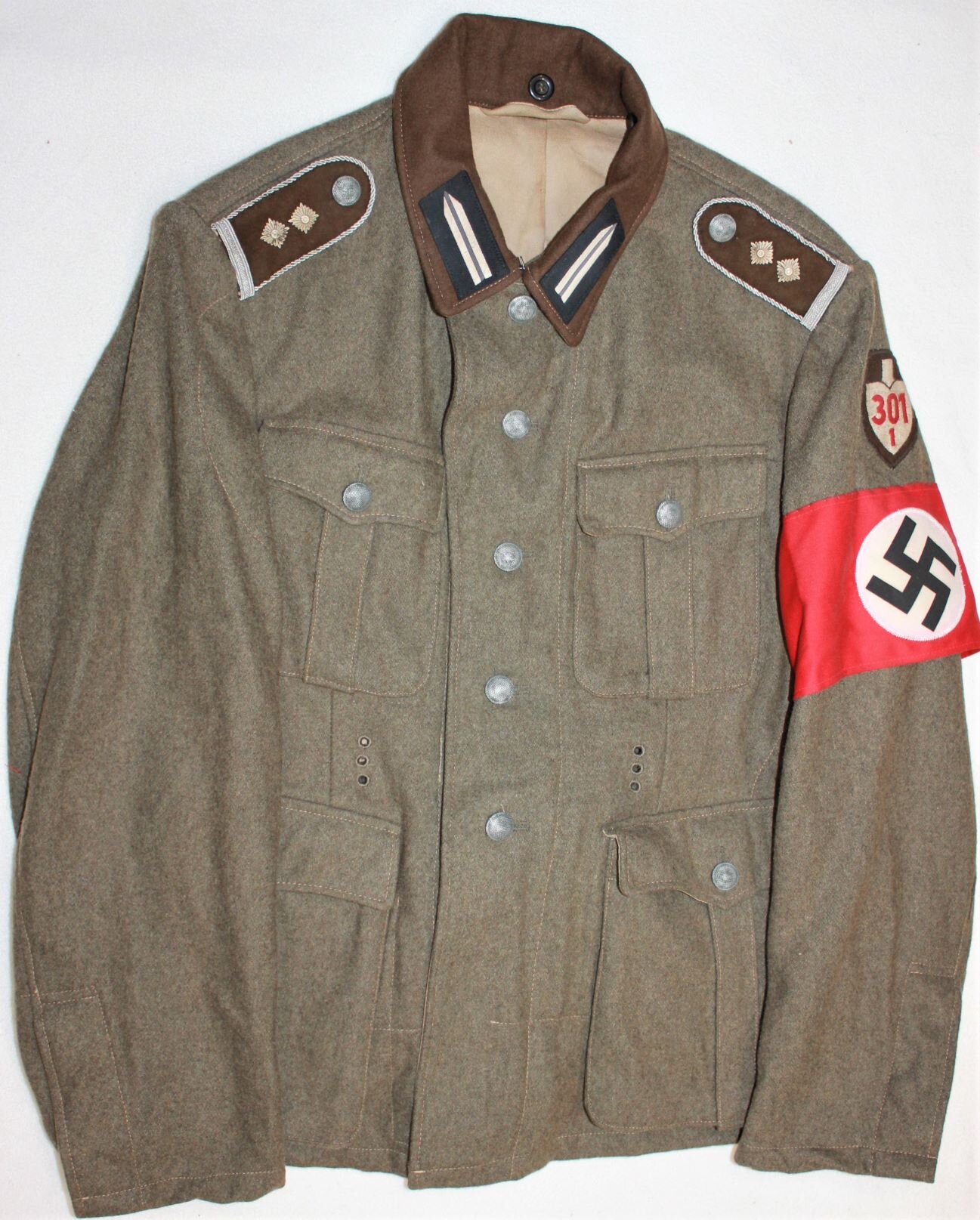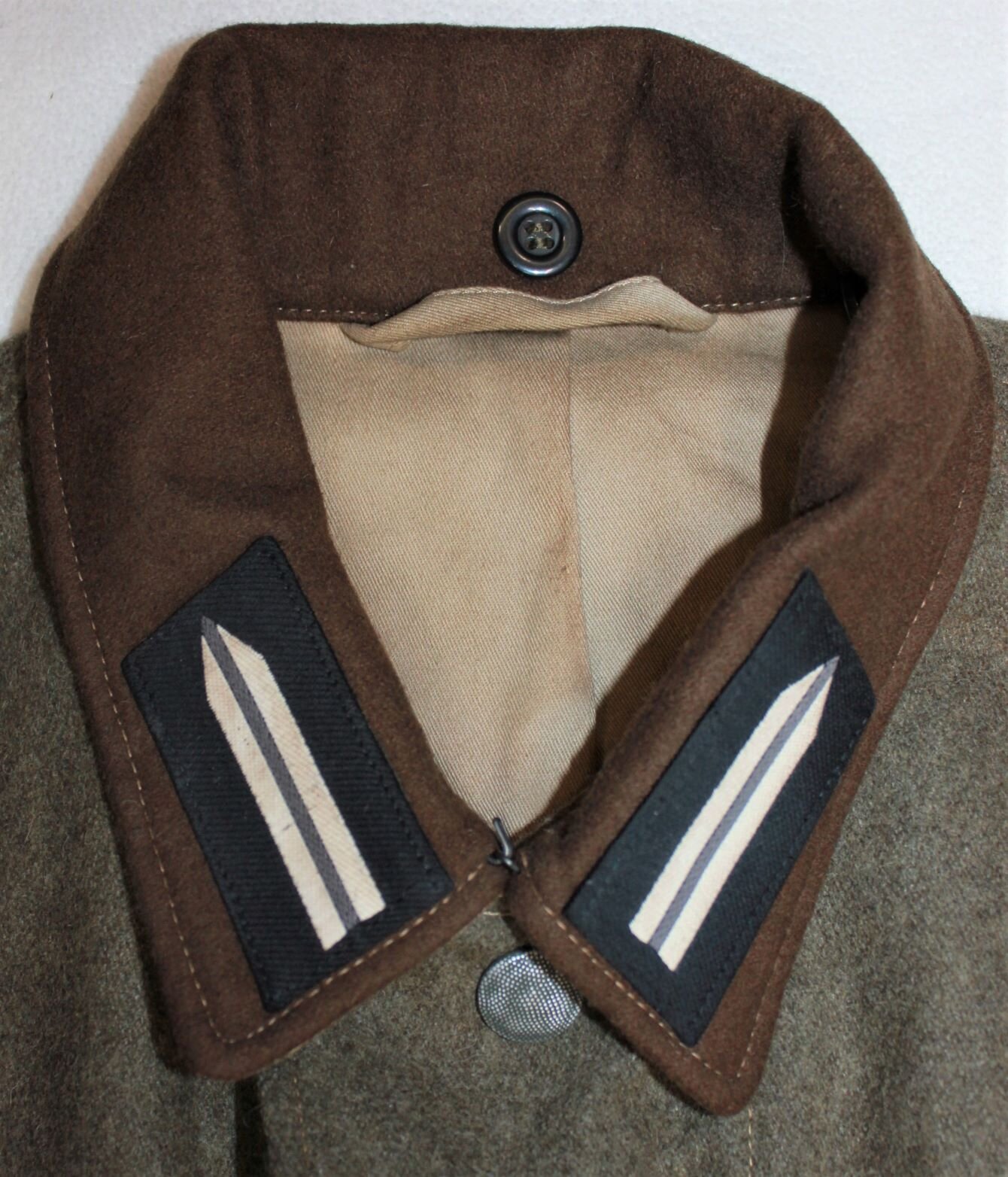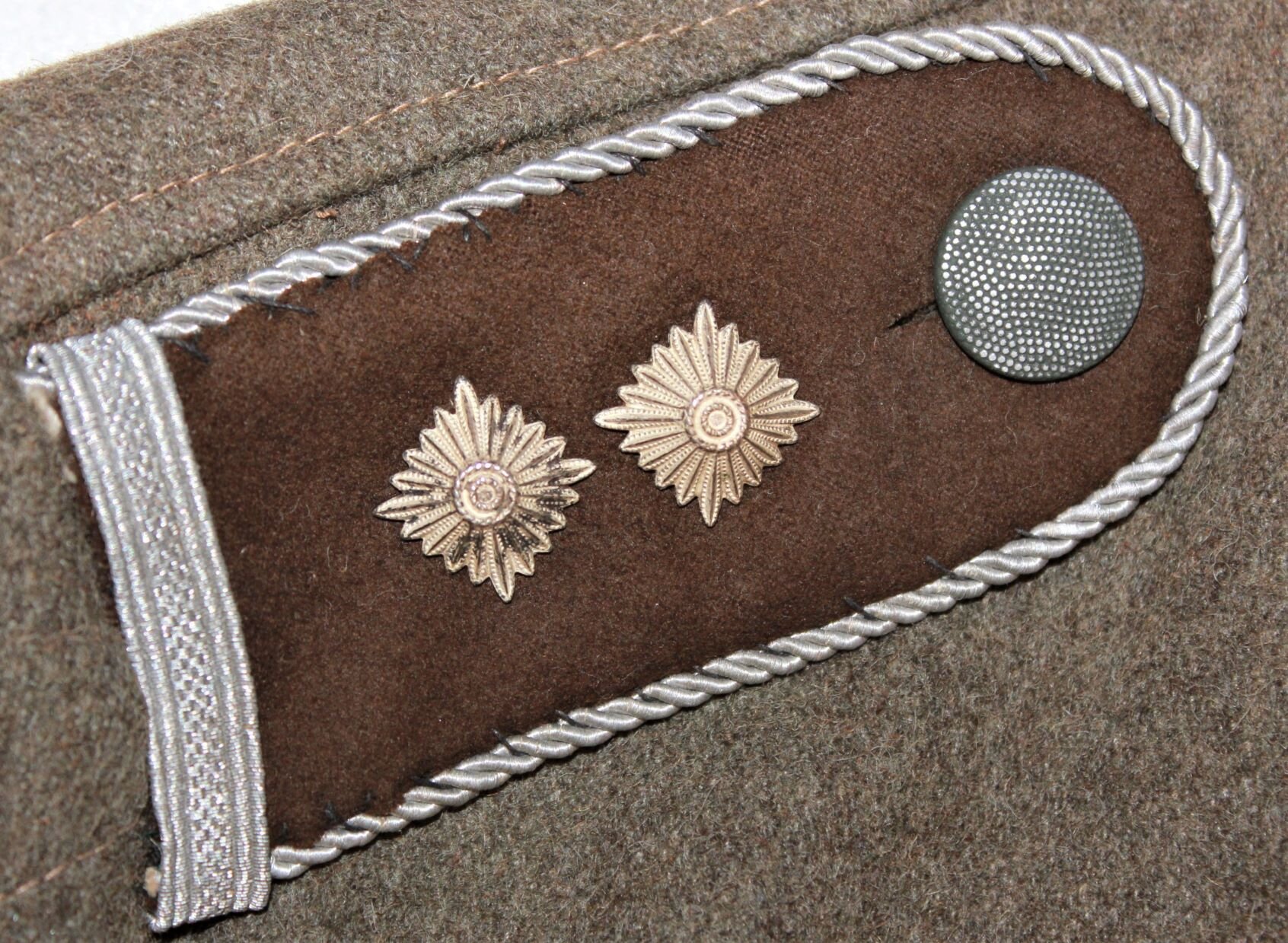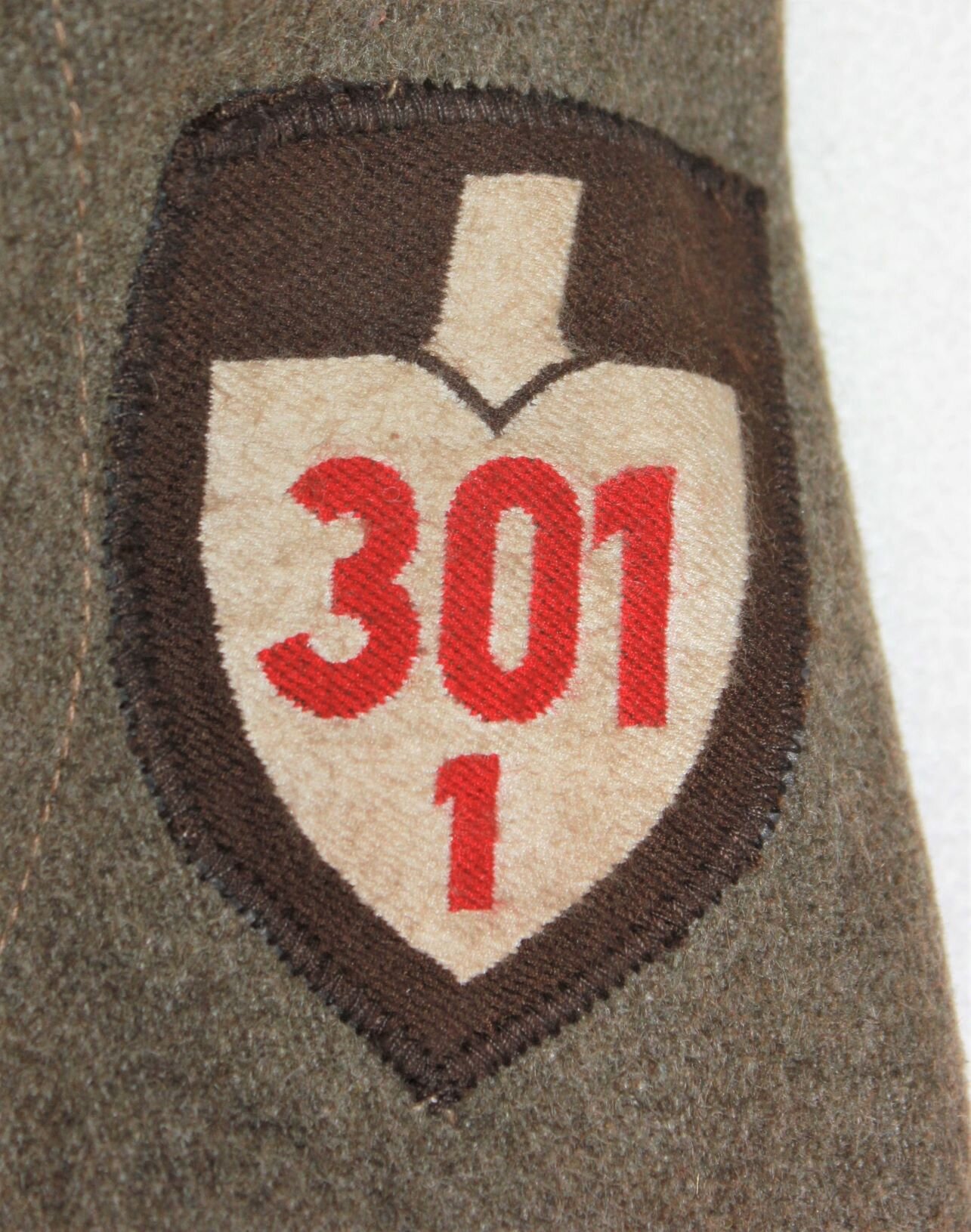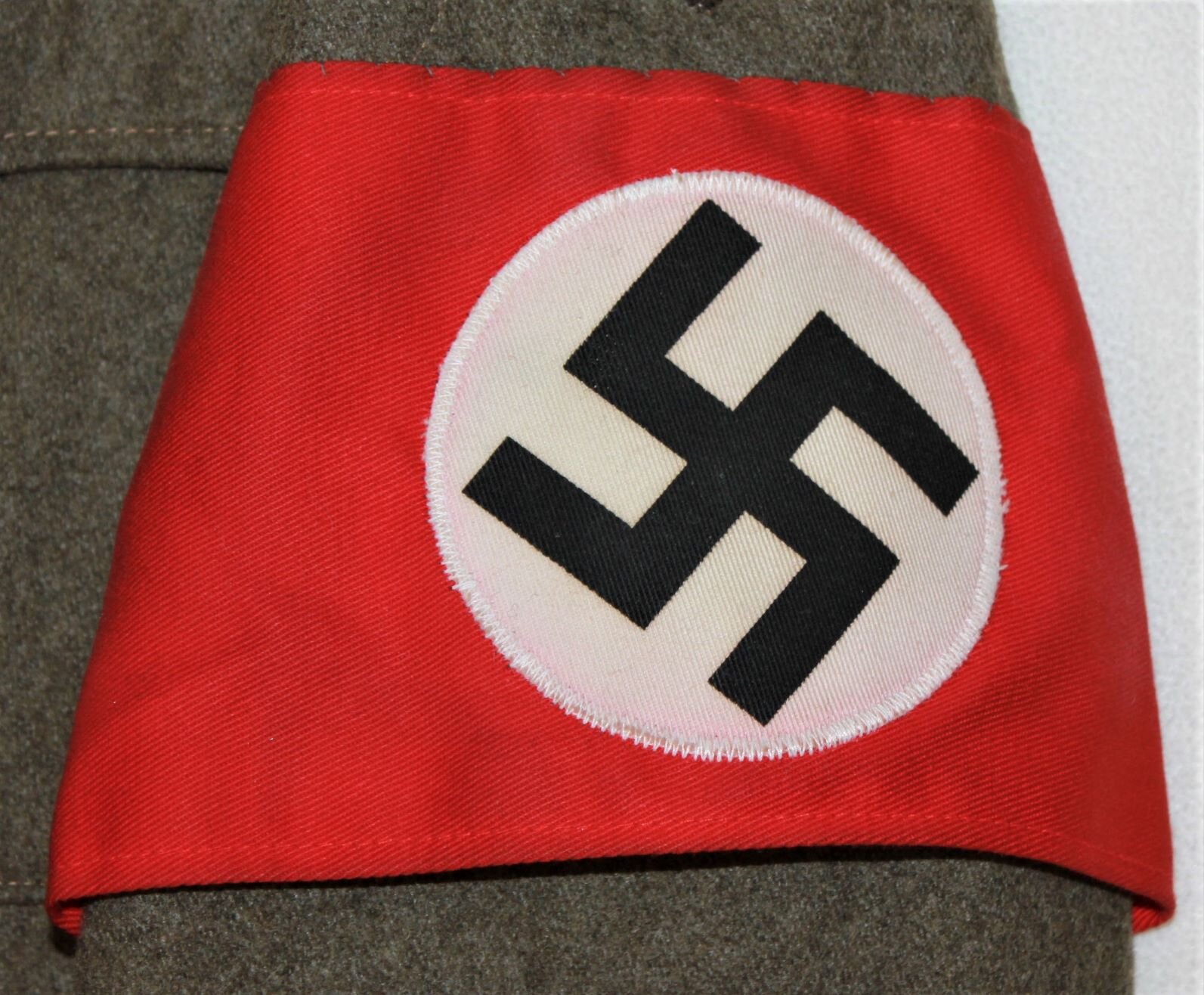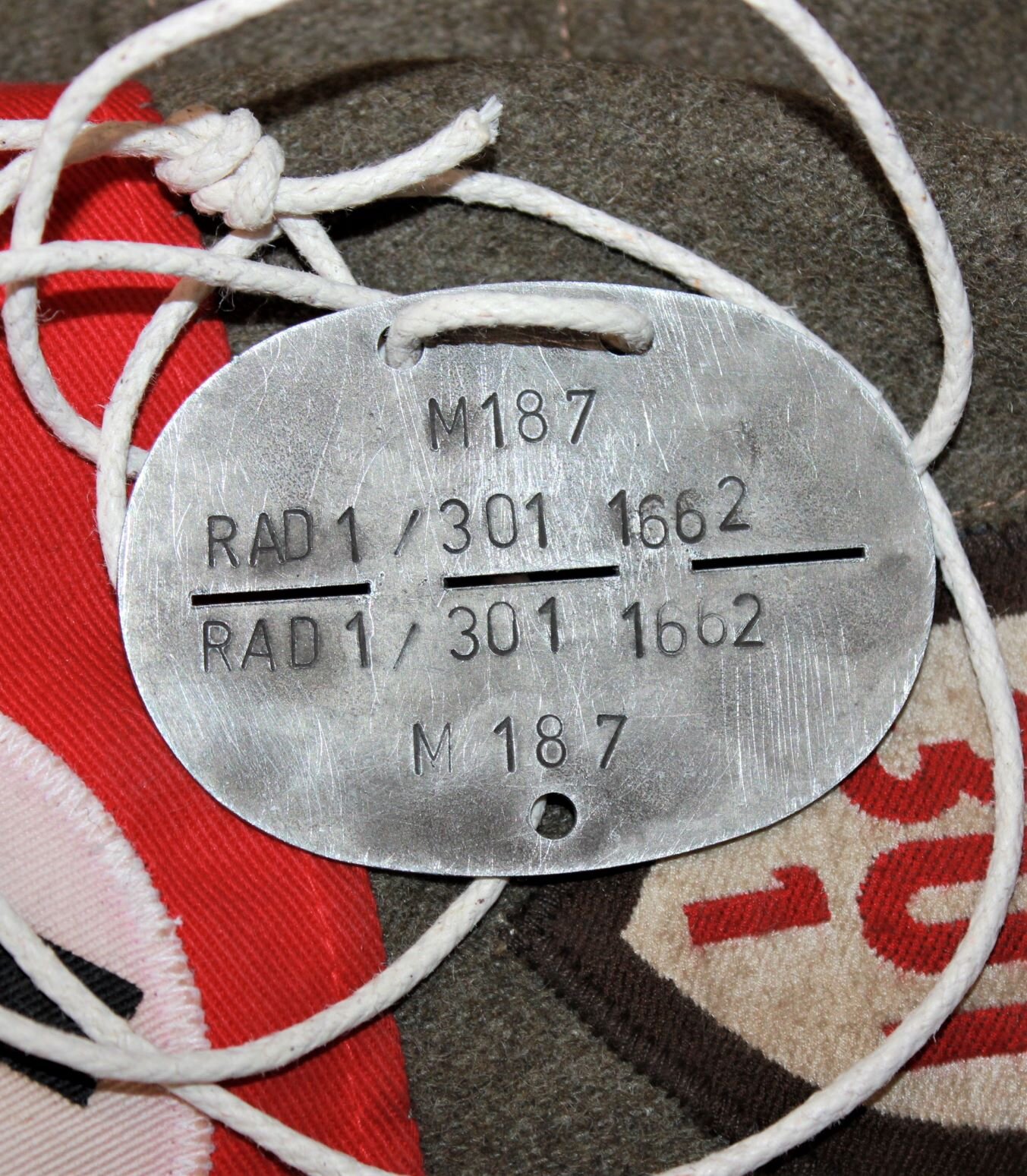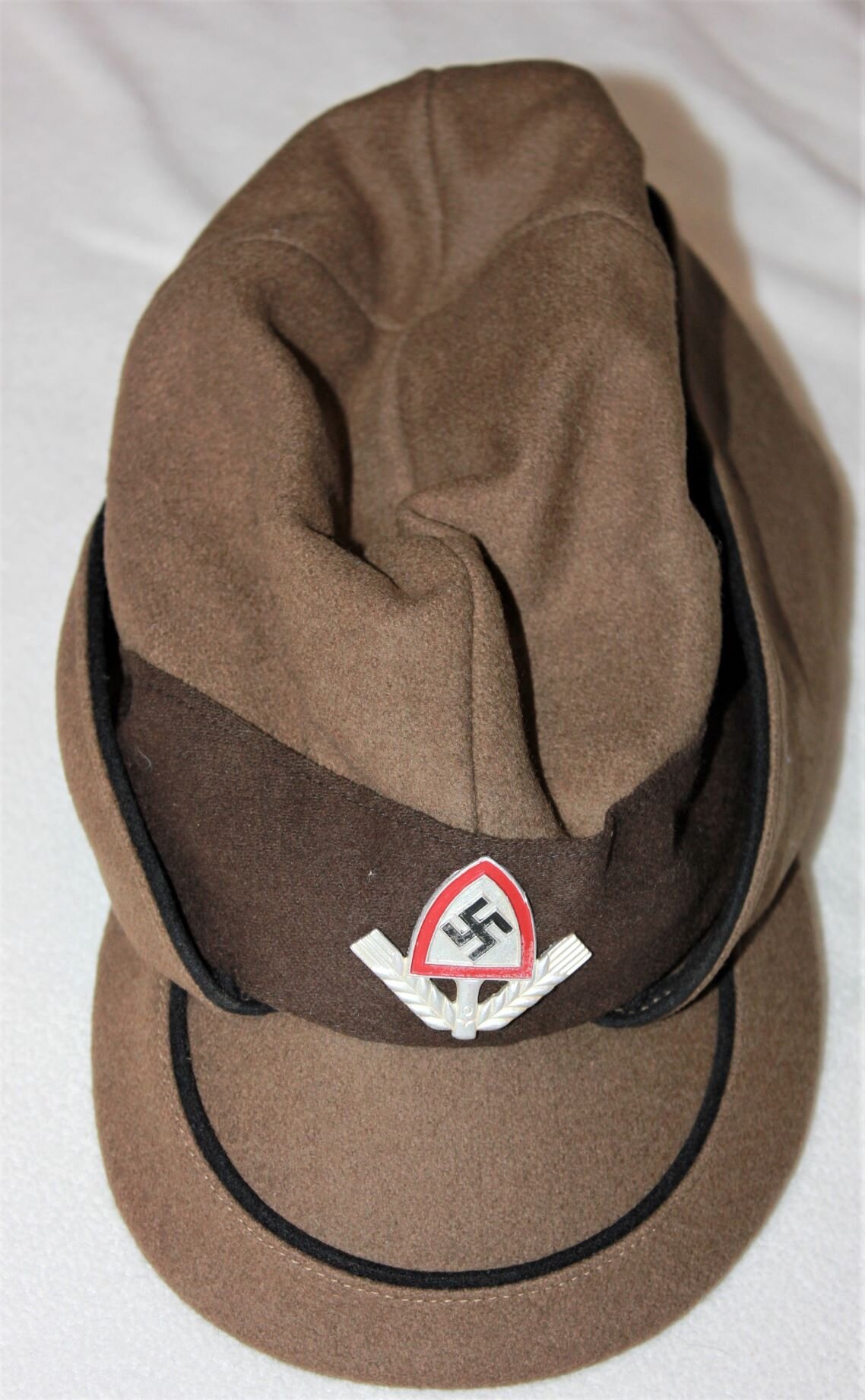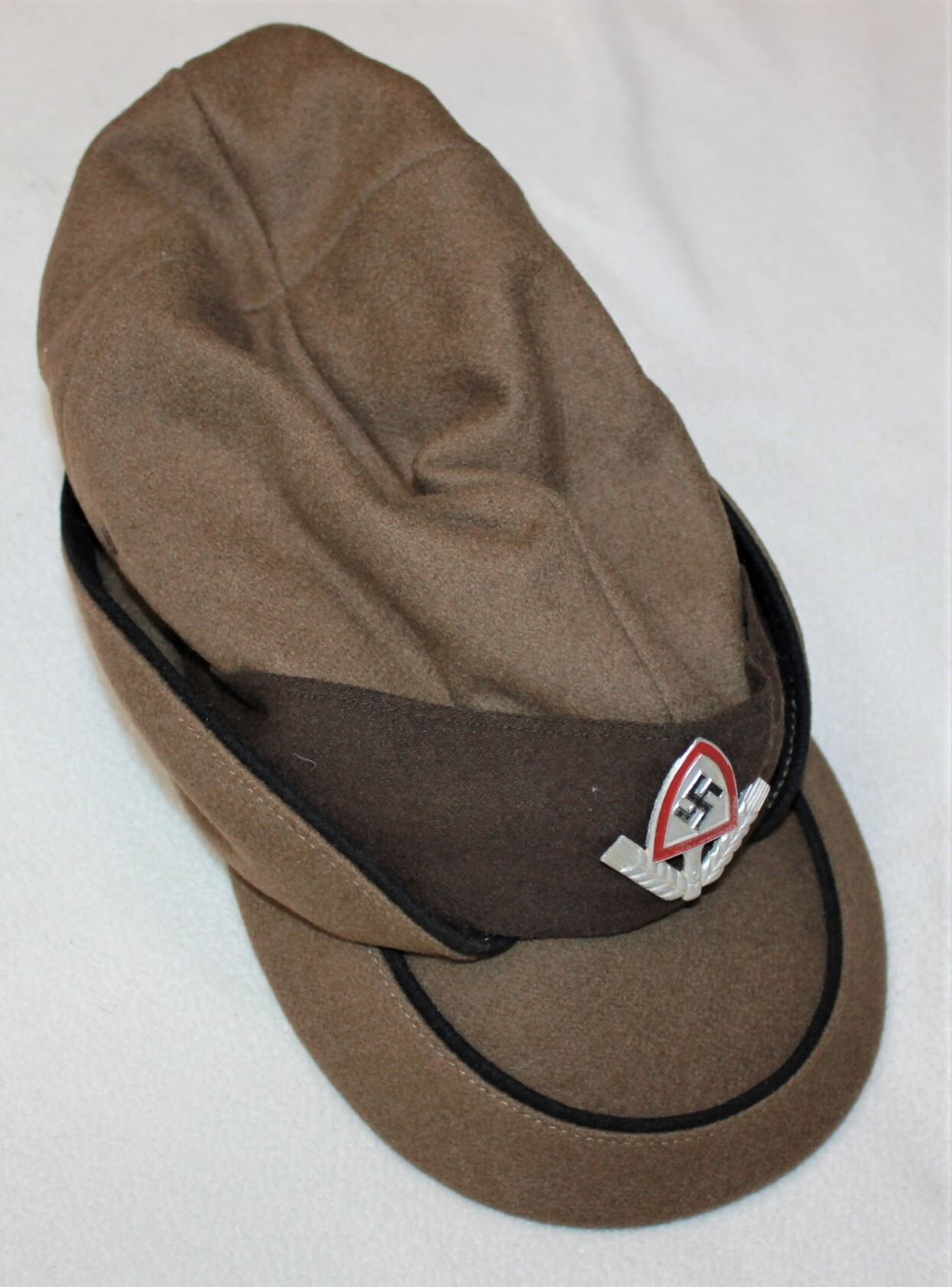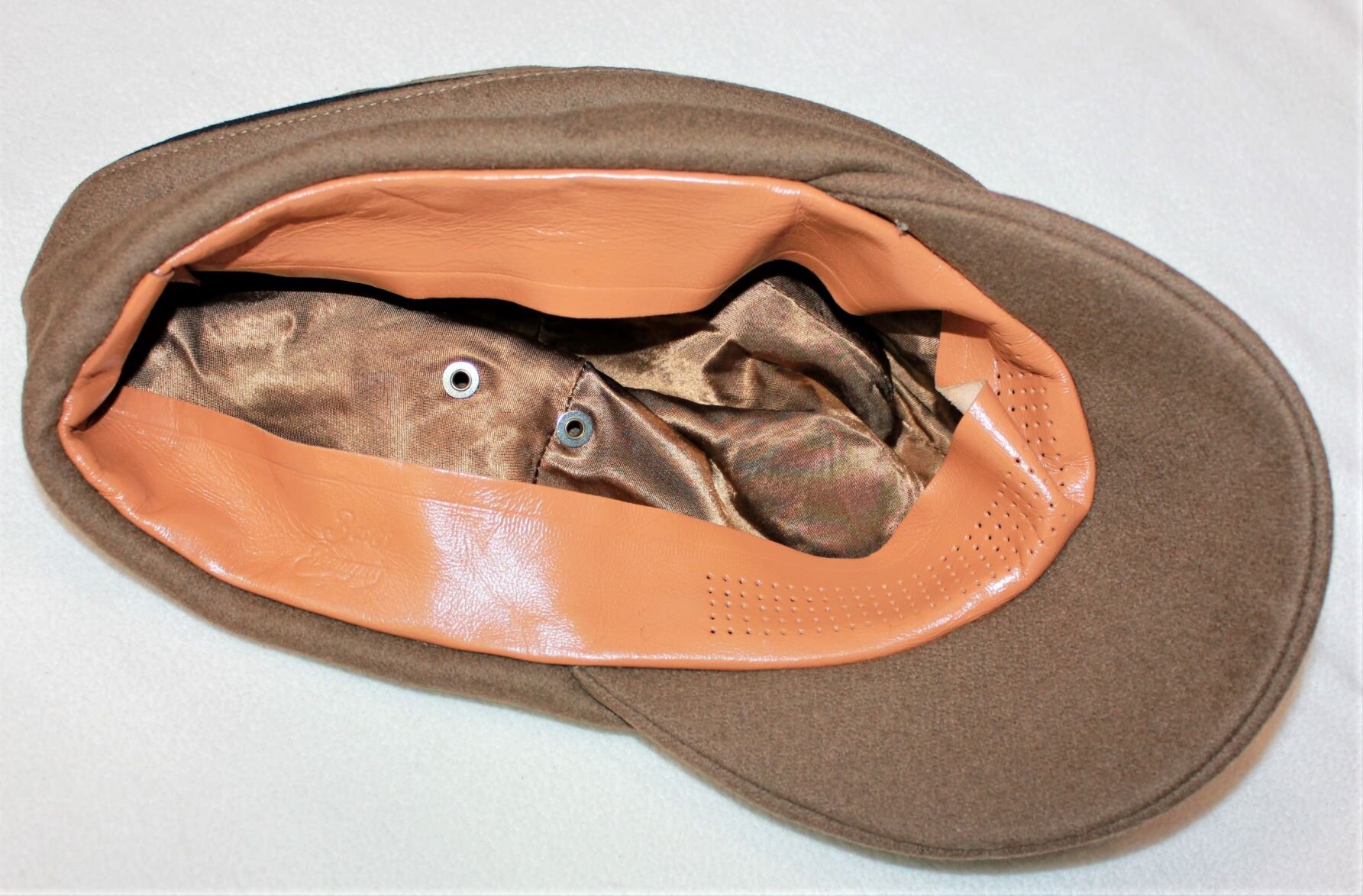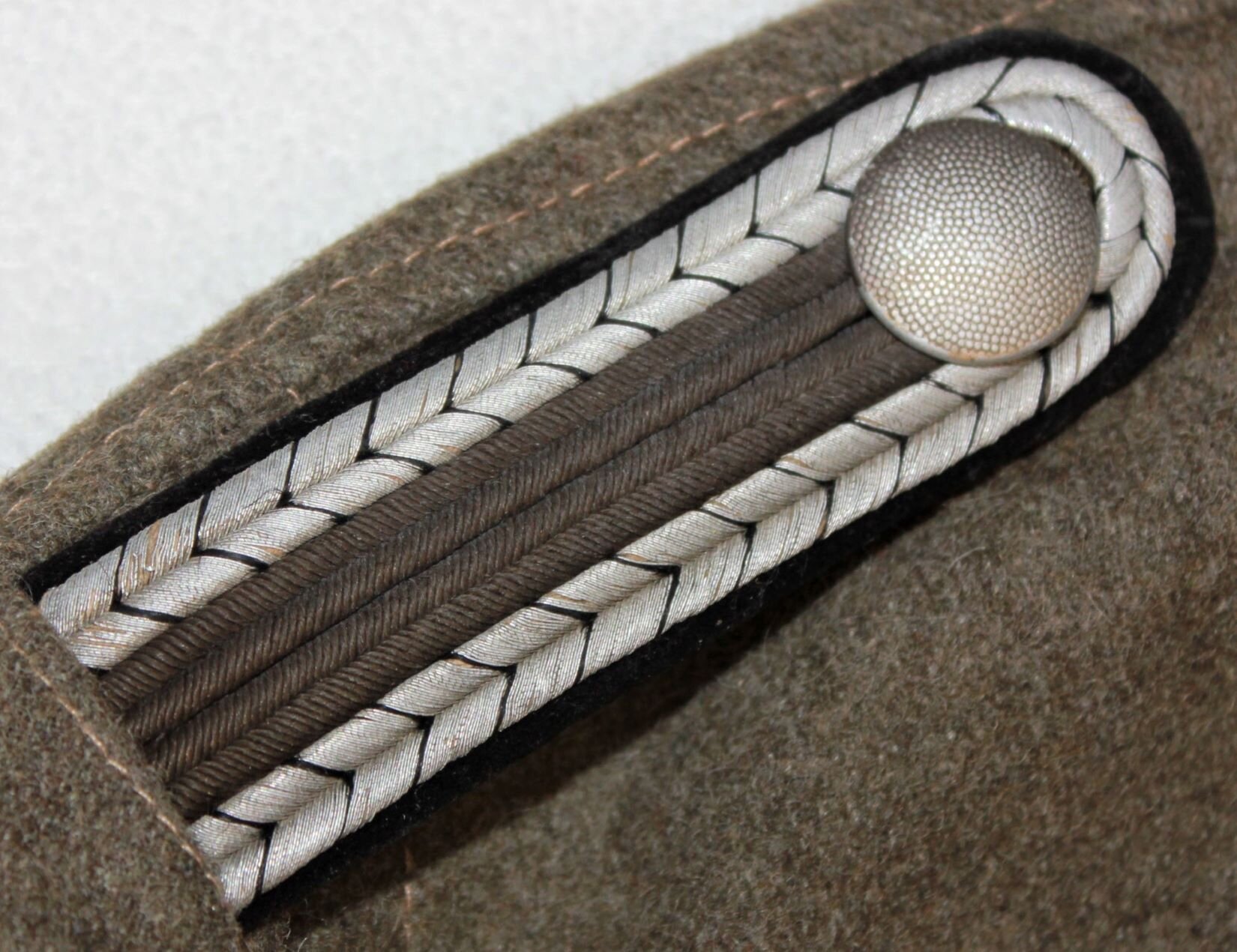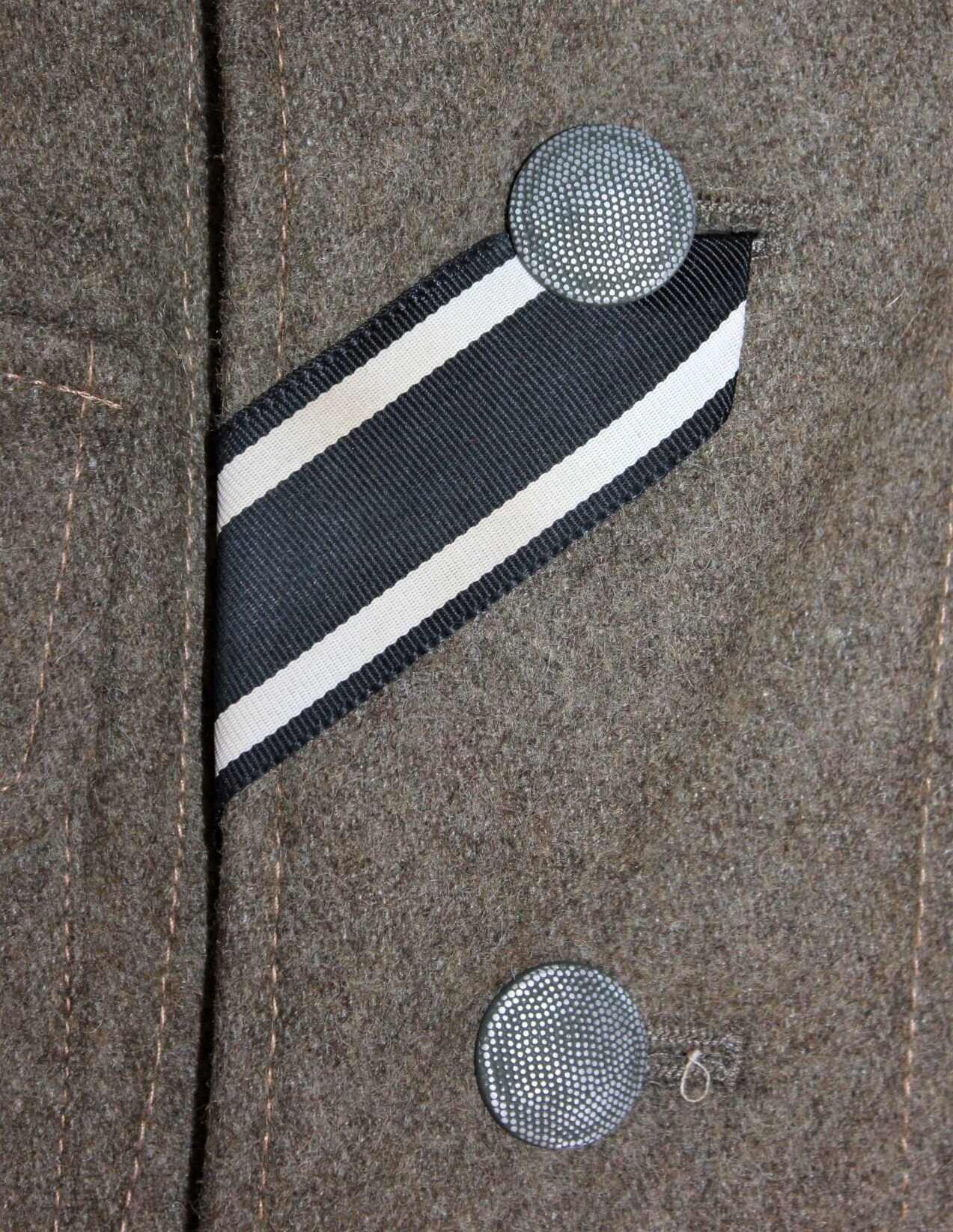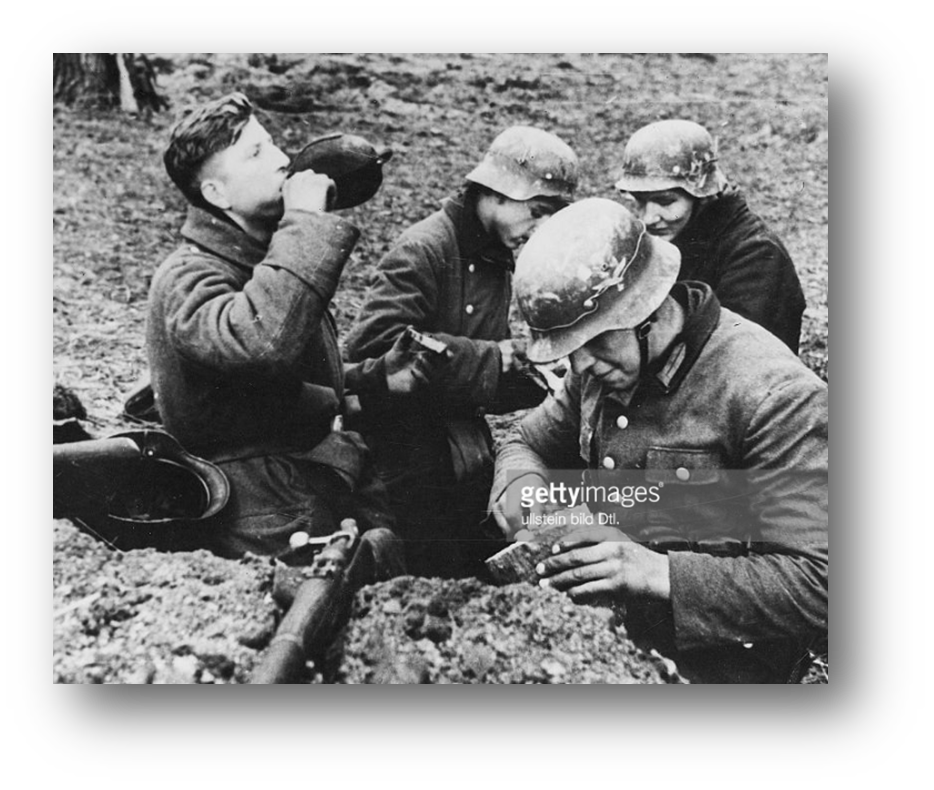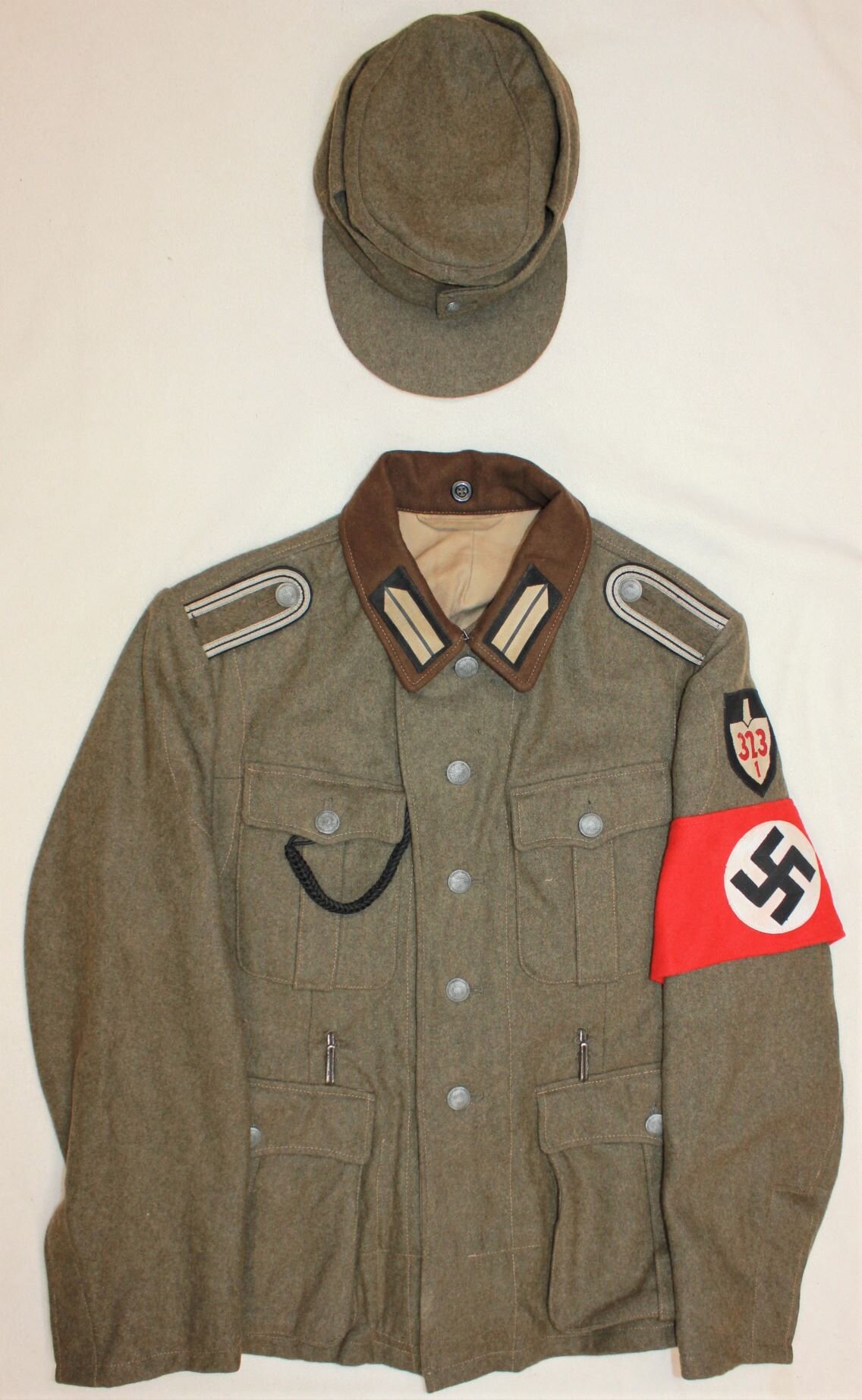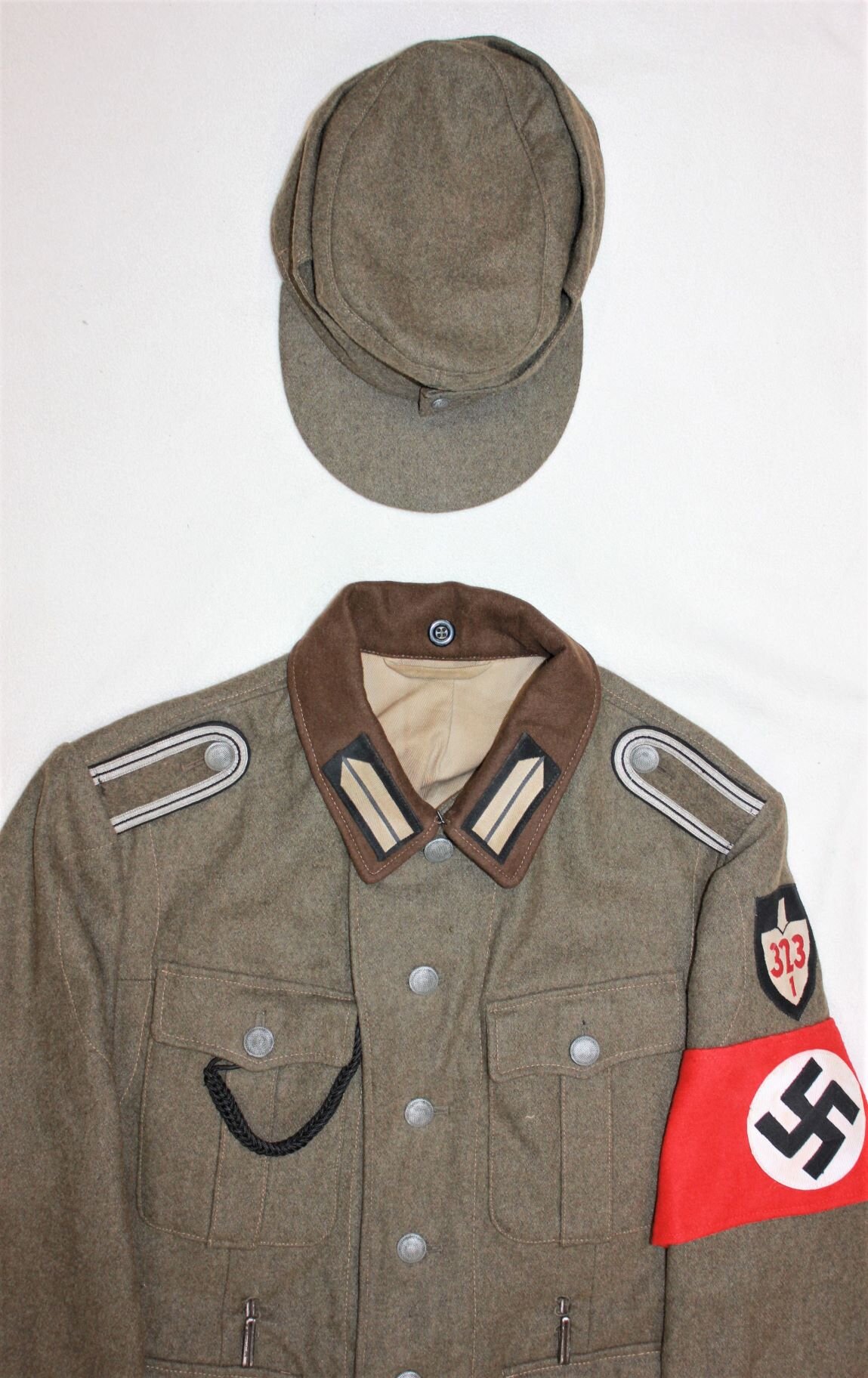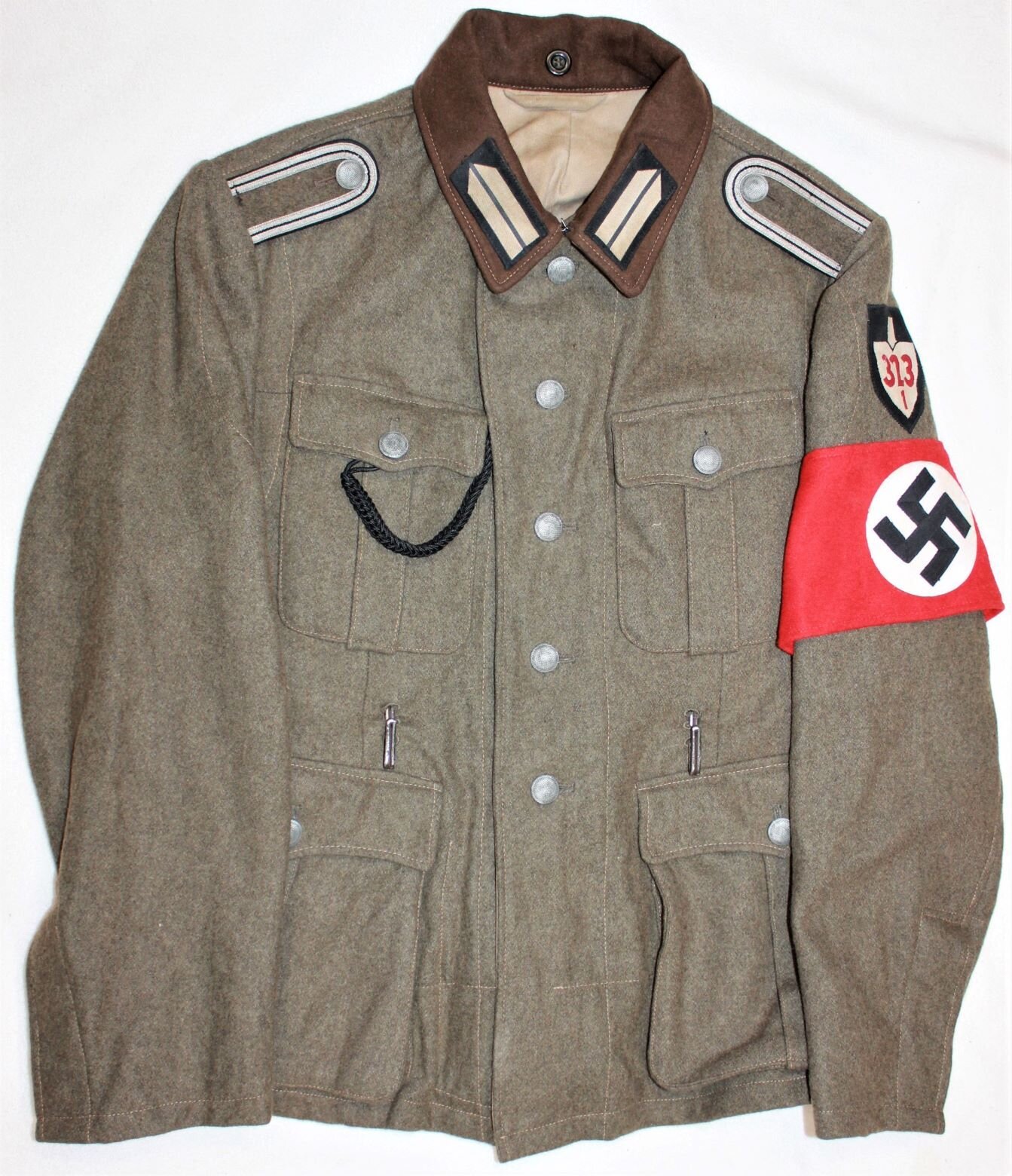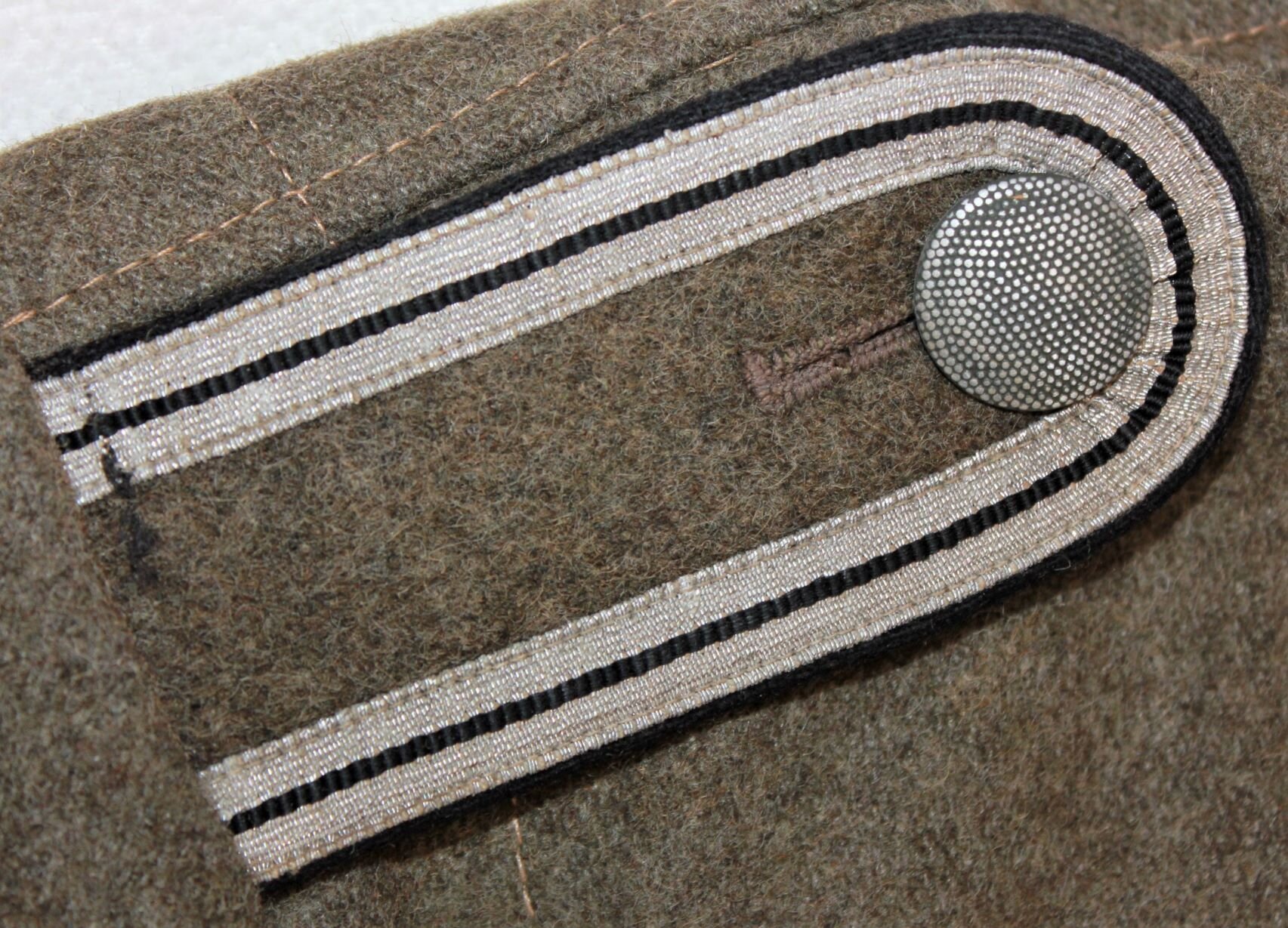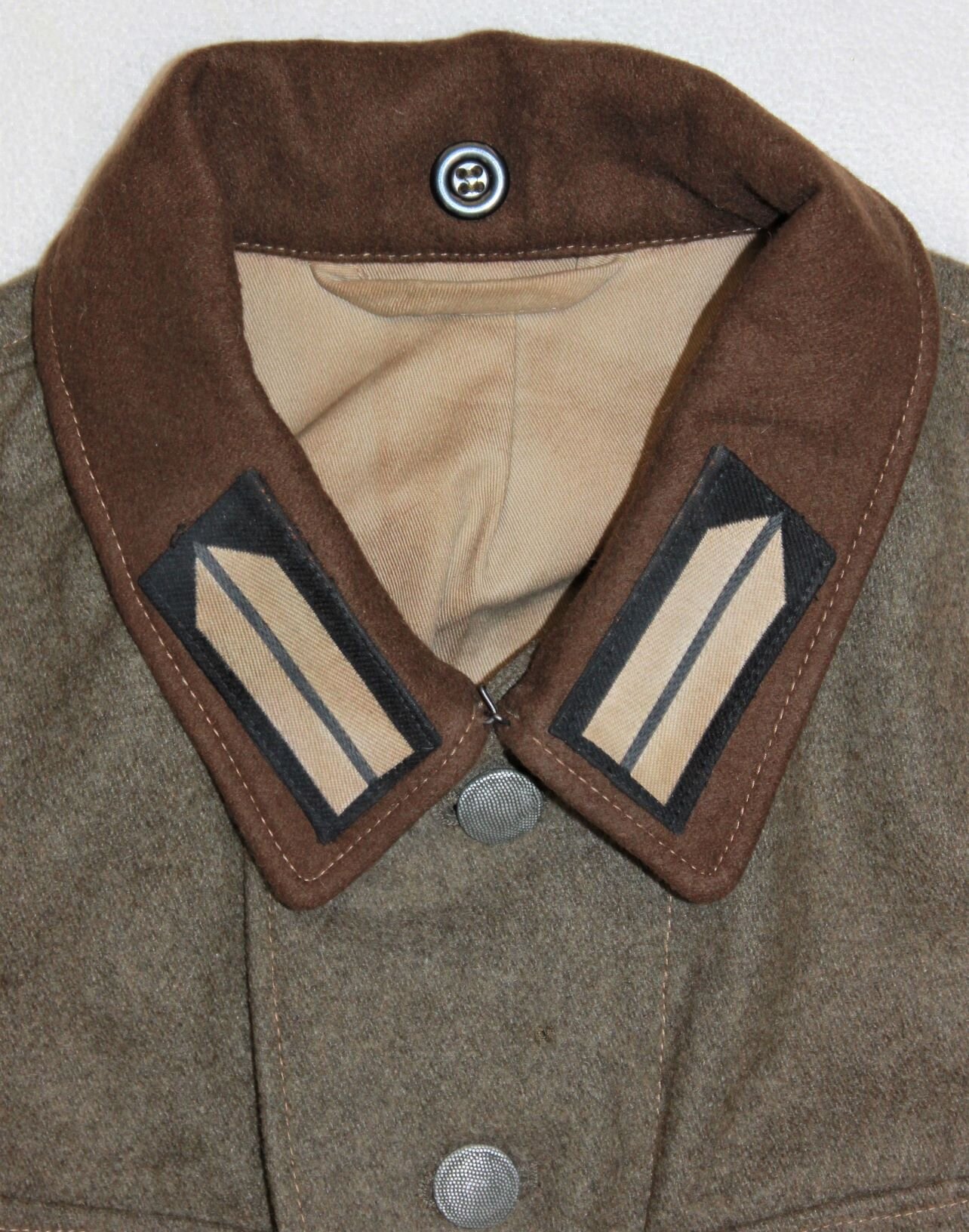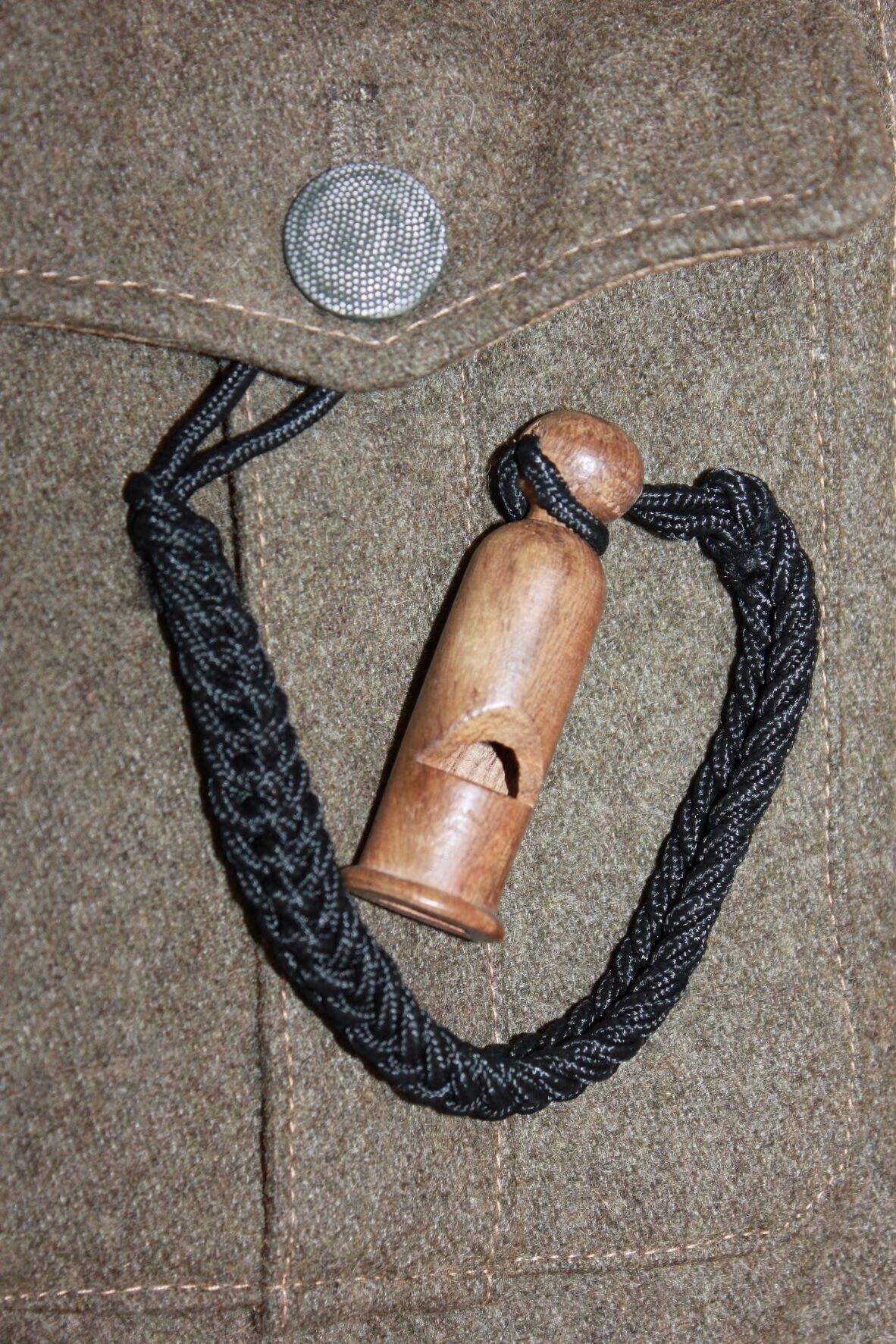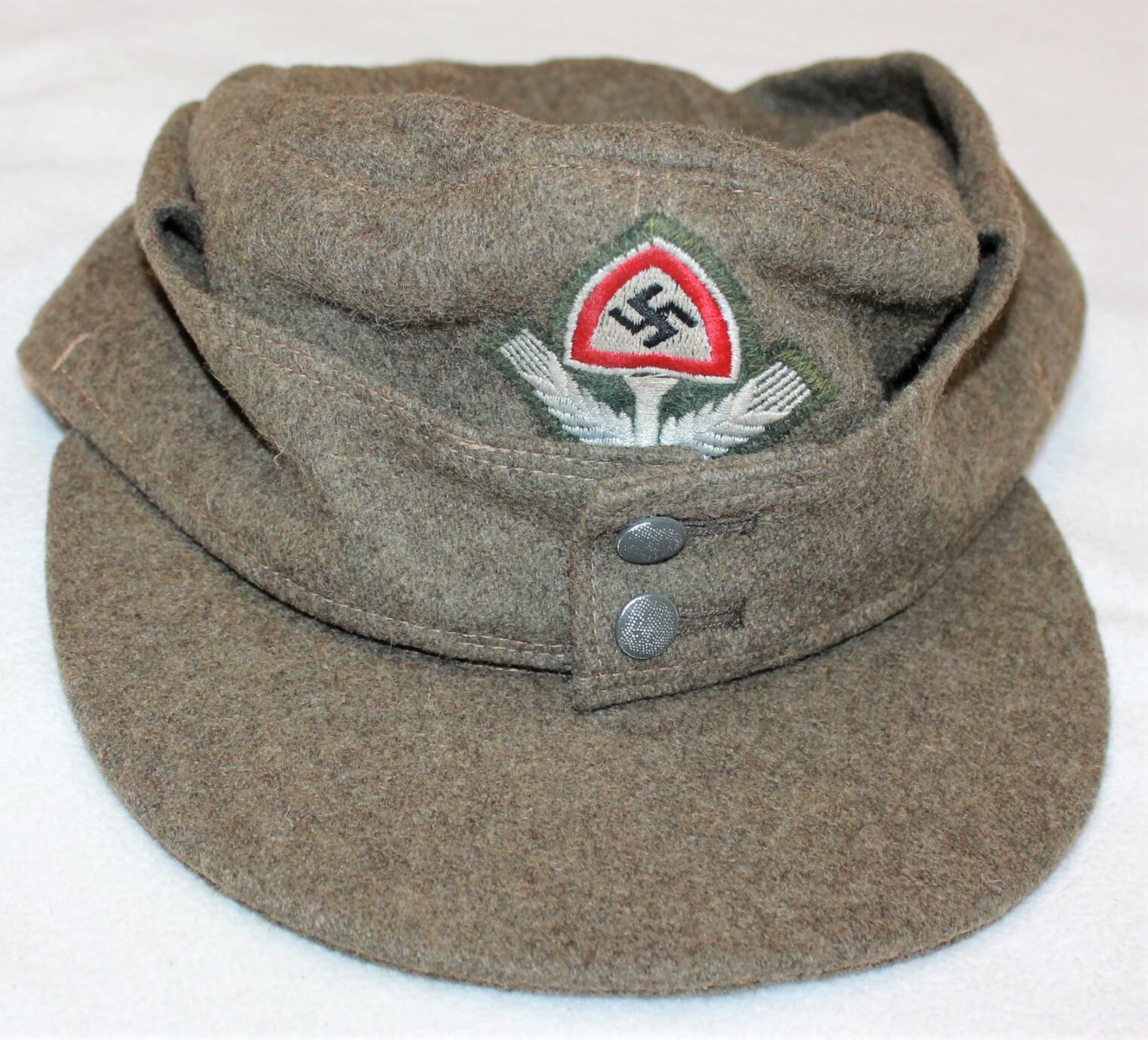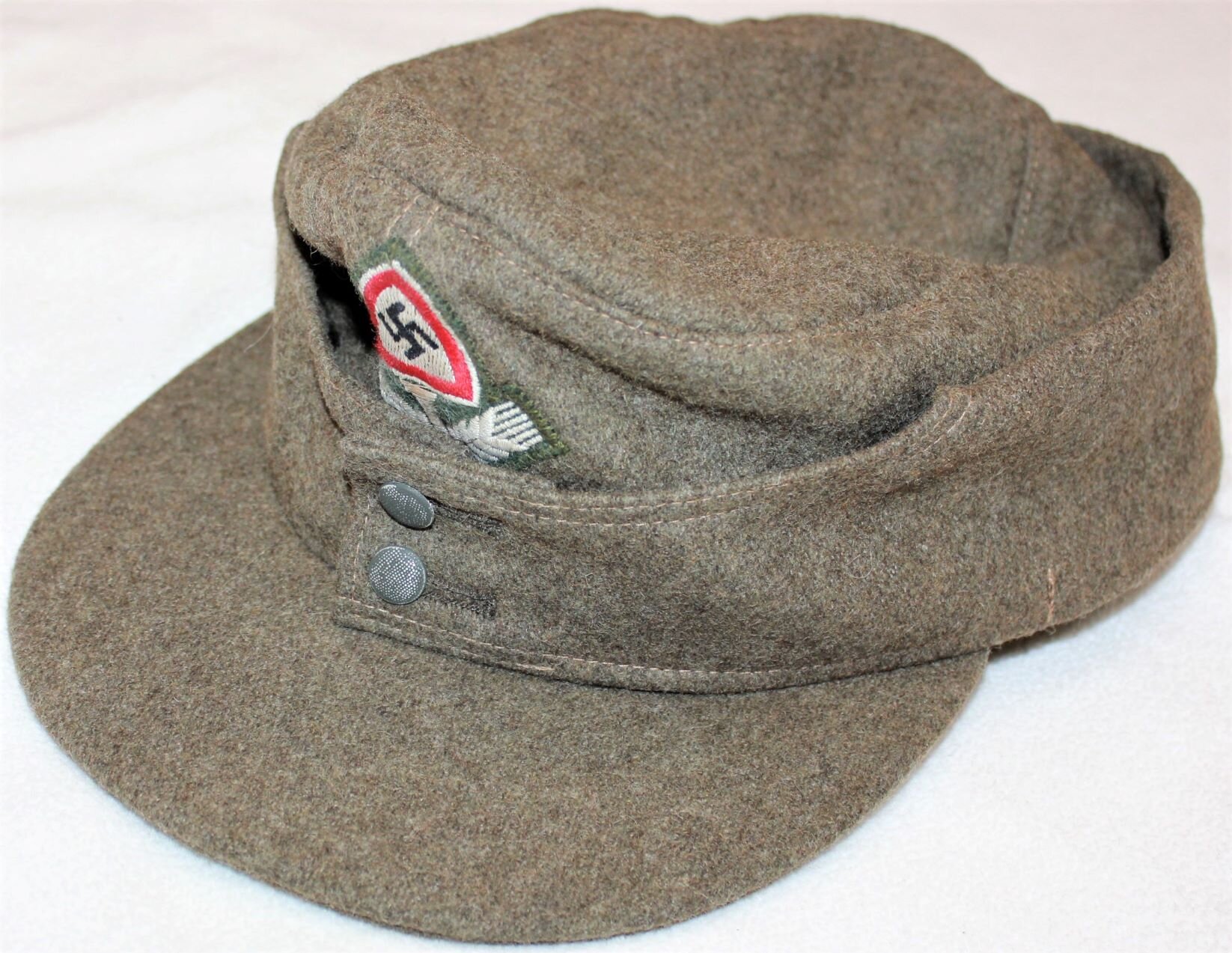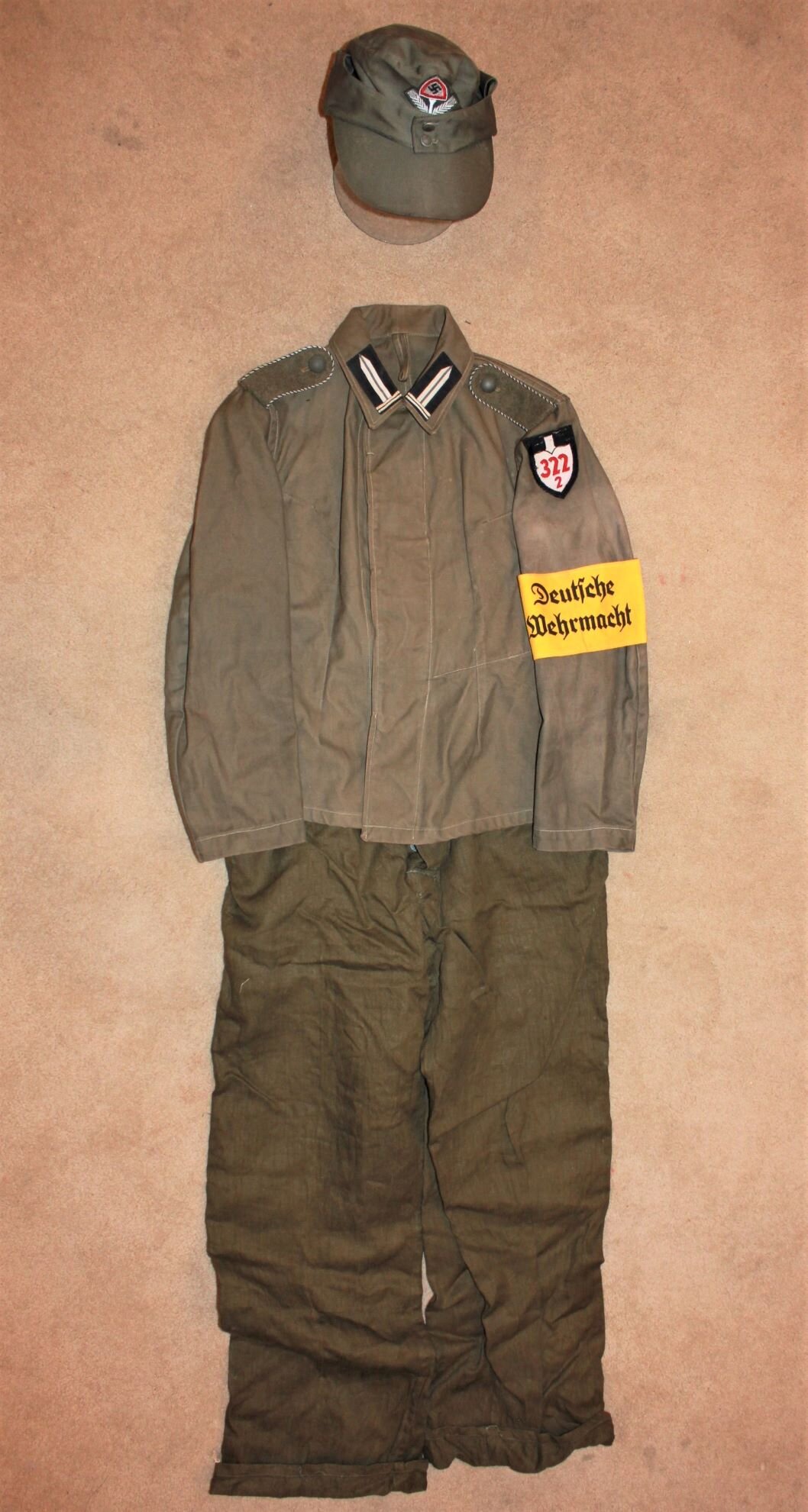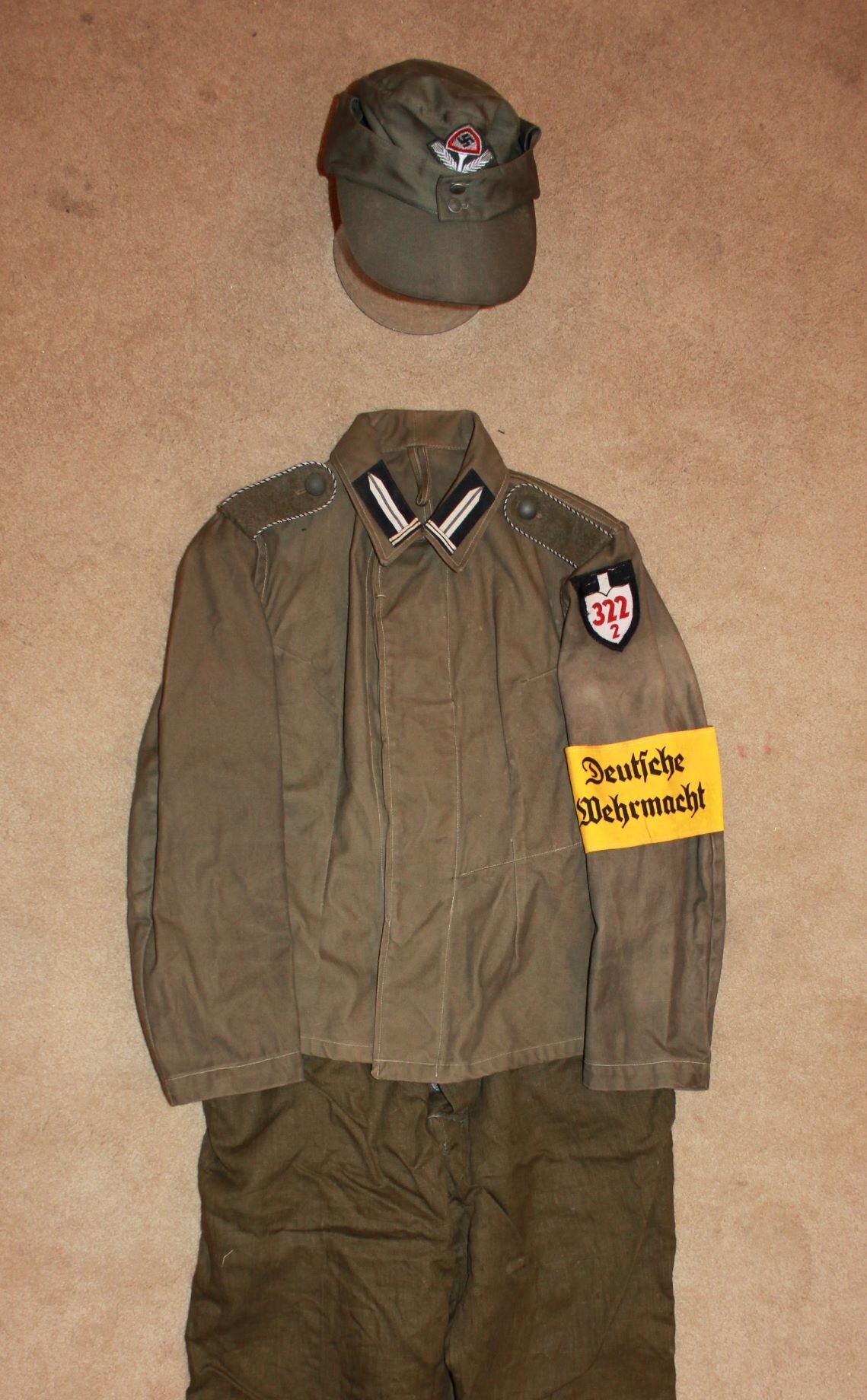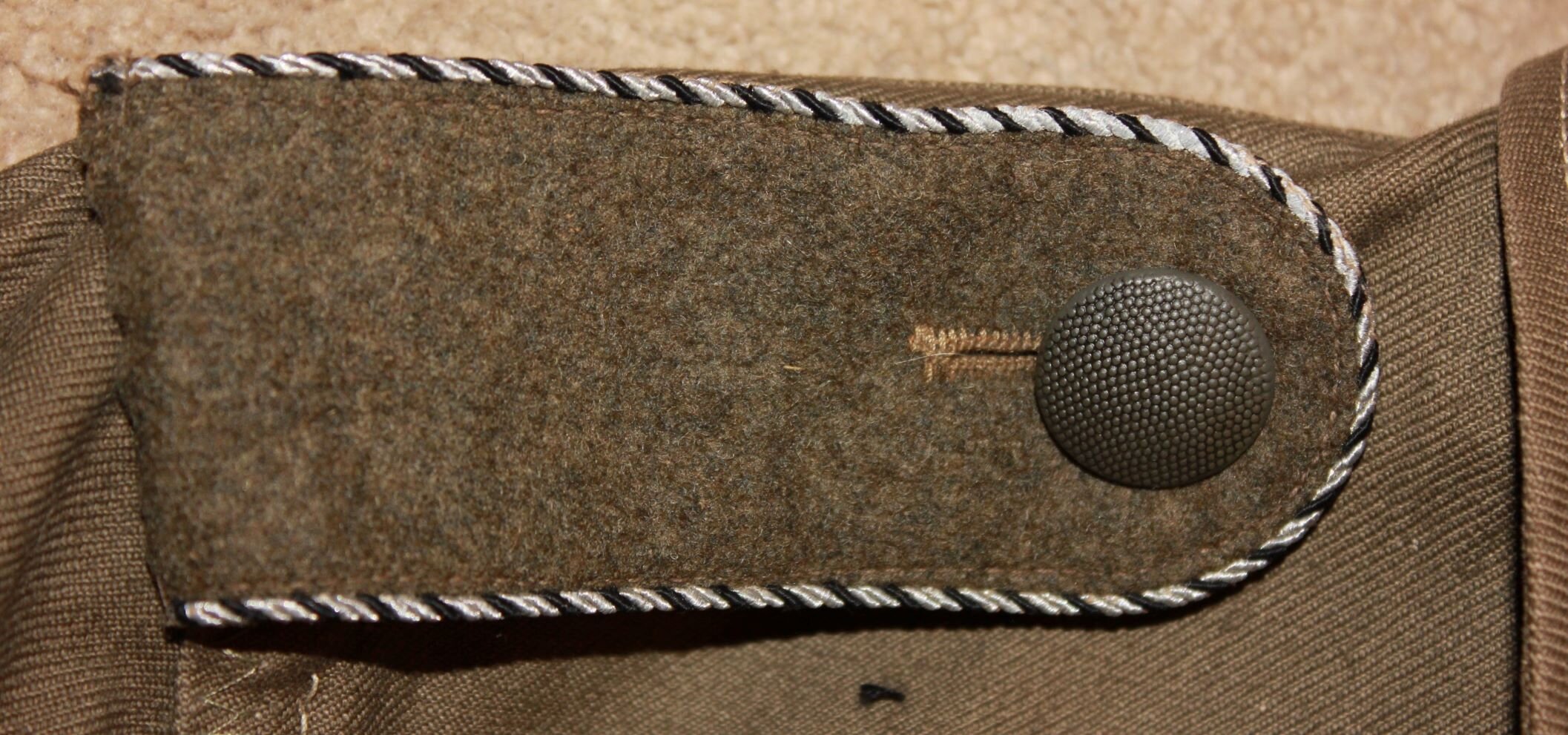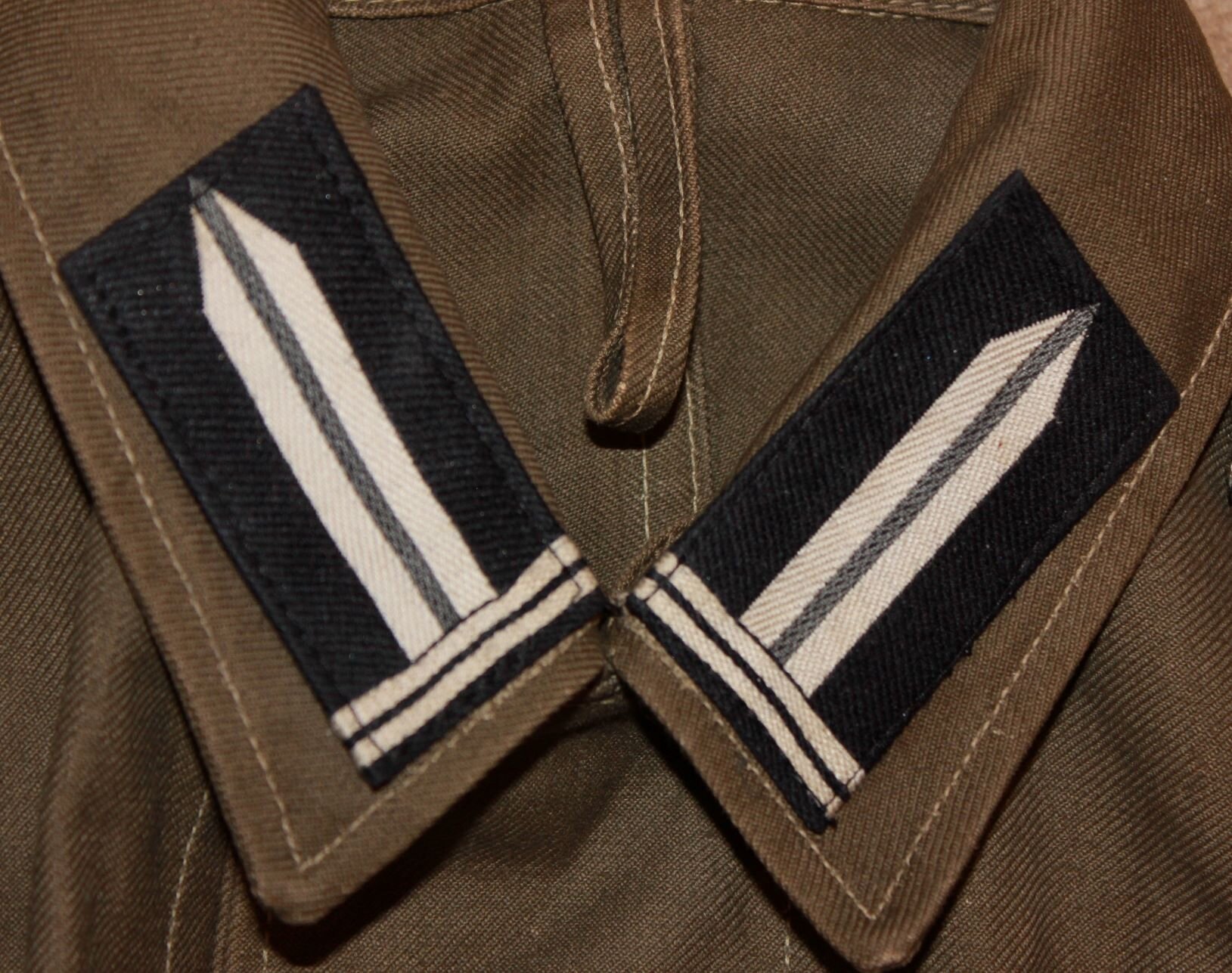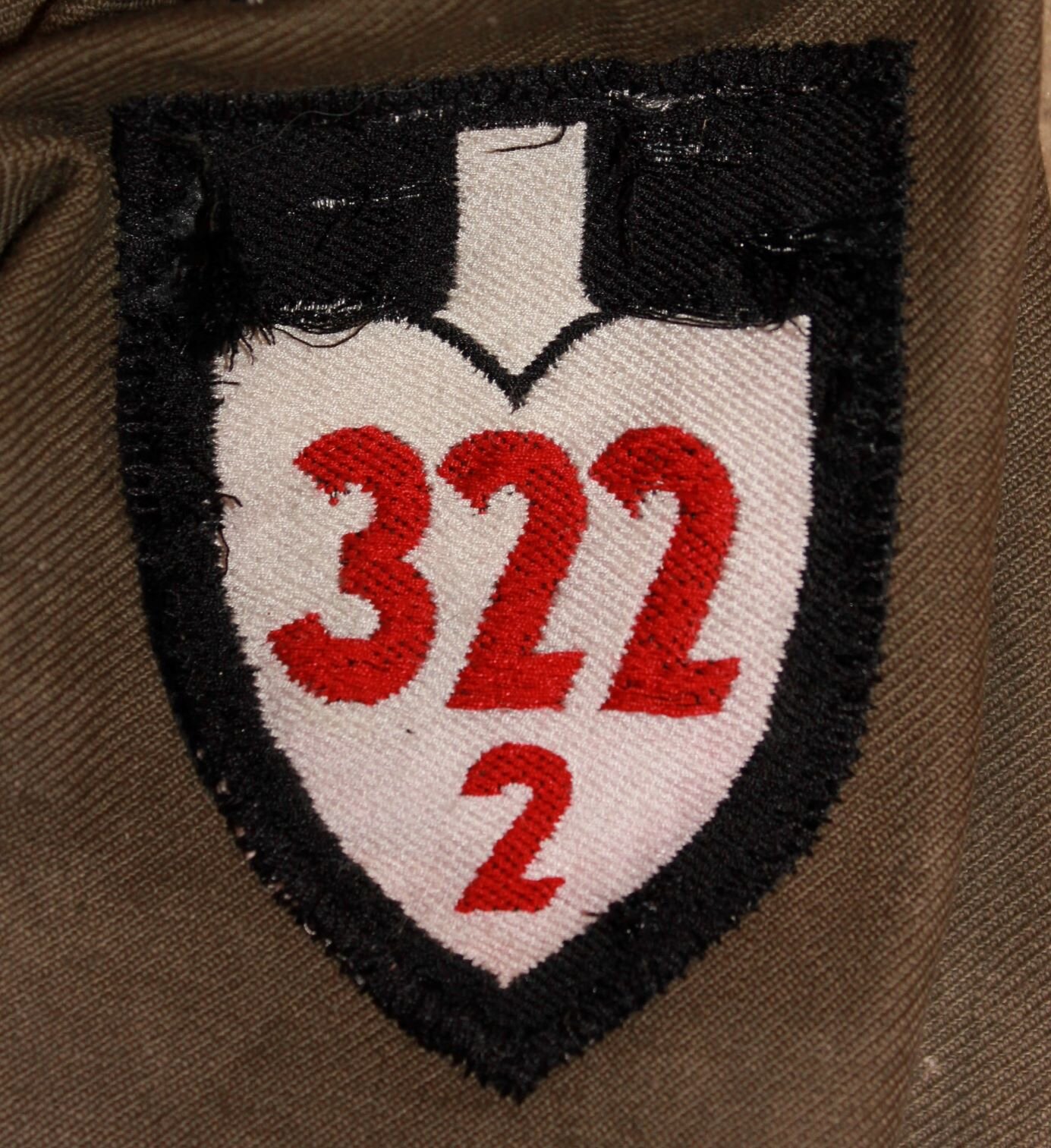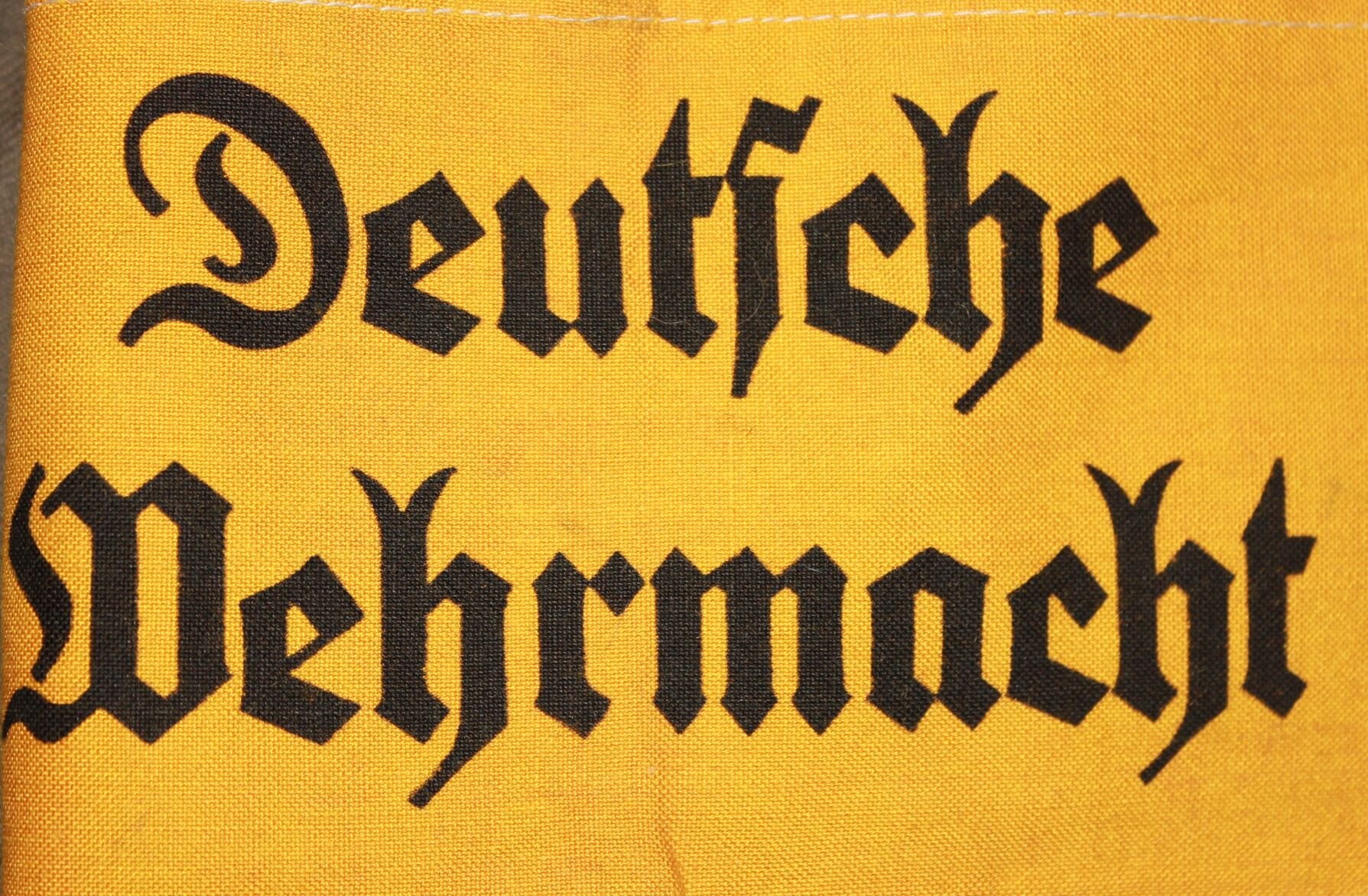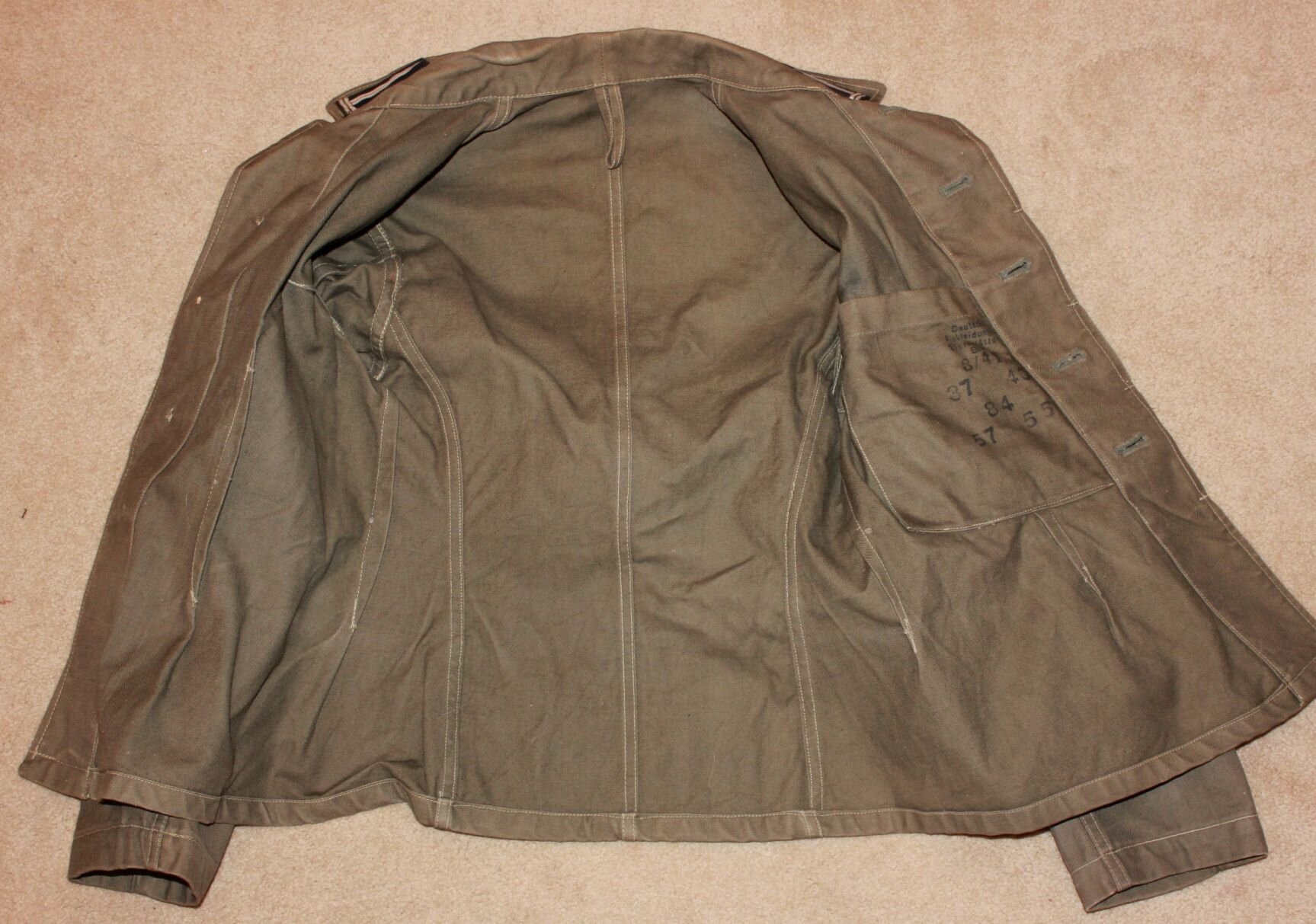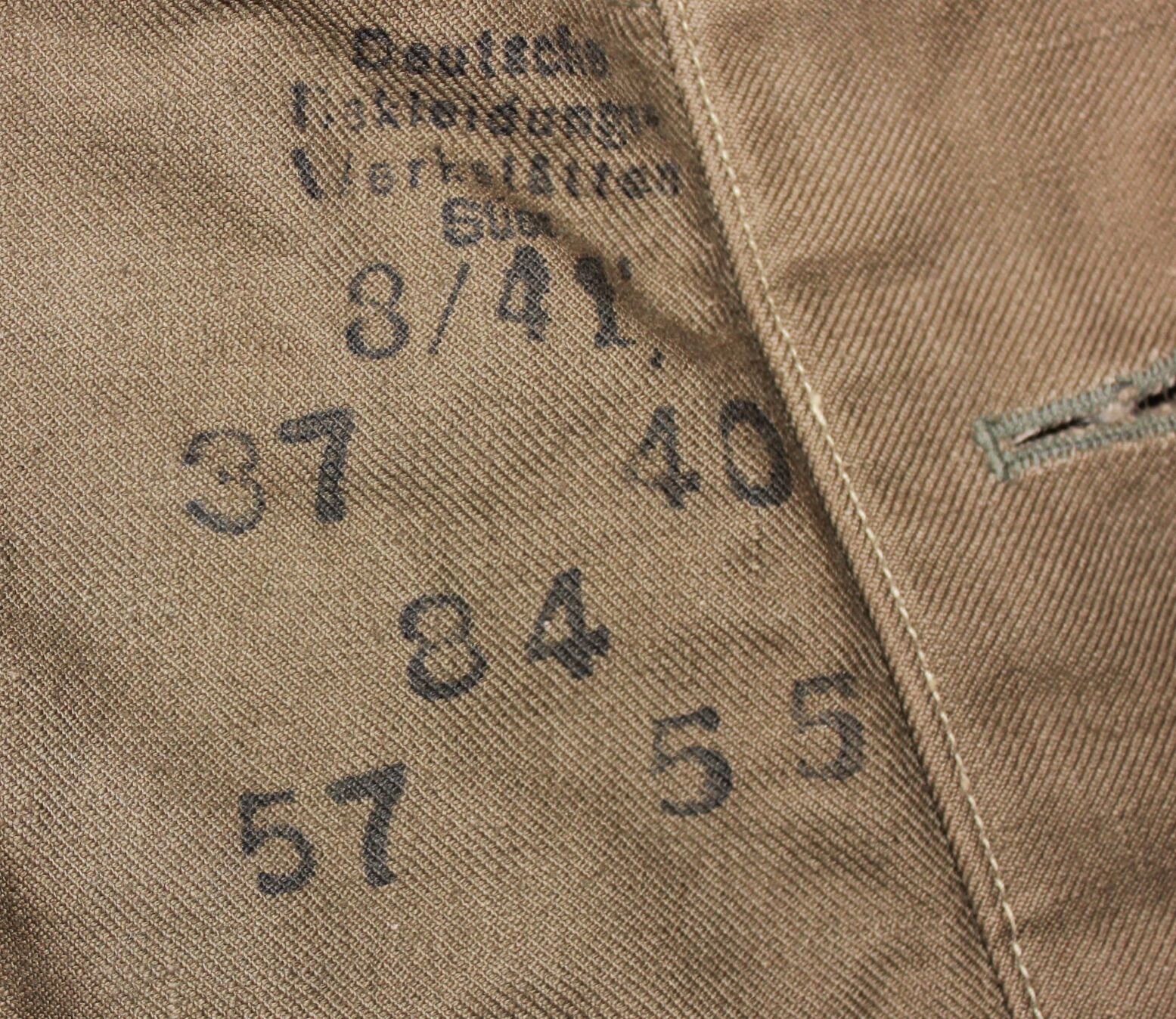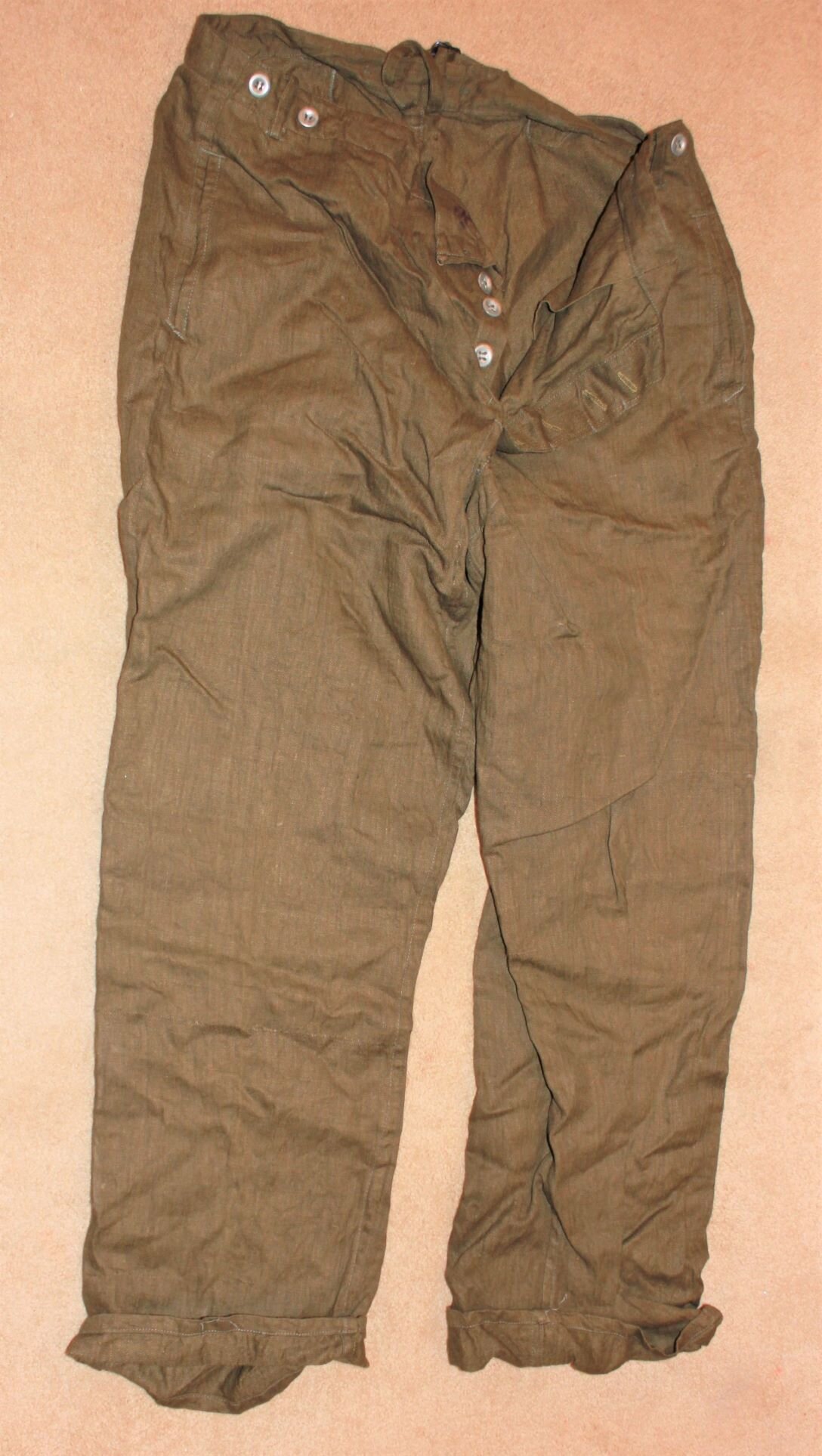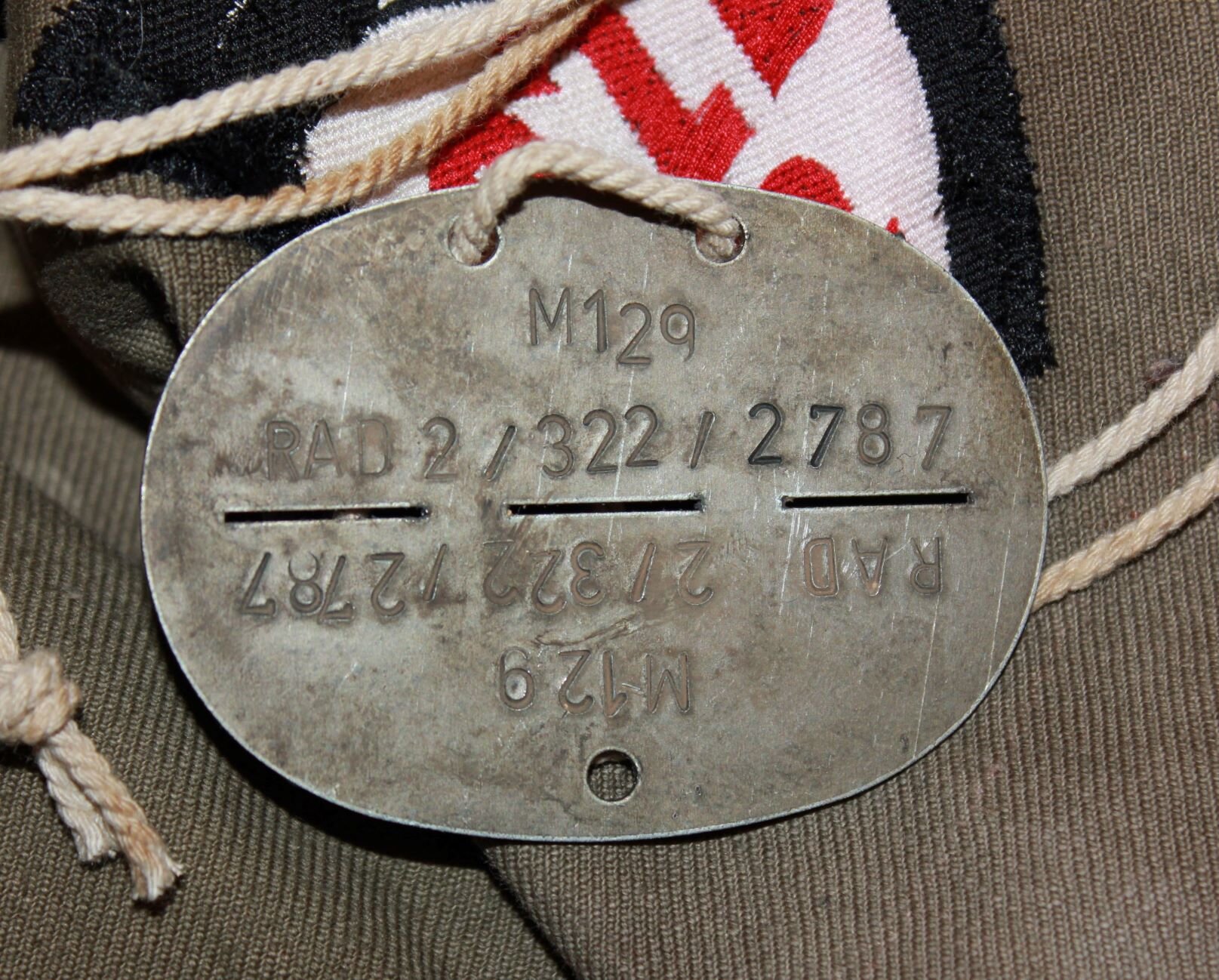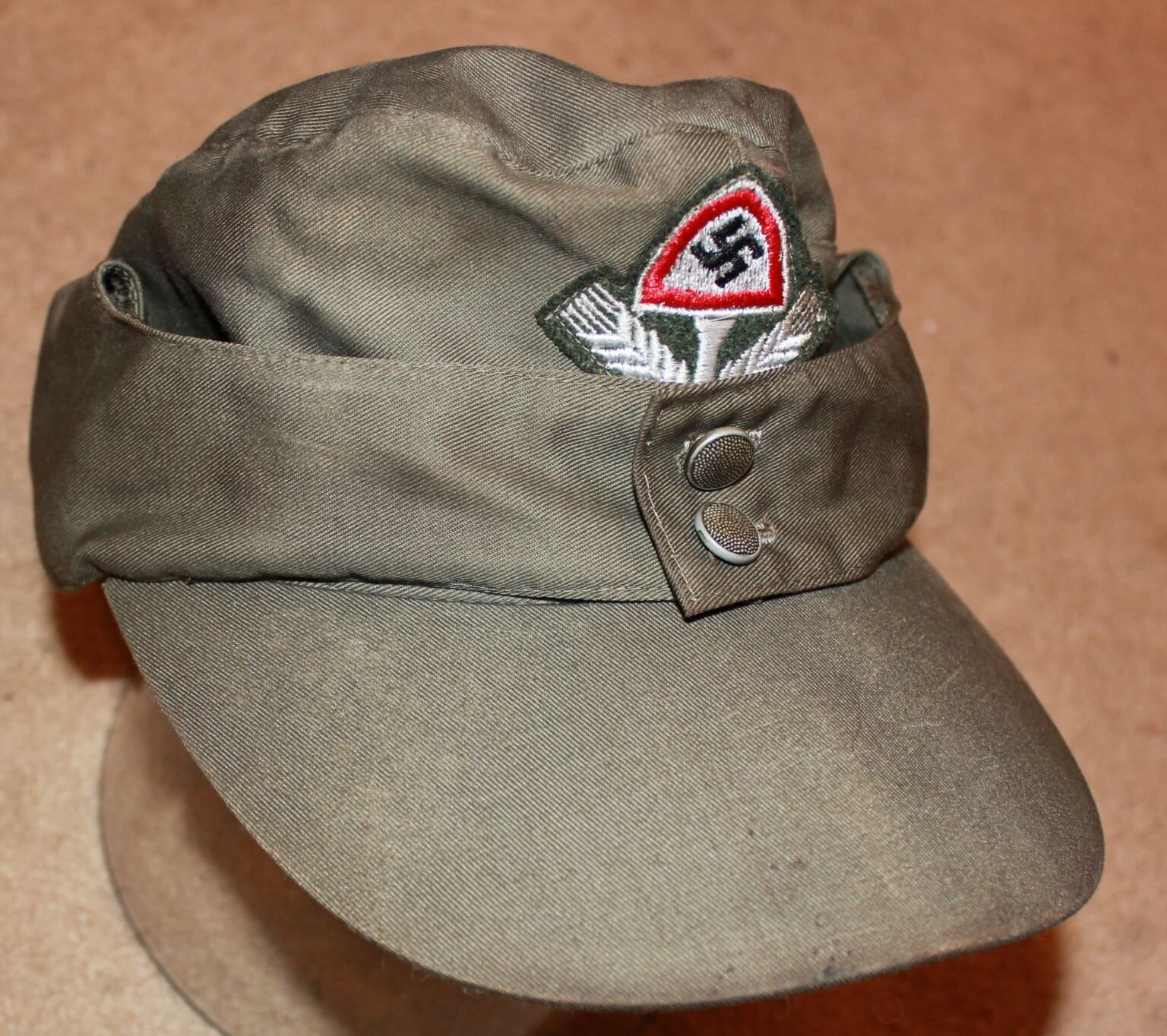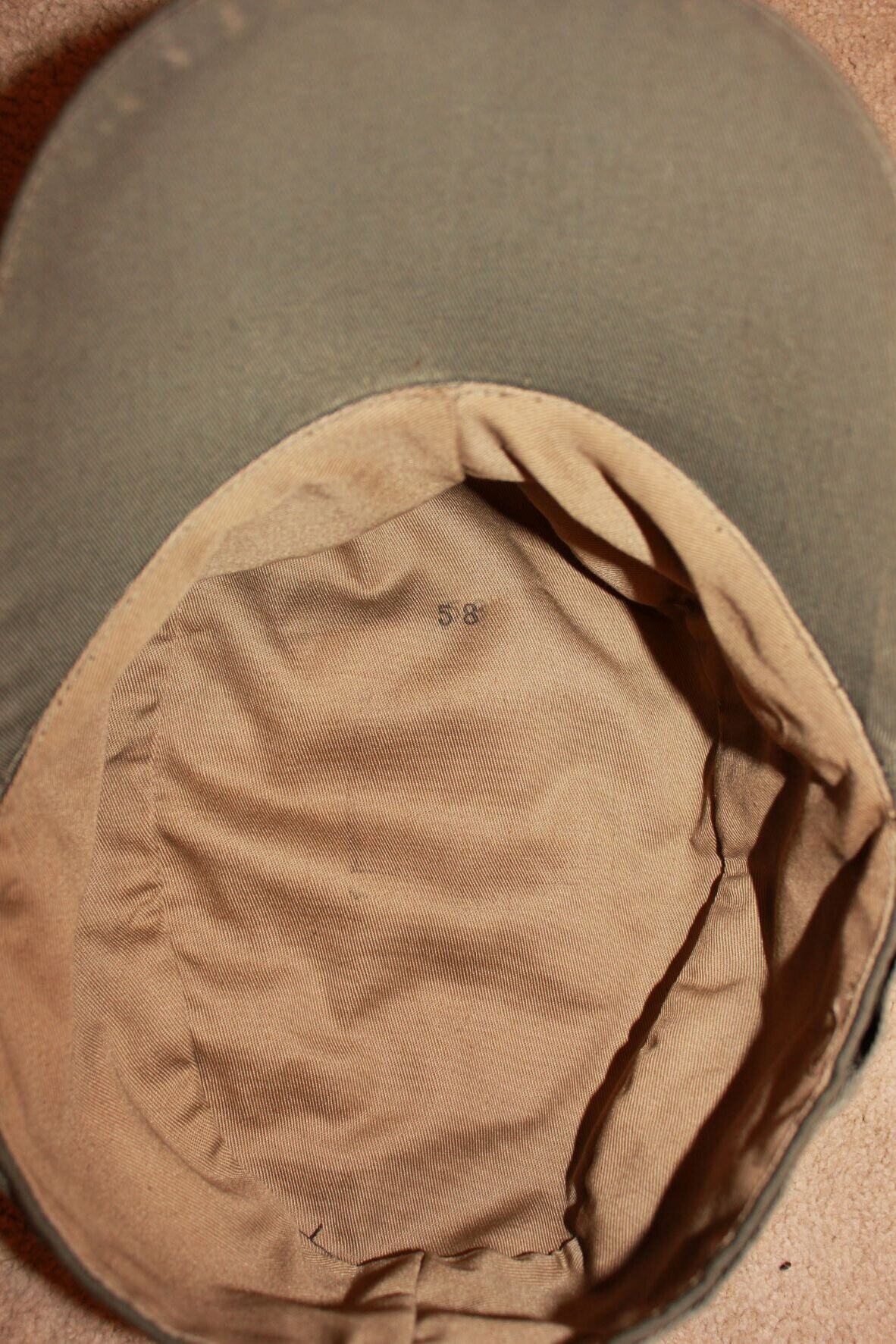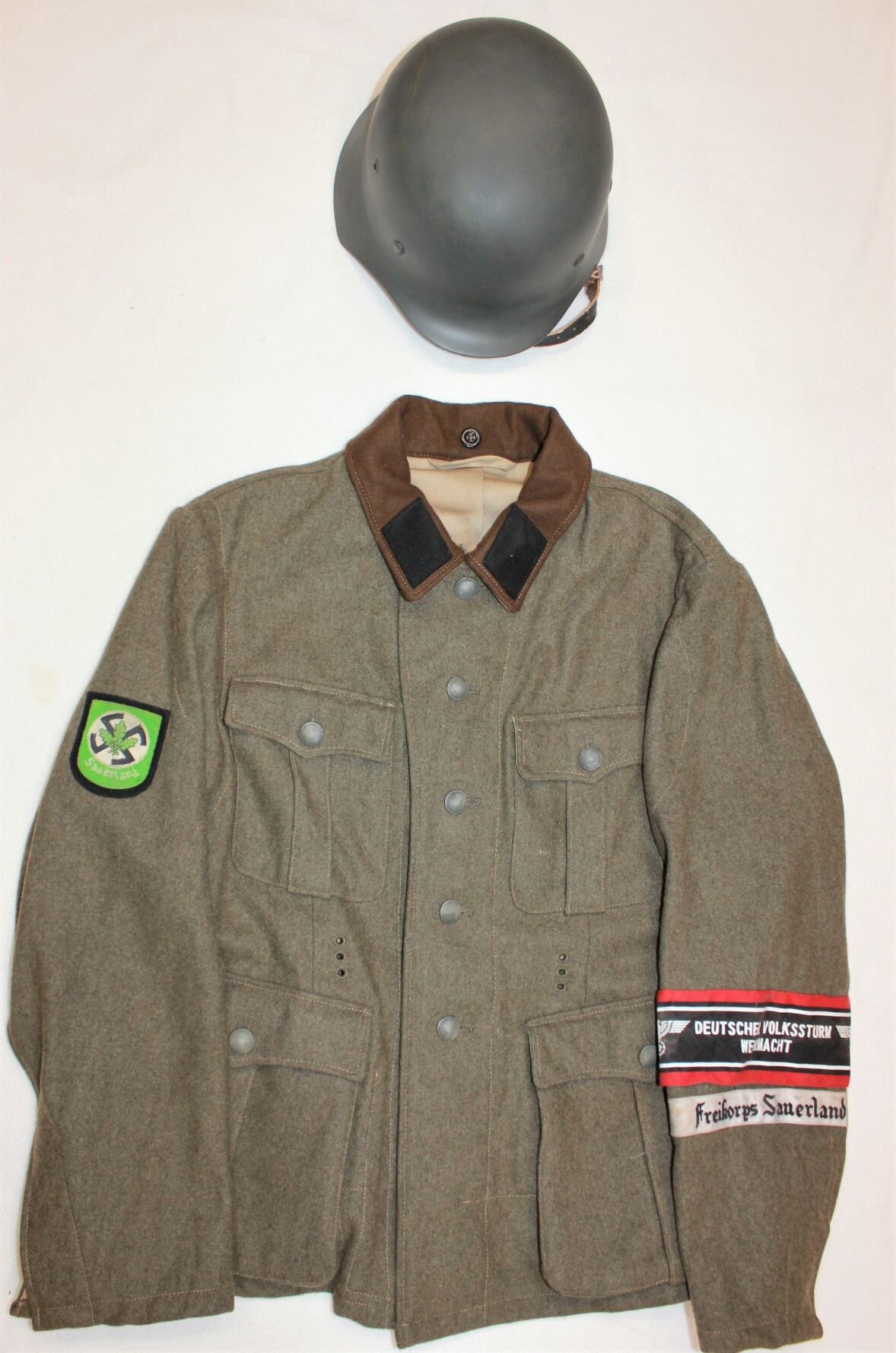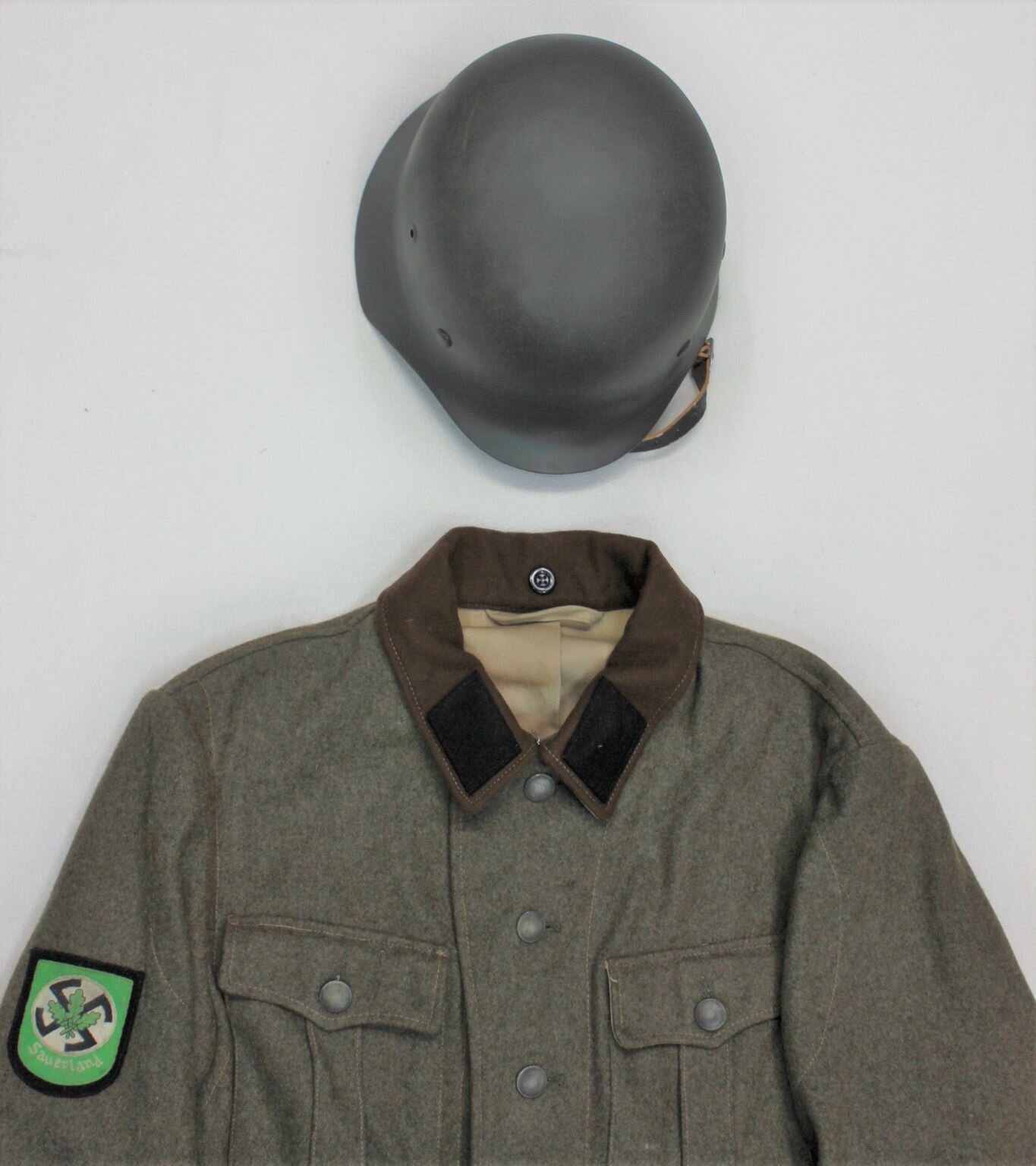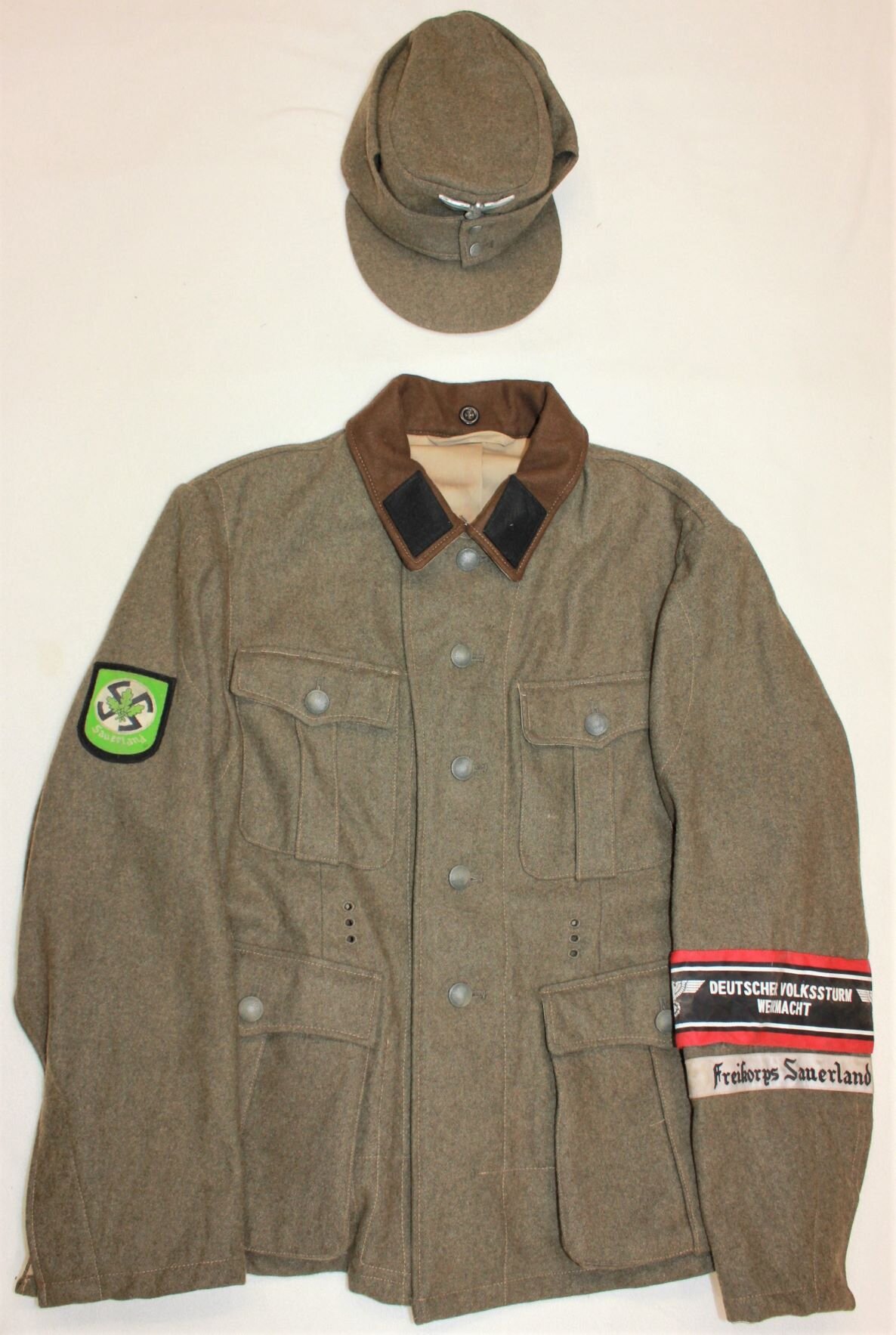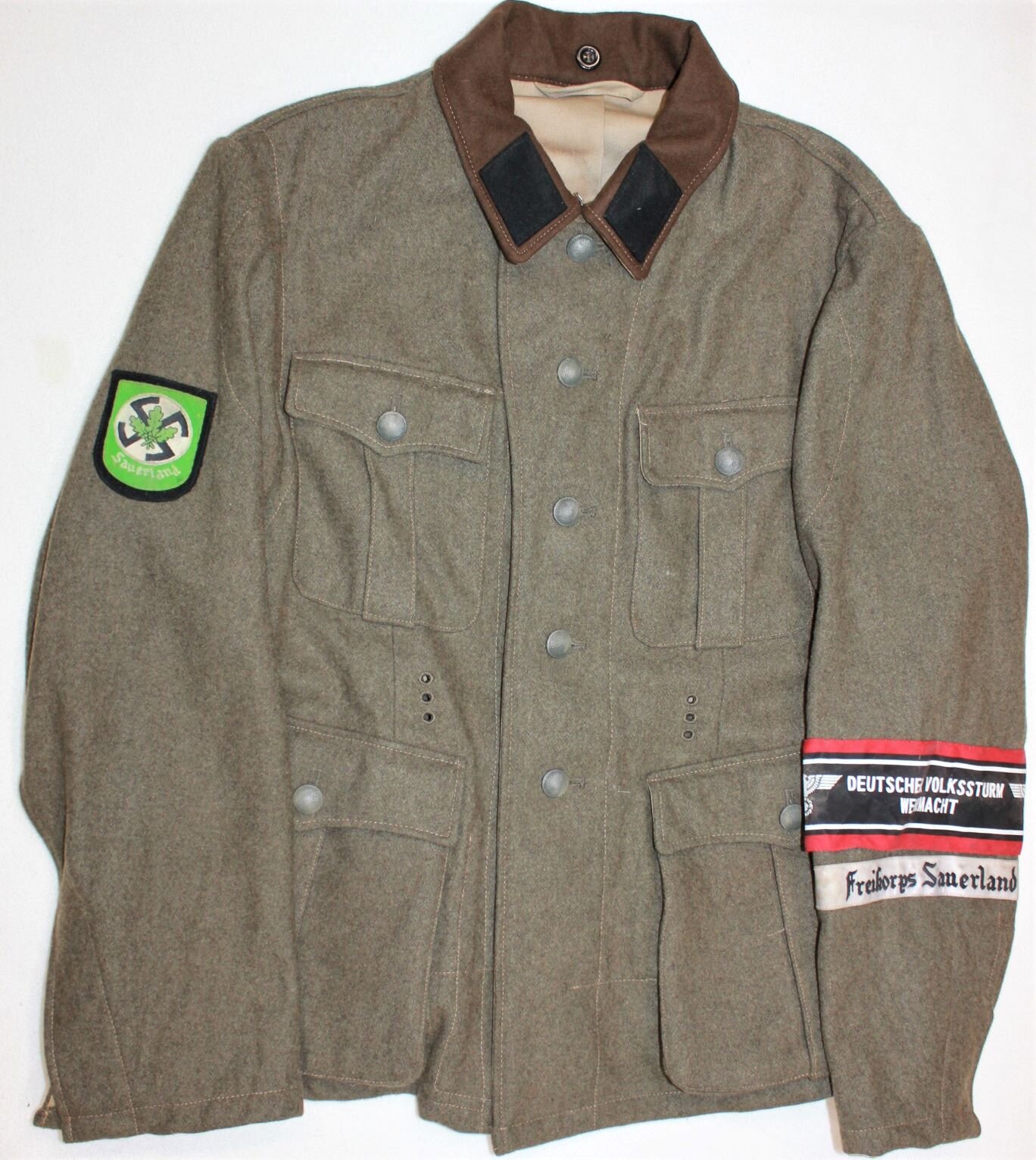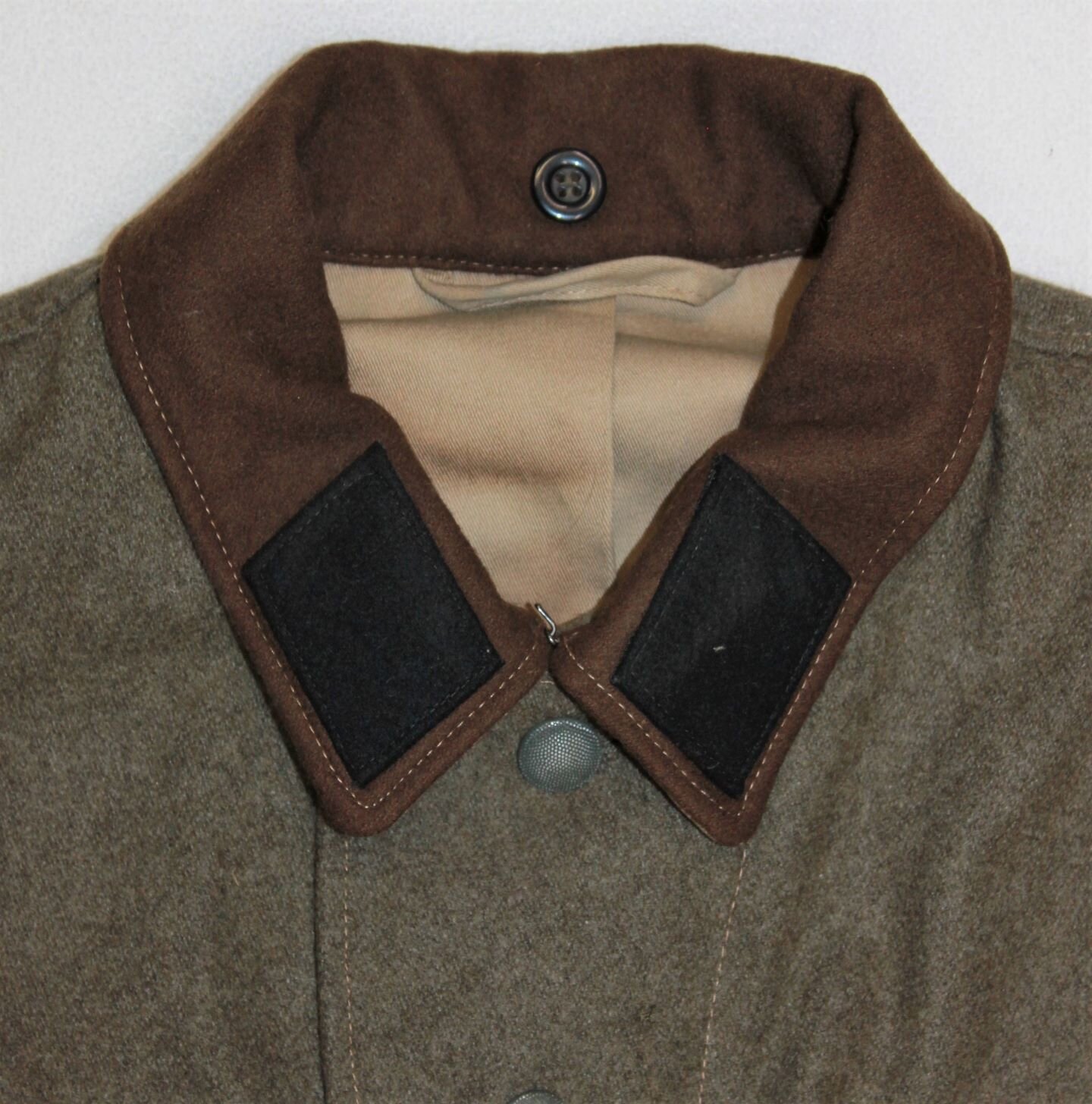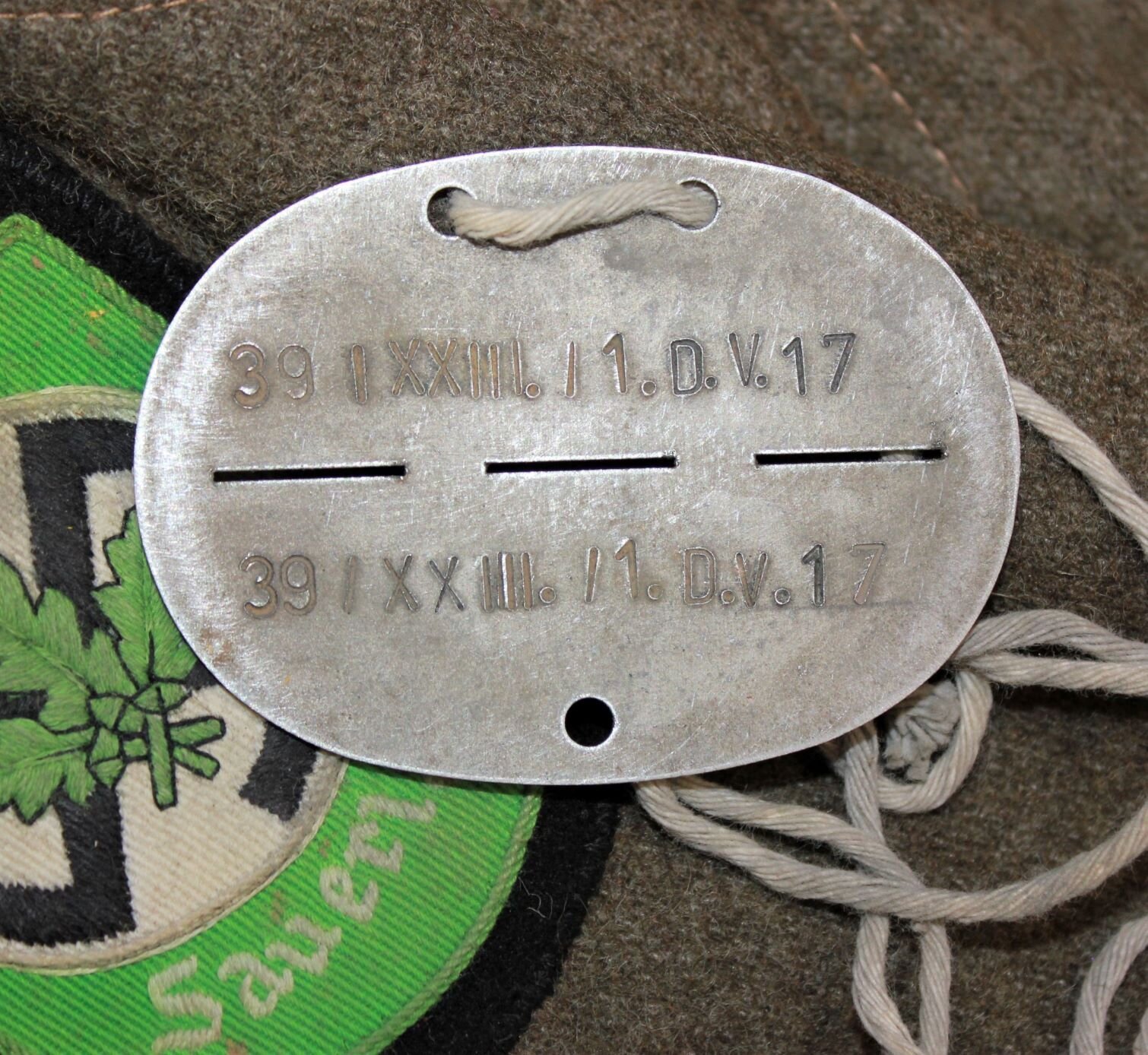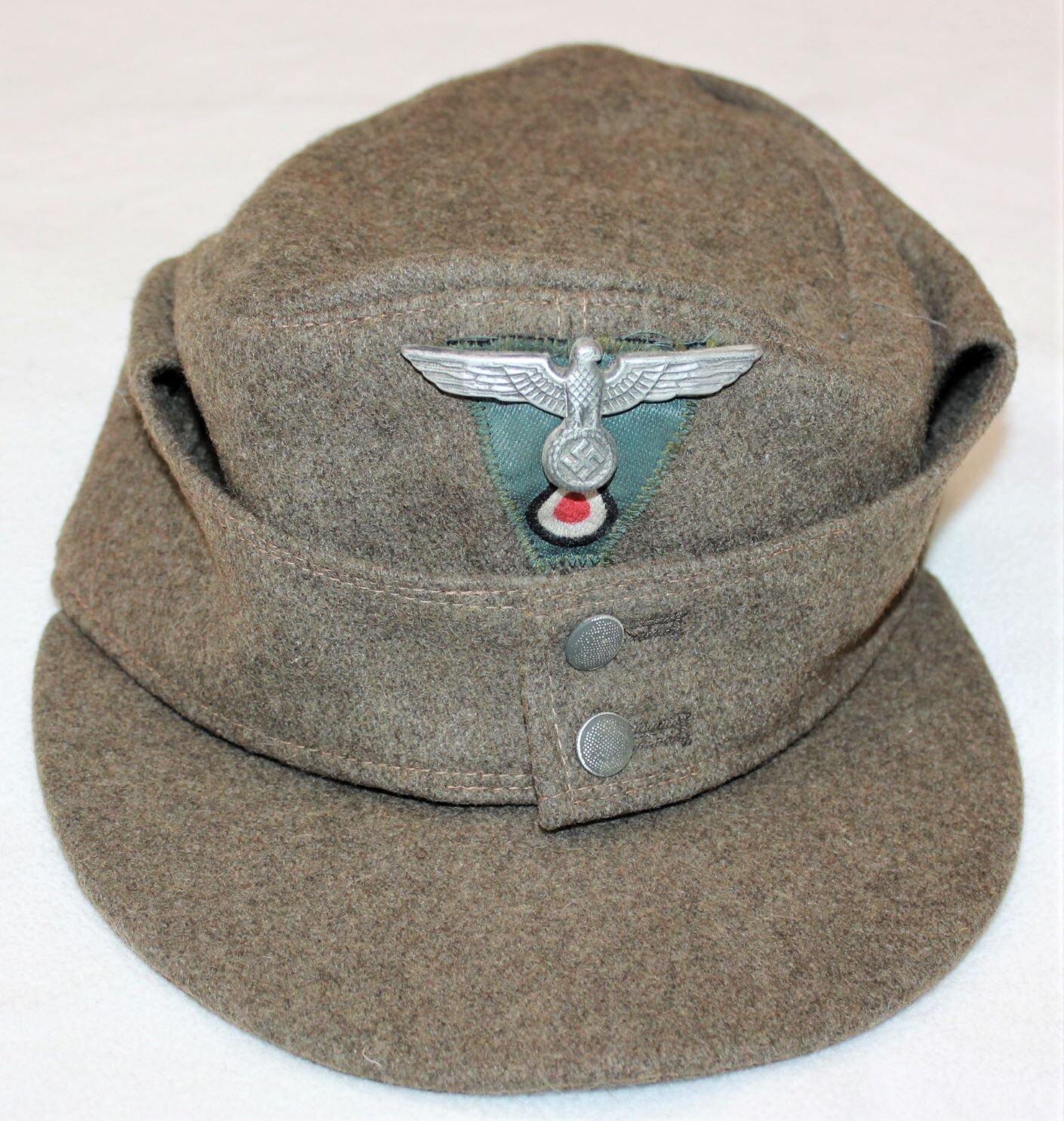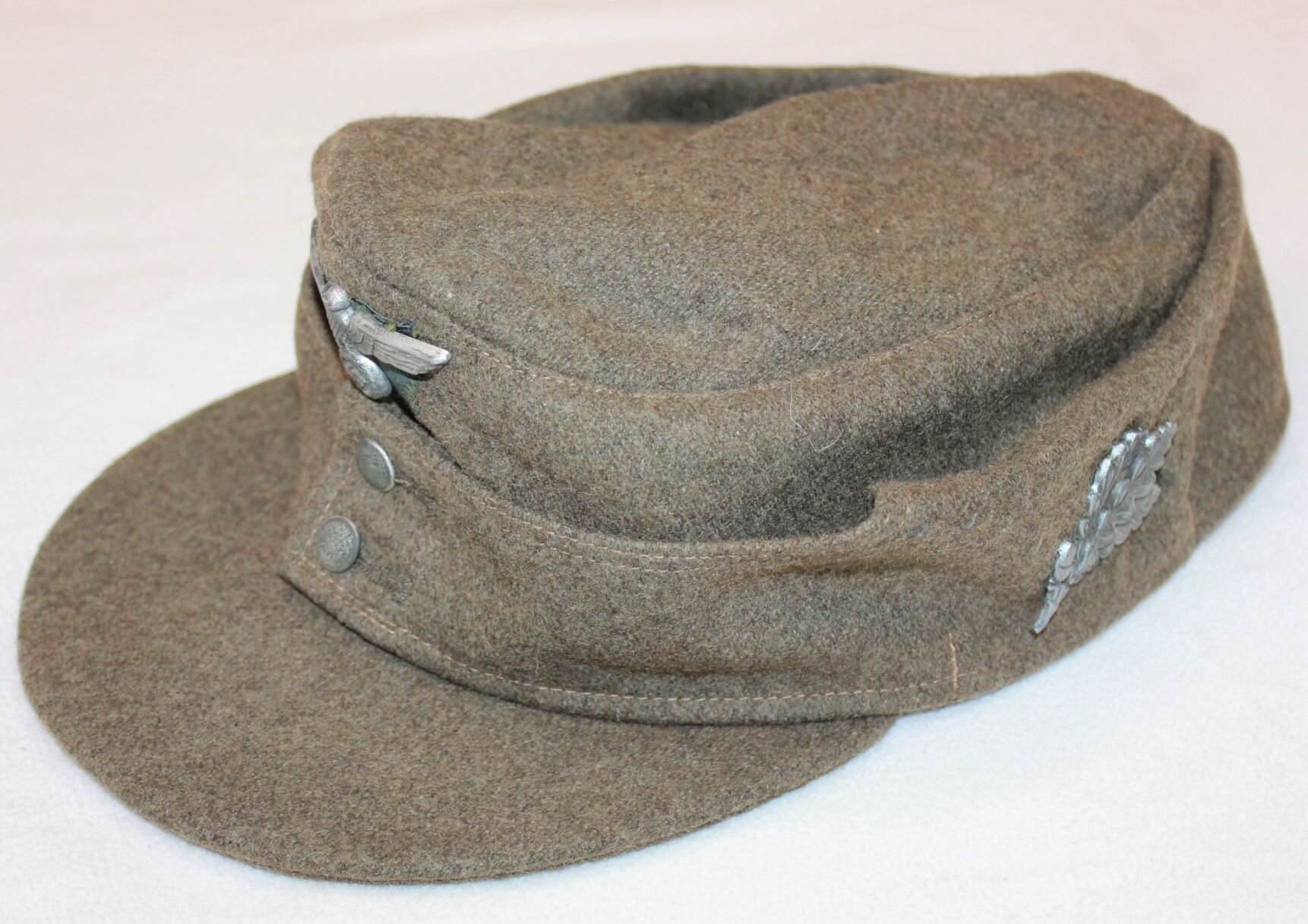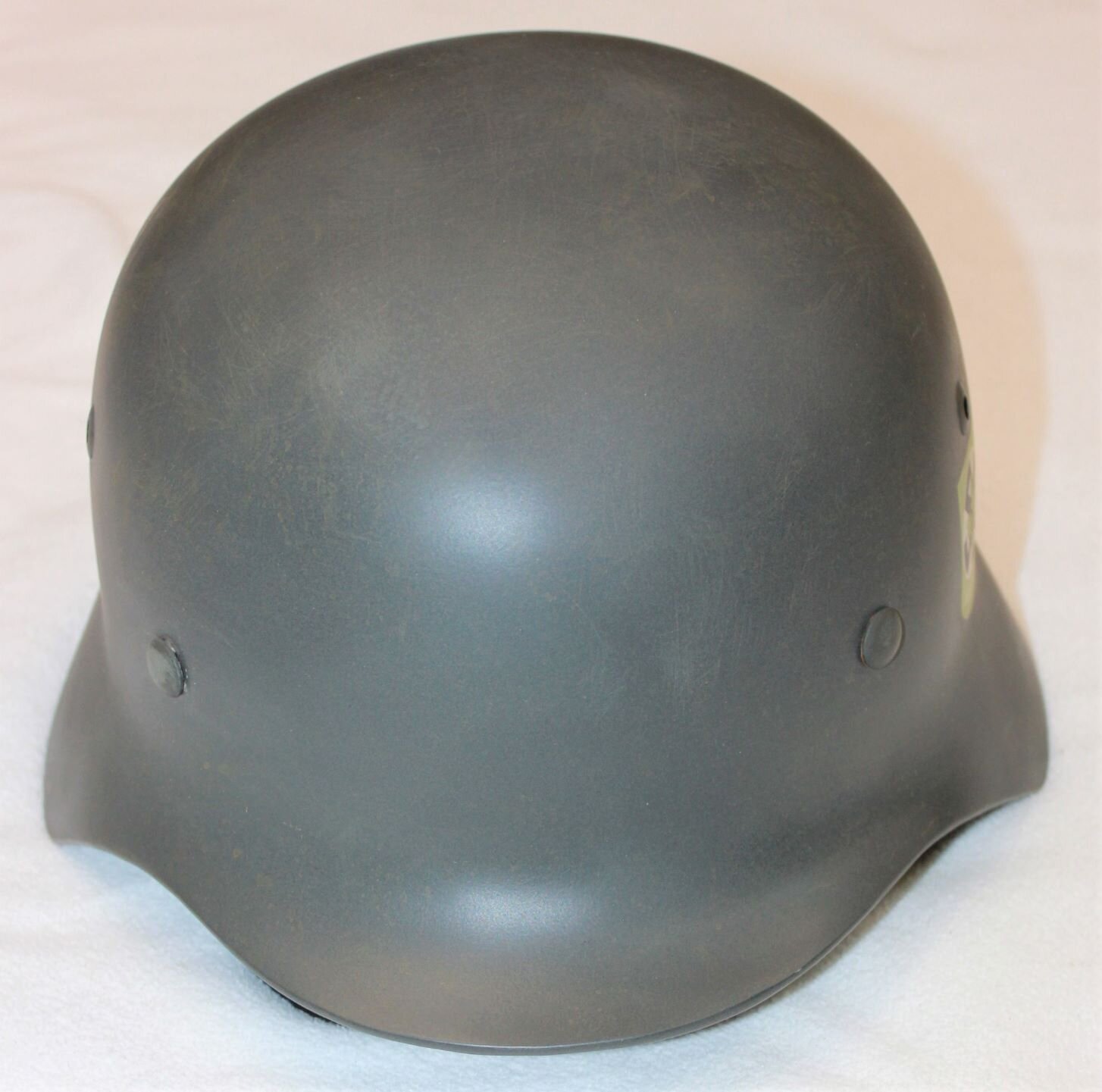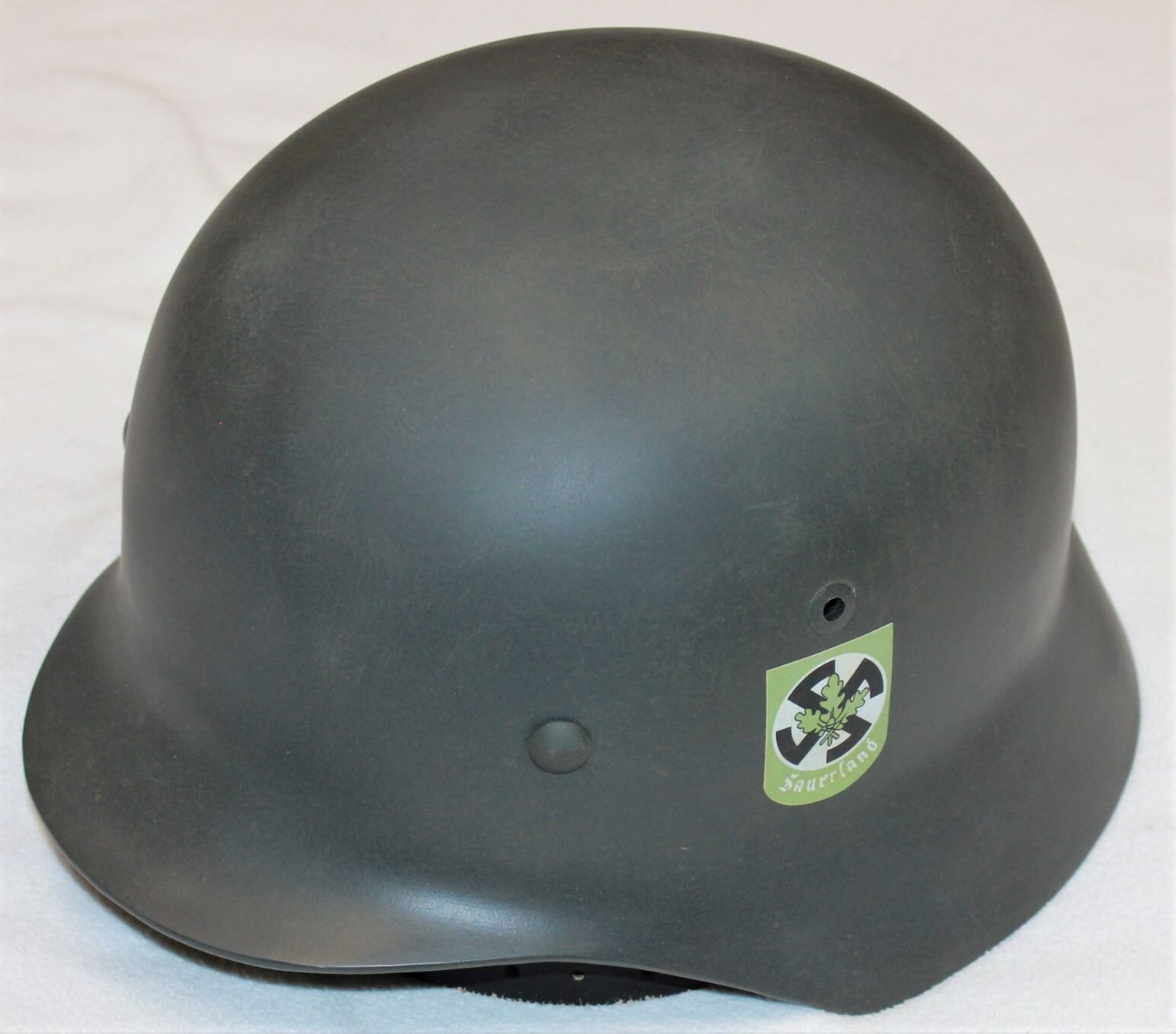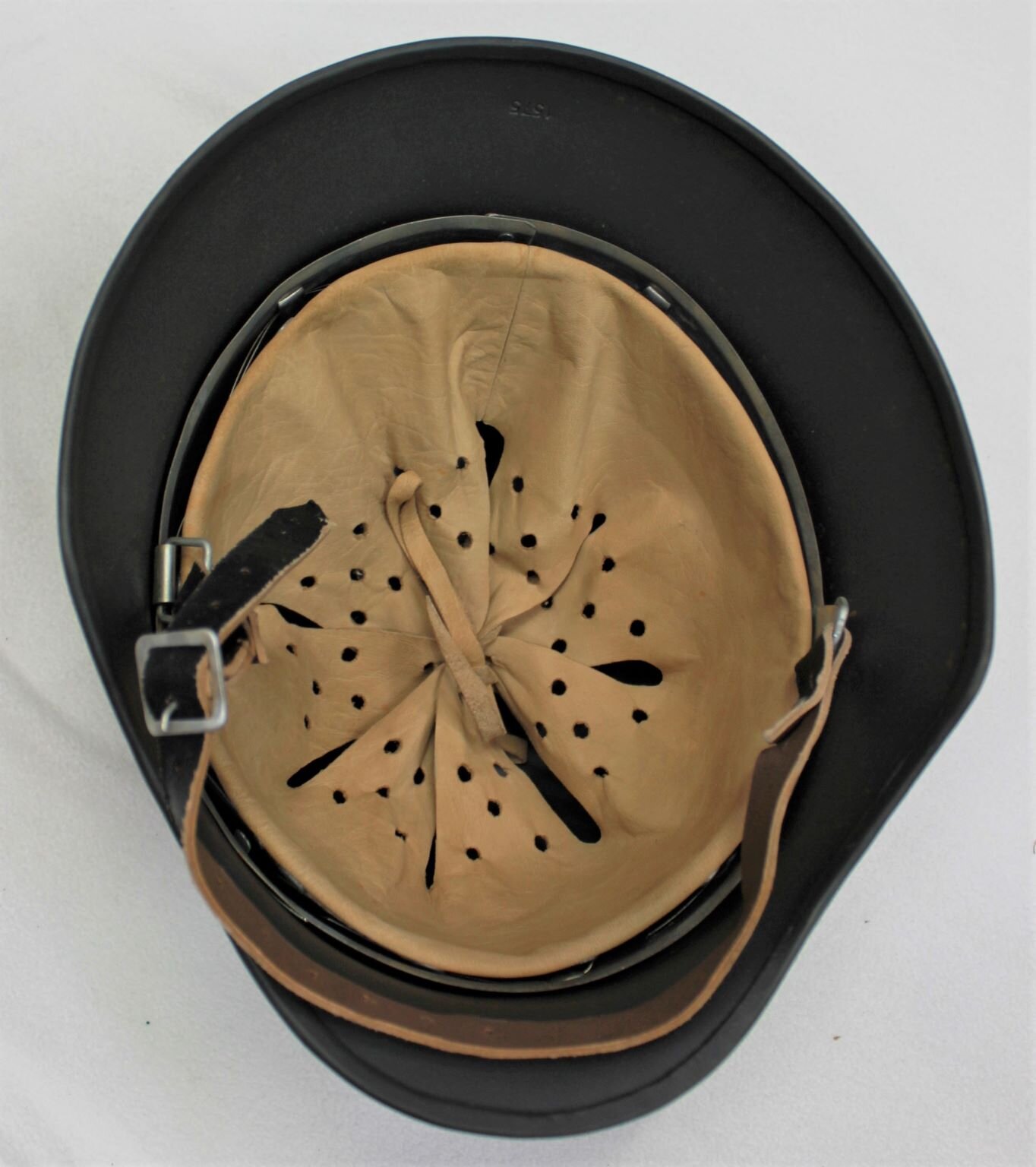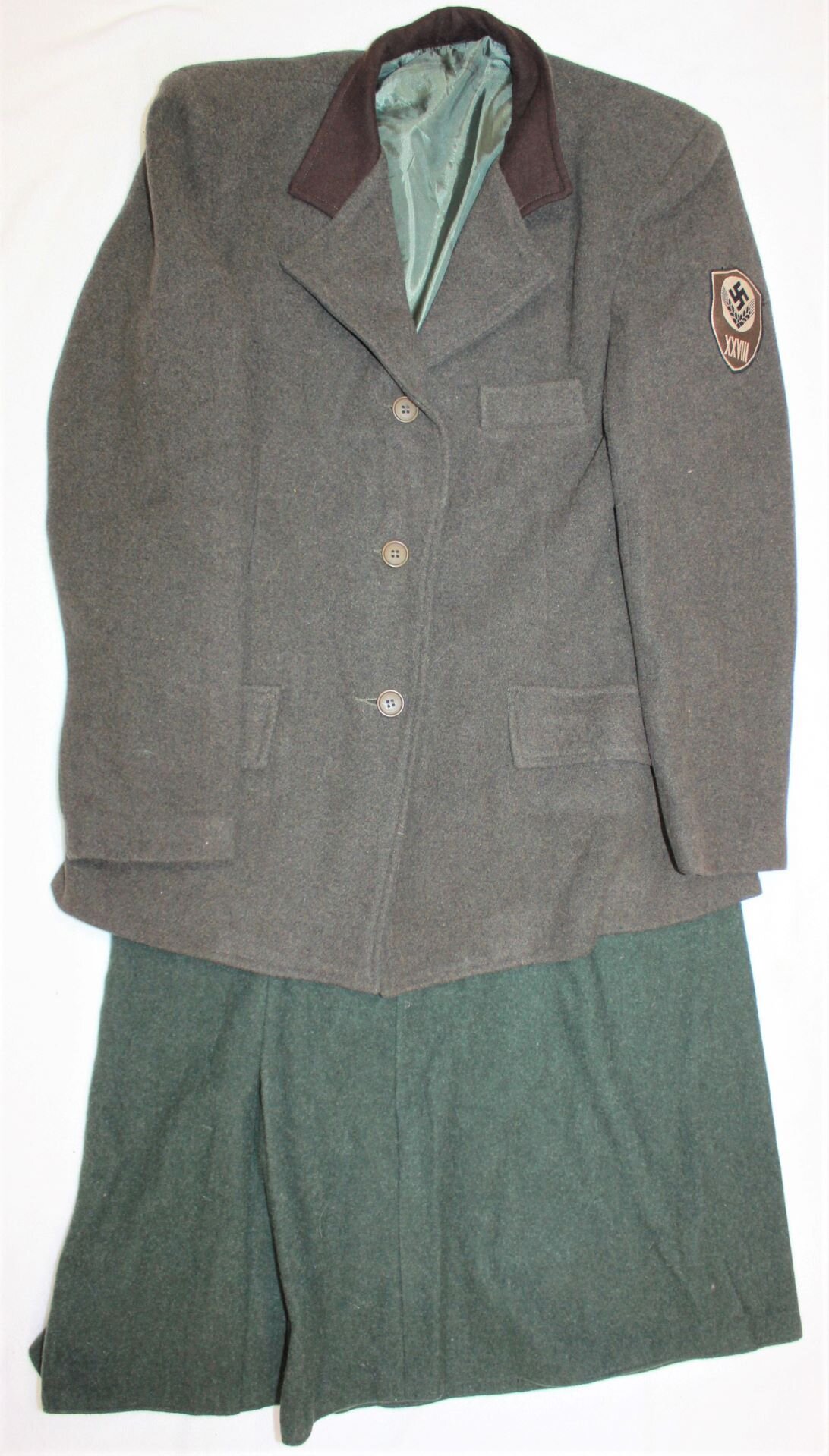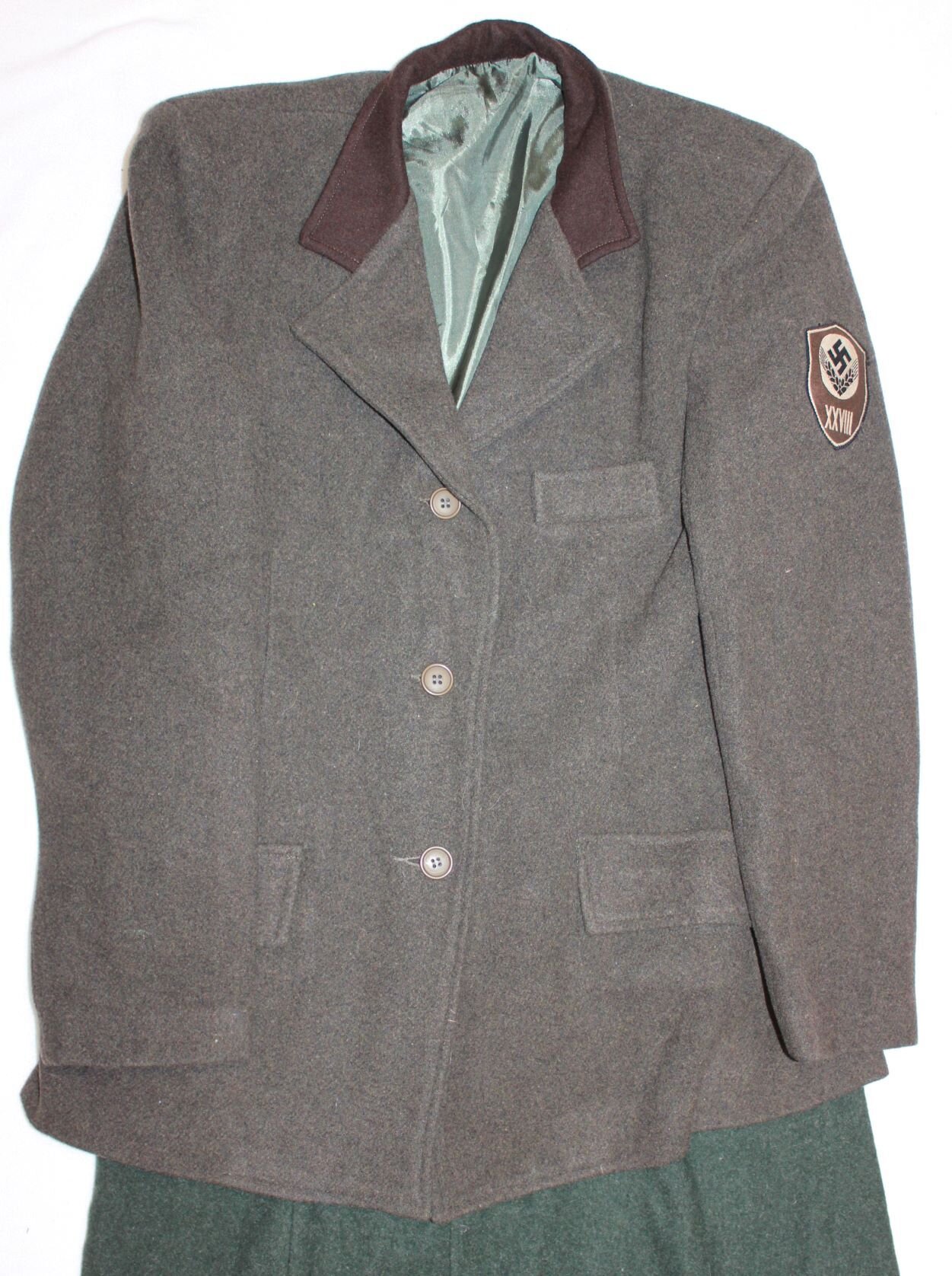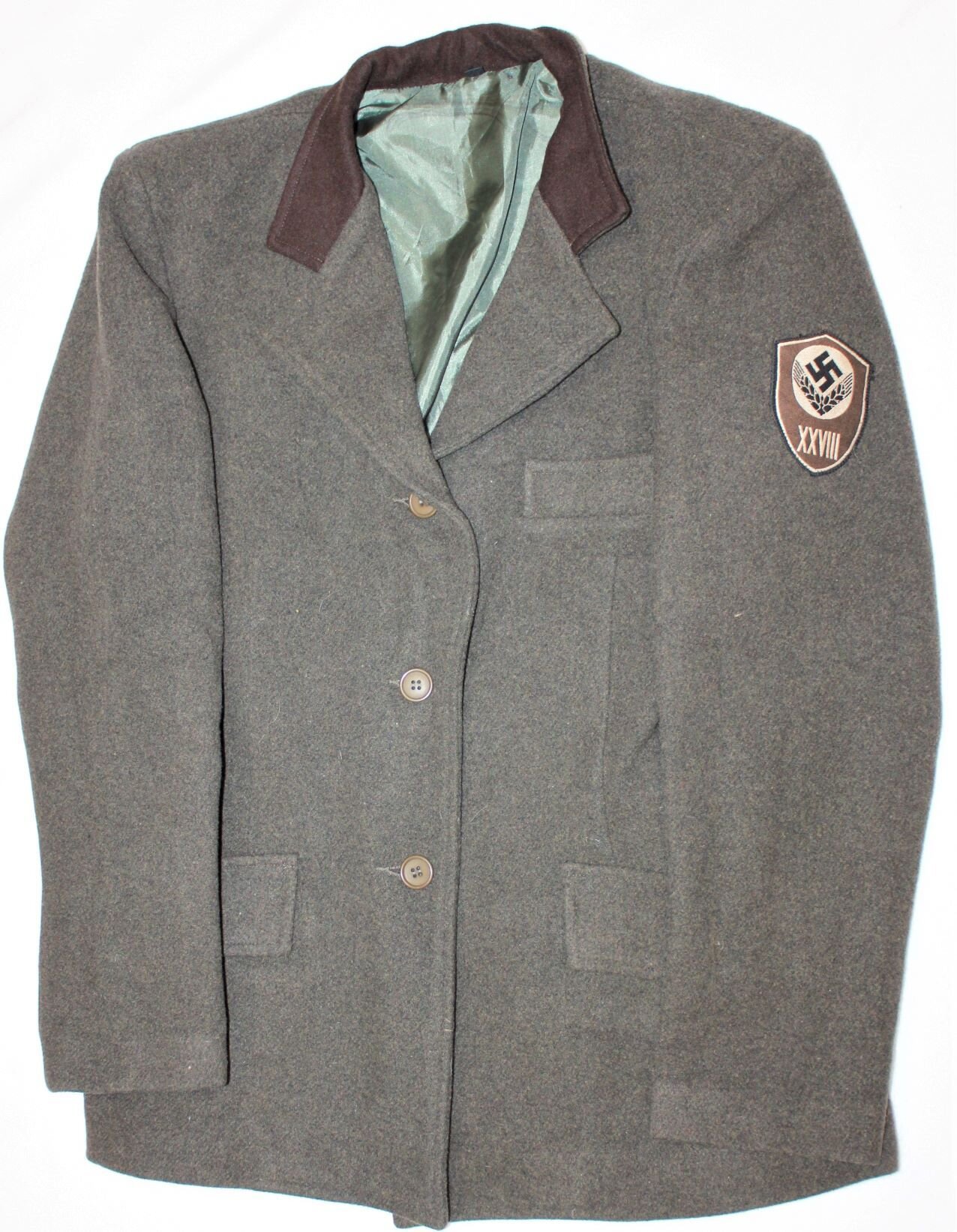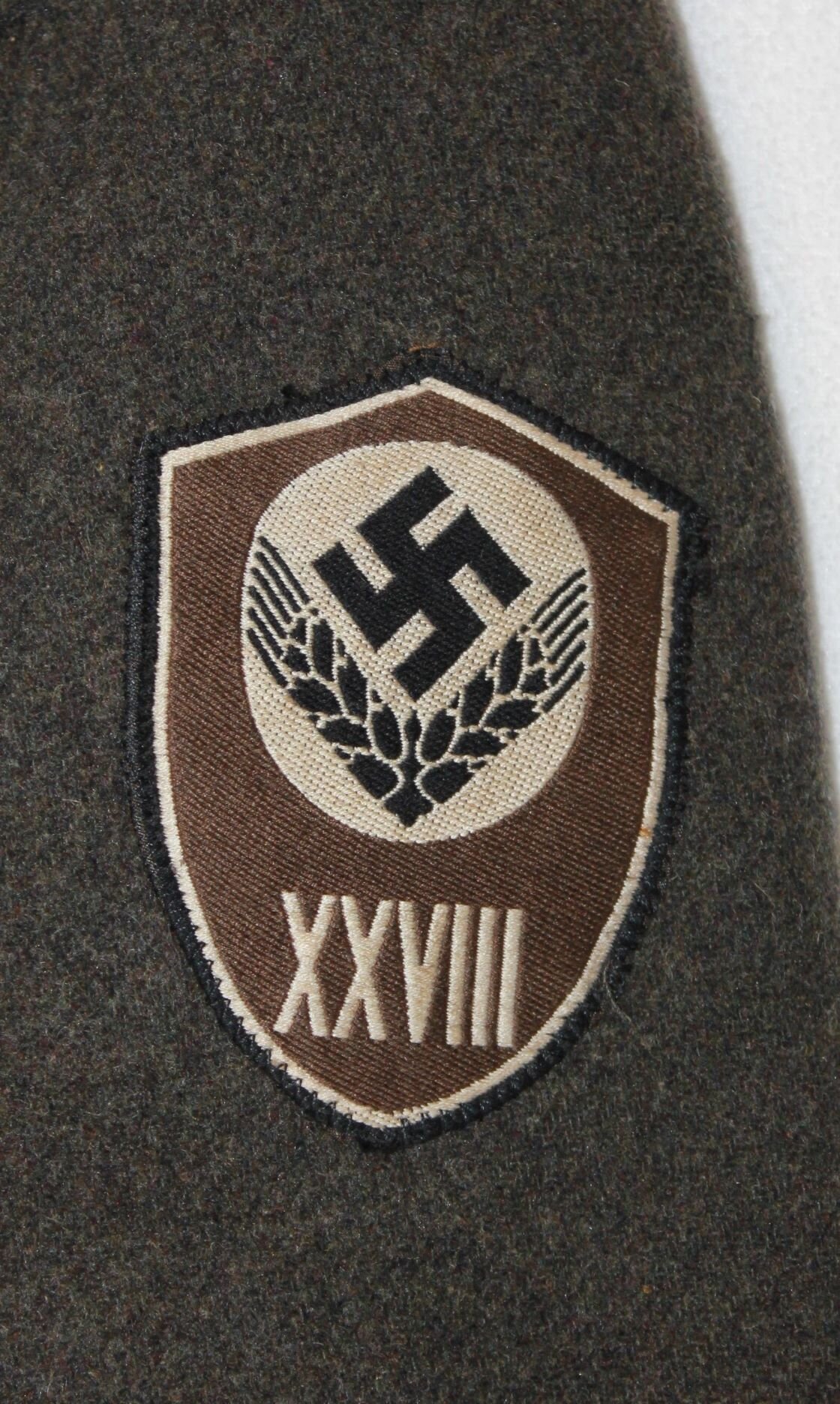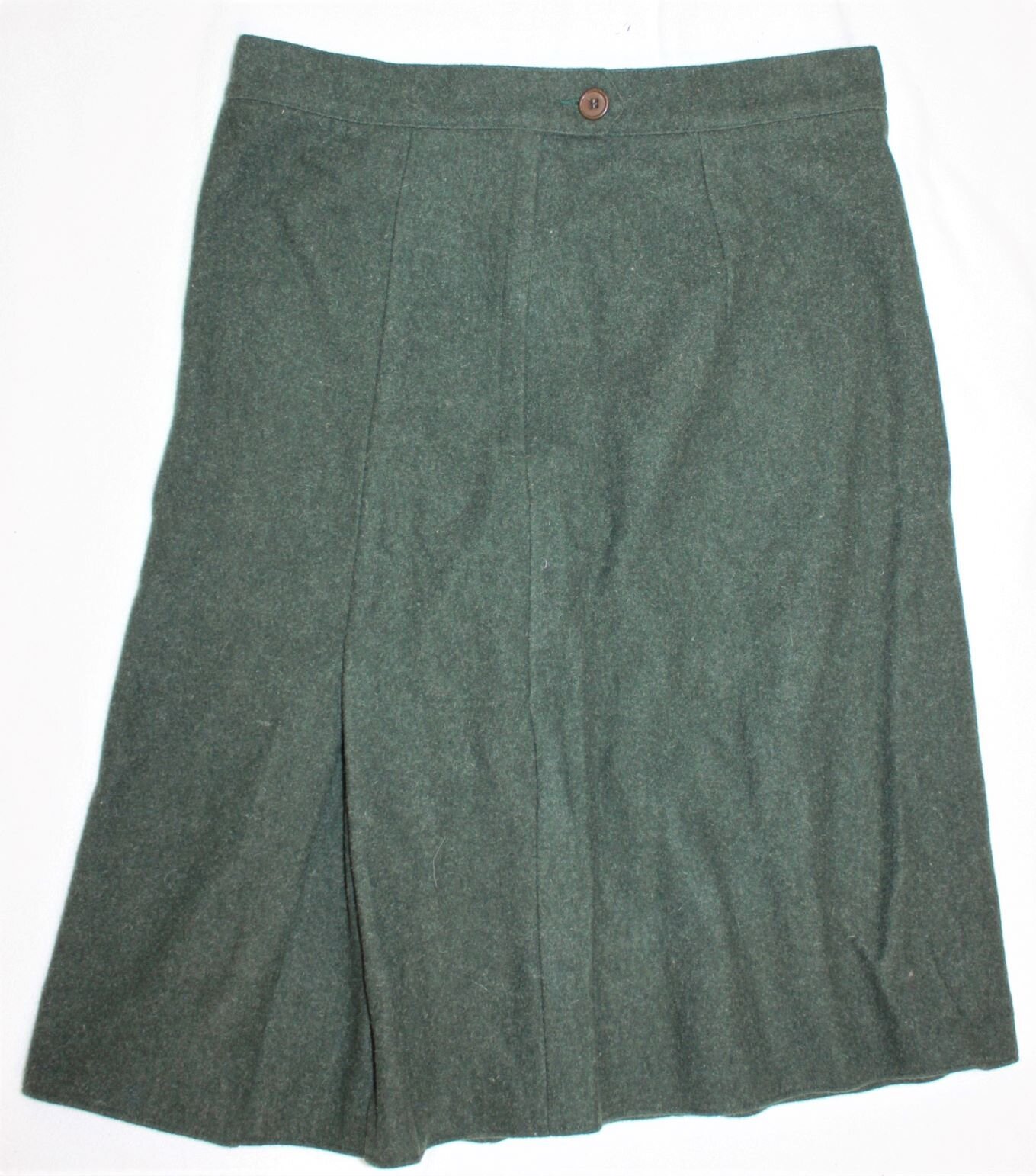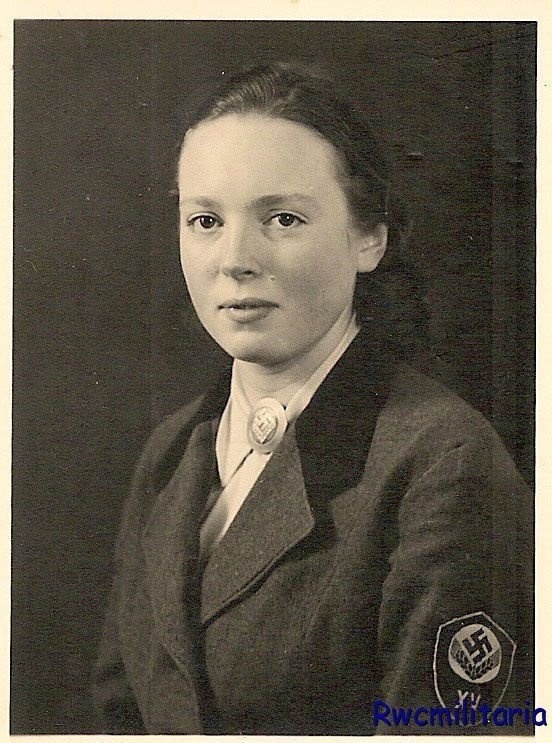Reichsarbeitsdienst (RAD) & (DRB) Uniforms:
RAD Oberfeldmeister, 261/2 Wurttemberg:
Following Hitler’s election as Chancellor in 1933, he soon appointed Konstantin Hierl as Secretary of State for the Labor Service, the control of which at this time was transferred from the state to the central government. There was considerable confusion in regard to the name of the labor service at this time; it was sometimes referred to as the FAD, sometimes as the Nationalsozialistischer. In June 1935, the formation of the Reichsarbeitsdienst replaced all other remaining labor organizations. Men aged between 18 and 25 had to serve six months before their military service. During the war period, compulsory service also included young women, and the RAD developed into an auxiliary formation that provided support for the Wehrmacht. The RAD was divided into two major sections: the Reichsarbeitsdienst Männer (RAD/M) for men and the voluntary, from 1939 compulsory, Reichsarbeitsdienst der weiblichen Jugend (RAD/wJ) for women.
AD Hauptvormann 301/1 Bayern-Hochland:
RAD Unterfeldmeister 353/7 Wien-Niederdonau:
The Reichsarbeitsdienst (RAD) was a major organization established as an agency to help mitigate the effects of unemployment on the German economy, militarize the workforce, and indoctrinate it with National Socialist ideology. It was the official state labor service, divided into separate sections for men and women. Established in 1931 by then Chancellor Heinrich Berning, the Reichsarbeitsdienst (RAD) was initially a state-sponsored labor group, the Freiwilliger Arbeitsdienst (FAD). The FAD opened camps around Germany to mitigate the depression era unemployment. FAD camps were controlled by the individual German states, their use varied greatly across the country, some for military training by the Freikorps. Following the establishment of the FAD, other similar organizations were founded by groups such as the Stahlhelm and the NSDAP.
This troop was generally issued a shovel to work with, rather than a rifle to shoot with. A bread bag with watter bollte, and a helmet, in this case a rare example of an early pattern, double decal RAD Stahlhelm.
RAD Untertruppenführer 323/1 Sarland Pfalaz:
The RAD was composed of 33 districts, each called an Arbeitsgau or Work District, similar to the Gau subdivisions of the NSDAP. Each of these districts was headed by an Arbeitsgauführer with headquarters staff and a Wachkompanie or Guard Company. Under each district were six to eight Arbeitsgruppen; battalion-sized formations of 1200– 1800 men. These groups were divided into six RAD Abteilungen. For the majority of those conscripted into the RAD, it was the second uniformed paramilitary organization of their life; the first being the Hitler-Jügend. Unlike the HJ, the RAD took the 18-year-old away from home and put him in a full-time barracks and military lifestyle. The new Arbeitsmann was issued with the brown collared olive-green uniform, a spade, and a bicycle. For the next six months, the Arbeitsmann worked long hours, often on military construction projects, while attending classes on military weapons, tactics, and equipment use. Arbeitsmanner marched and bicycled to work, and conducted military drills and ceremonies. Most of all, the 6 months of 76-hour work weeks and a hearty diet made the weakest fit for future service.
RAD troops supported Heer, Luftwaffe, and Kriegsmarine units on all fronts, from Norway to the Mediterranean Sea, and from France in the west to the far reaches of Russia in the east. Units served in Albania, Greece, and the former Yugoslavia. In the Soviet Union, they supported the Wehrmacht in its massive drives towards Moscow in 1941 and into the Caucasus Region in 1942. Many RAD units were encircled and forced into frontline combat, while other units were drafted directly into military service on the spot. In 1942, at least 427 RAD units were serving on the Eastern Front. Increasingly, in the fighting on the Eastern Front, RAD units were in direct combat against partisan forces and became part of security operations.
Service was not limited to the multitude of combat support roles listed above, though, as hundreds of RAD units were trained and later used as anti-aircraft units under the control of the Luftwaffe. Many saw service along the Western Front in the form of RAD Flak Batteries. In October of 1944, at least 60,000 RAD troops were known to have served in this capacity. When serving in RAD Flak Batteries, the troops were known as Luftwaffe-Flakhelfer. As the war reached its end in February of 1945, service in the RAD had been reduced to between 6 and 8 weeks’ time, while training was limited exclusively to infantry and anti-tank tactics. Although Hierl had avoided a move to join the RAD with the Deutsche Volksturm, which was formed as a last-ditch defense of the homeland, thus maintaining the independence of the RAD till the very end, the organization could not avoid conscription into the frontlines of the war. Six frontline units consisting of Reichsarbeitsdienst troops were formed, 3 of which are known to have seen limited but fierce action. Of special note were Gebirgsjager-Brigade Steiermark and Gebirgsjager-Brigade Enns.
RAD Flak Batterie Arbeitsmann 322/2, Work Jacket:
The Reichsarbeitsdienst (RAD) began in 1931 when Chancellor Heinrich Brüning authorized the formation of state-sponsored labor camps to help against unemployment, the Freiwilliger Arbeitsdienst (FAD). These camps were not political and were controlled by the individual German states; their use varied greatly across the country, some for military training by the Freikorps. Following the establishment of the FAD, other similar organizations were founded by groups such as the Stahlhelm and the NSDAP. When Hitler was elected Chancellor in 1933, he soon appointed Konstantin Hierl as Secretary of State for the Labor Service, the control of which at this time was transferred from the states to the central government. There was considerable confusion regarding the name of the labor service at this time; it was sometimes referred to as the FAD, sometimes as the Nationalsozialistischer. In June 1935, the formation of the Reichsarbeitsdienst replaced all other remaining organizations as the organization in which all men between the ages of 17 and 25 were required to serve a minimum of six months of duty. This organization had its roots in the NS-Freiwillige Arbeitsdienst, which was formed in 1931.
RAD troops supported Heer, Luftwaffe, and Kriegsmarine units on all fronts, from Norway to the Mediterranean Sea, and from France in the west to the far reaches of Russia in the east. Units served in Albania, Greece, and the former Yugoslavia. In the Soviet Union, they supported the Wehrmacht in its massive drives towards Moscow in 1941 and into the Caucasus Region in 1942. Many RAD units were encircled and forced into frontline combat, while other units were drafted directly into military service on the spot. In 1942, at least 427 RAD units were serving on the Eastern Front. Increasingly in the fighting on the Eastern Front, RAD units were in direct combat against partisan forces and became part of security operations.
Service was not limited to the multitude of combat support roles listed above, though, as hundreds of RAD units were trained and later used as anti-aircraft units under the control of the Luftwaffe. Many saw service along the Western Front in the form of RAD Flak Batteries. In October of 1944, at least 60,000 RAD troops are known to have served in this capacity. When serving in RAD Flak Batteries, the troops were known as Luftwaffe-Flakhelfer.
As the war reached its end in February of 1945, service in the RAD had been reduced to between 6 and 8 weeks’ time, while training was limited exclusively to infantry and anti-tank tactics. Although Hierl had avoided a move to join the RAD with the Deutshce Volksturm, which was formed as a last-ditch defense of the homeland, thus maintaining the independence of the RAD till the very end, the organization could not avoid conscription into the frontlines as the war progressed. Six frontline units consisting of Reichsarbeitsdienst troops were formed, 3 of which are known to have seen limited but fierce action. The following units are known to have been formed: RAD-Division z.b.V.1/Infanterie-Division Albert Leo Schlageter, RAD-Division z.b.V.2/Infanterie-Division Friedrich Ludwig Jahn, RAD-Division z.b.V.3/Infanterie-Division Theodor Körner, RAD-Division z.b.V.4/Infanterie-Division Güstrow, Gebirgsjager-Brigade Steiermark, and Gebirgsjager-Brigade Enns.
The Arbeitsmann wears a late-war lightweight fatigue Bluse while serving in a warm weather climate such as Greece or Yugoslavia. On the inner flap, there are tailor’s measurements, and stamped in black “Deutsche Kleidung Verksitten” (German Clothing Verksitten). The bluse has both rank-identifying shoulder and collar insignia. On the shoulder is the standard RAD Späten insignia with his battalion’s identifying number. Serving in a capacity as a combatant with the military, he wears a Deutsche Wehrmacht armband. With the uniform, he wears a lightweight Einheitsfeldmütz Model 43 cap with RAD insignia. Issued for combat, the “Deutsche Wehrmacht” armband denoting military status, a helmet, and some kit, hopefully ammunition.
Volksturmmänner Freikorps Sauerland Deutscher Volkssturm Gau 39 Batl. XXI:
The Freikorps Sauerland was established by order of Gauleiter Albert Hoffmann in September 1944. In October 1944, the Freikorps was accepted by the Party Chancellery and associated with the Volkssturm.
Hoffmann considered the Freikorps Sauerland an "elite unit" in the defense of Gau Westfalen-Süd. The unit only accepted volunteers into its ranks. The Freikorps fought in the Ruhrkessel (the Ruhr Pocket), suffering heavy losses in April 1945. Freikorps members wore uniforms issued to the Reichsarbeits Dienst (the National Labor Service). A white Ärmelstreifen bearing the inscription Freikorps Sauerland is worn on the left cuff. A green, white, and black sleeve shield, in either embroidered or printed form, was sewn to the upper right sleeve.
The member’s rank is shown with two SS-style Litzen. If the member was a leader, silver metal rank stars were added (see the table). Most period photos show no Schulterklappen being worn. There seems to be much variance in how the members wore insignia.
By the time Freikorps Sauerland engaged in combat, members had been issued the Deutsche Volkssturm Wehrmacht armband. This armband officially denoted the member as a military combatant. The armband was placed in various positions on the left sleeve of the Bluse.
Deciphering the Deutsche Volkssturm Erkennungsmarken: The 39 indicates Gau Westfalen-Süd. The Roman Numeral XXIII is the 23. Bataillon. 1. indicates the division of the Deutsche Volkssturm. 17 is the member’s Stamrollen nummer assigned by the unit. Following the defeat in the Ruhrkessel, the Freikorps quietly dissolved, in the same pattern as the sleeve patch was fixed to the Freikorps Stahlhelm. A period photo shows a member wearing the M43 Einheitsfeldmütz with a metal Jäger cap oakleaf device.

